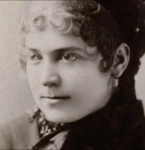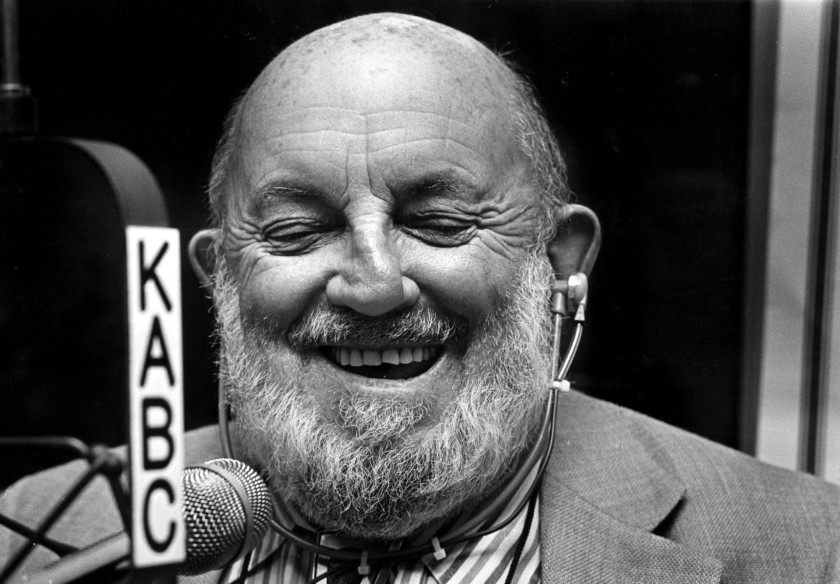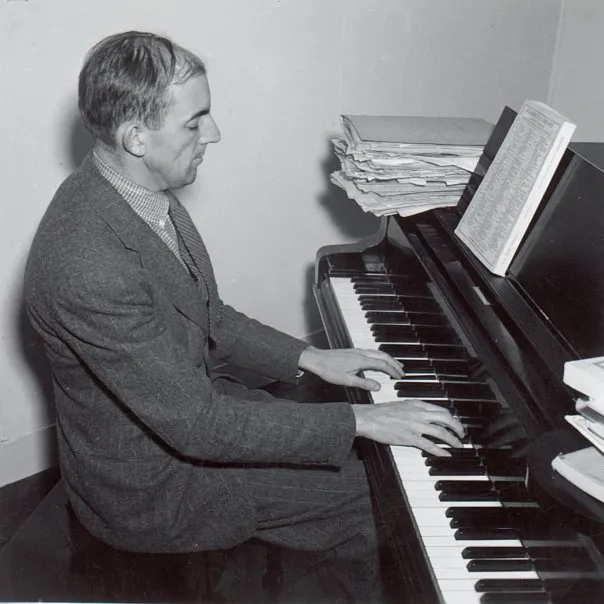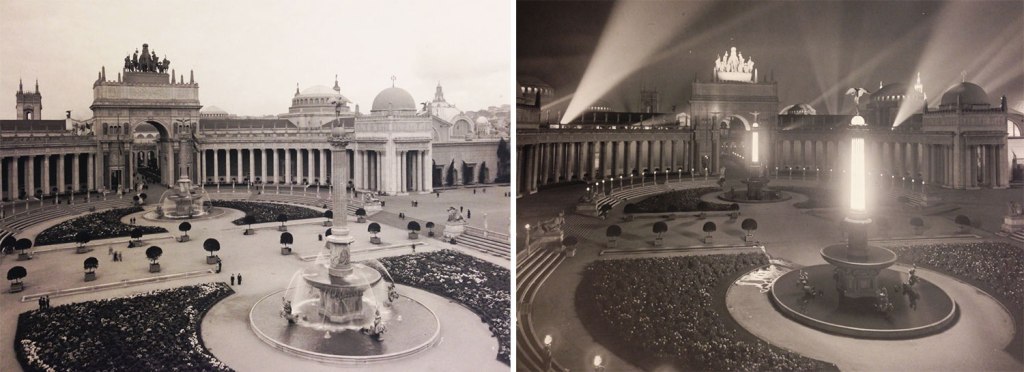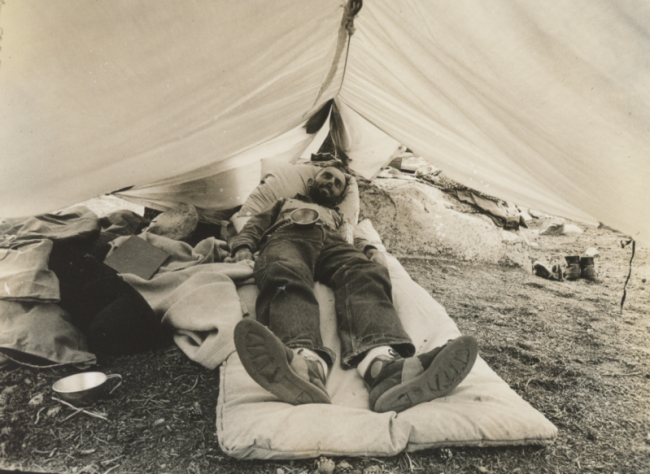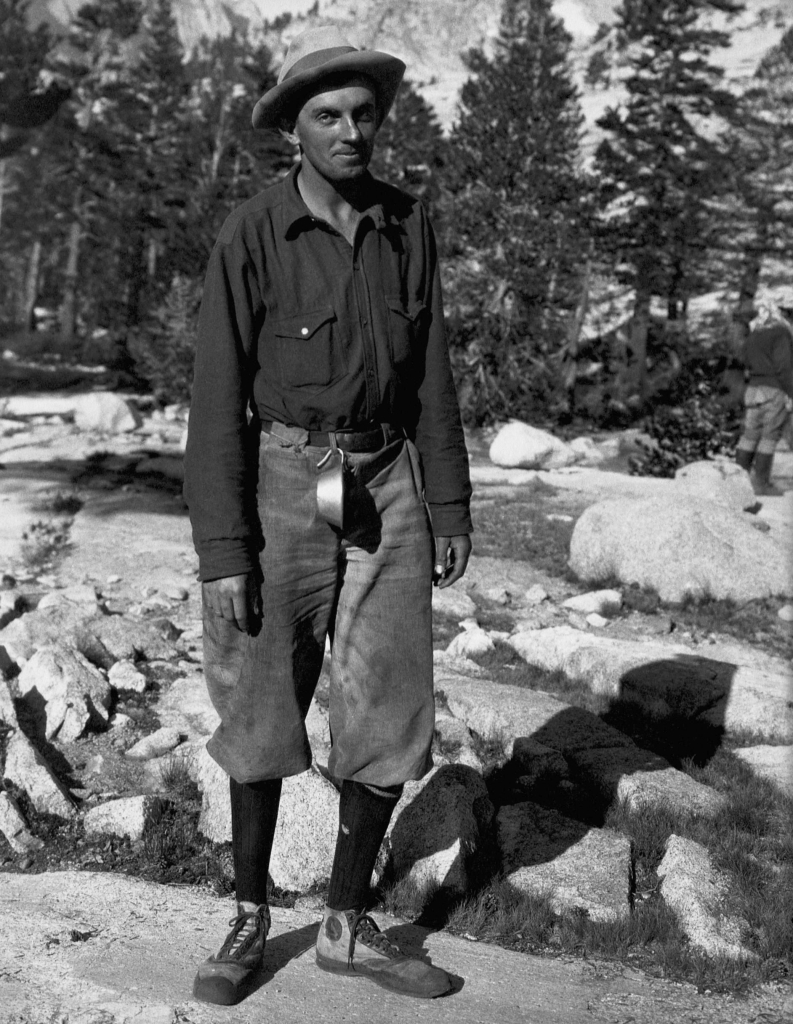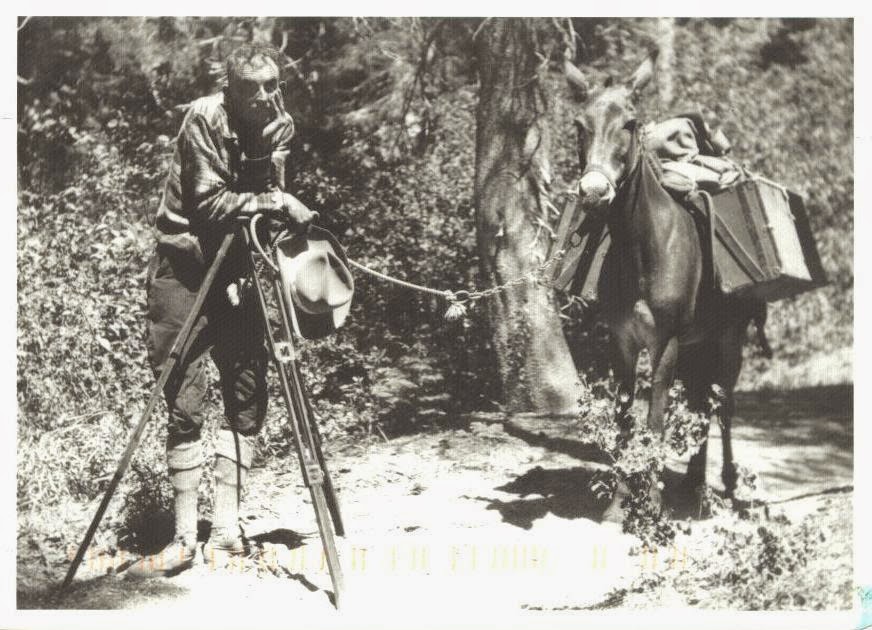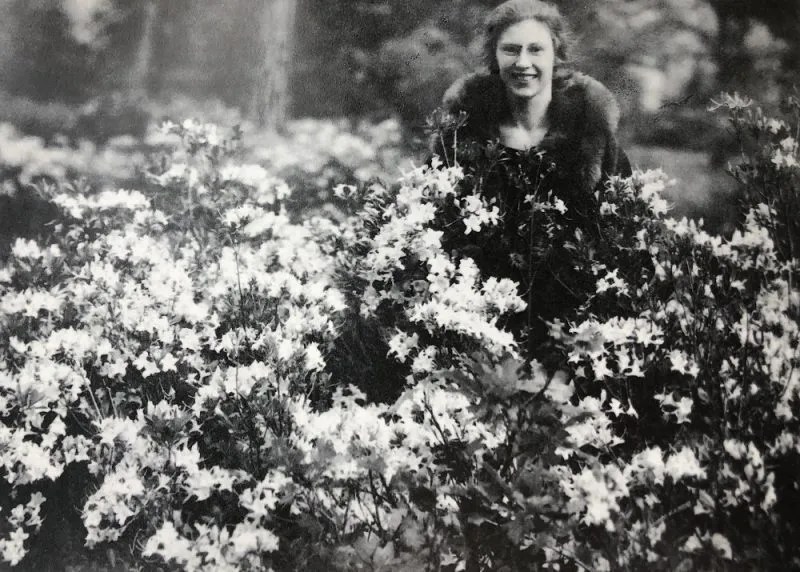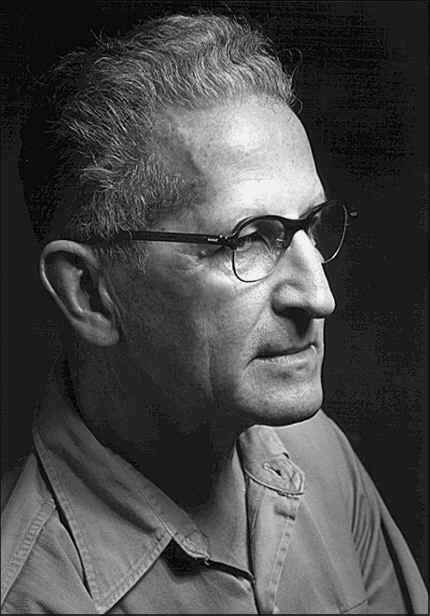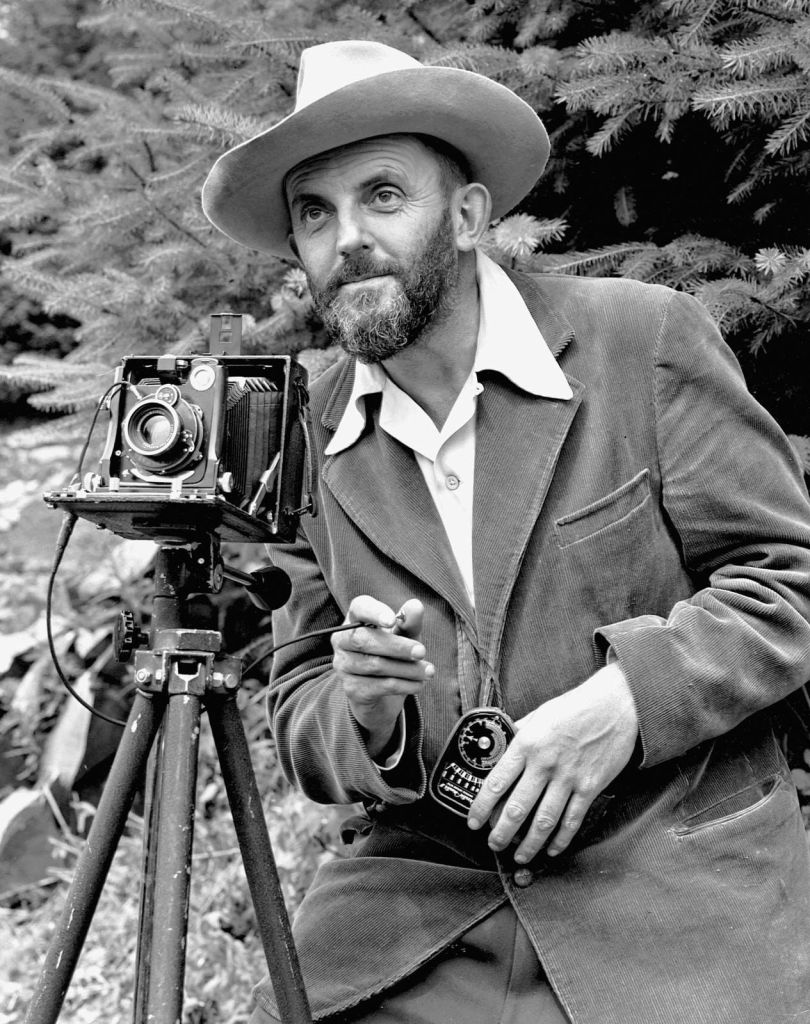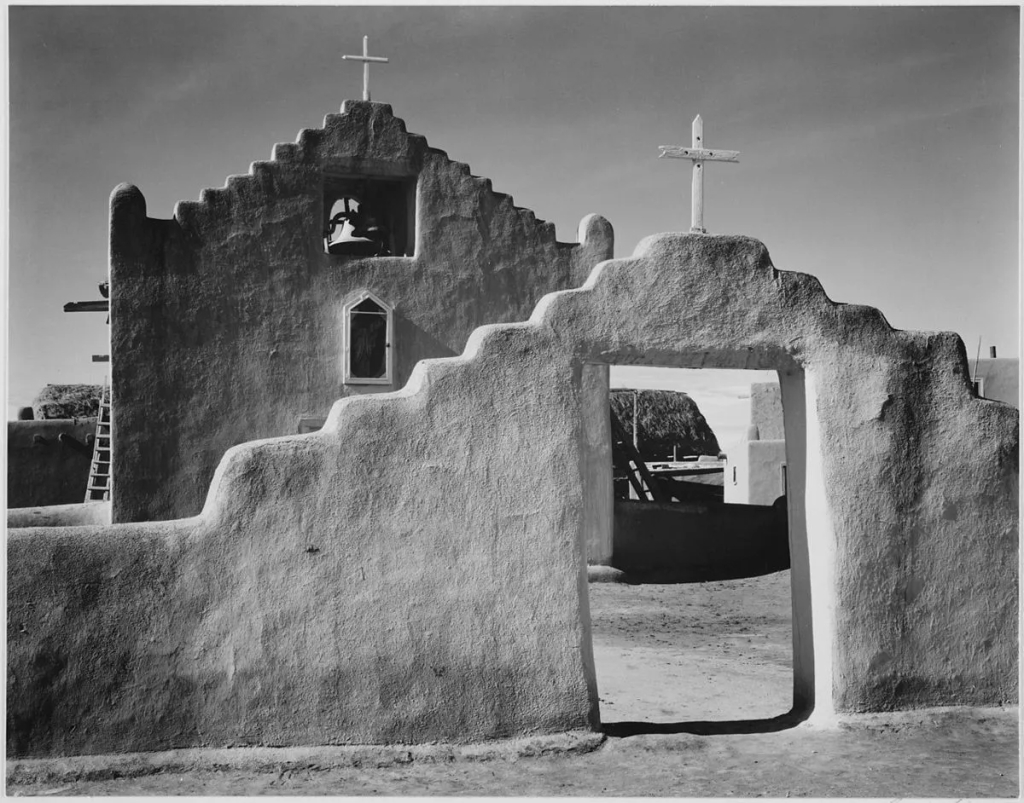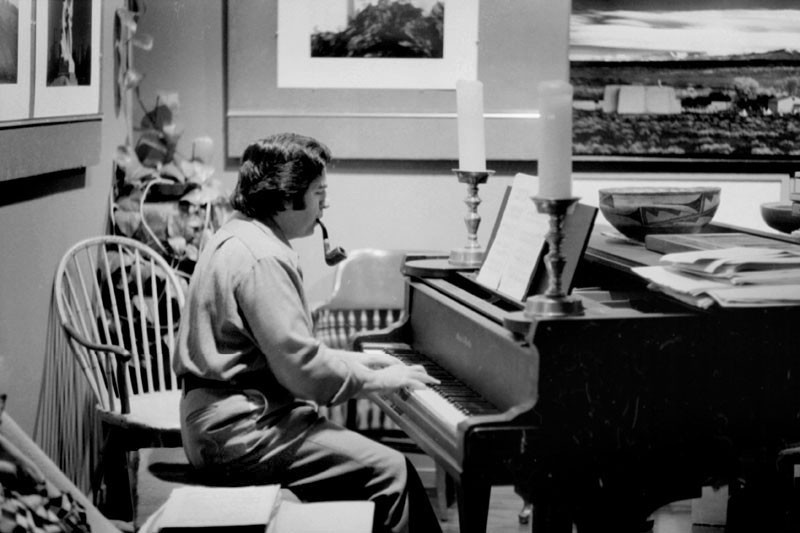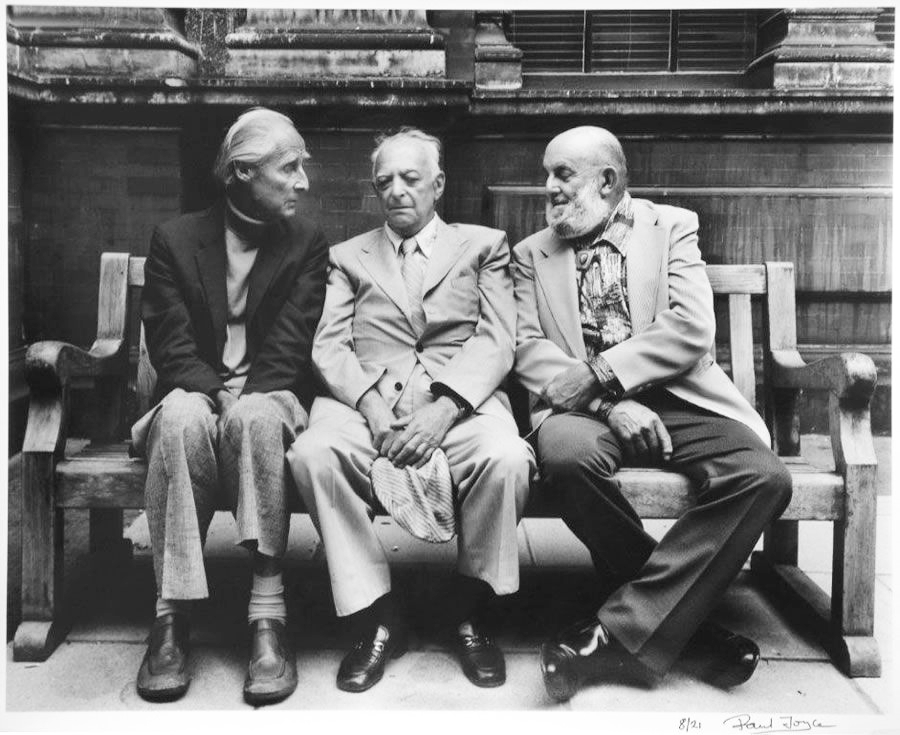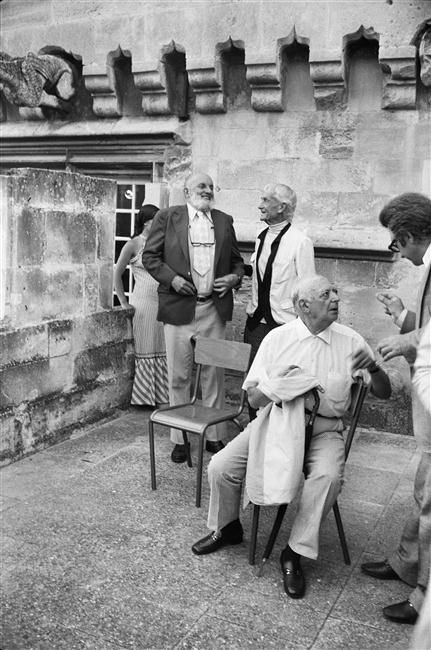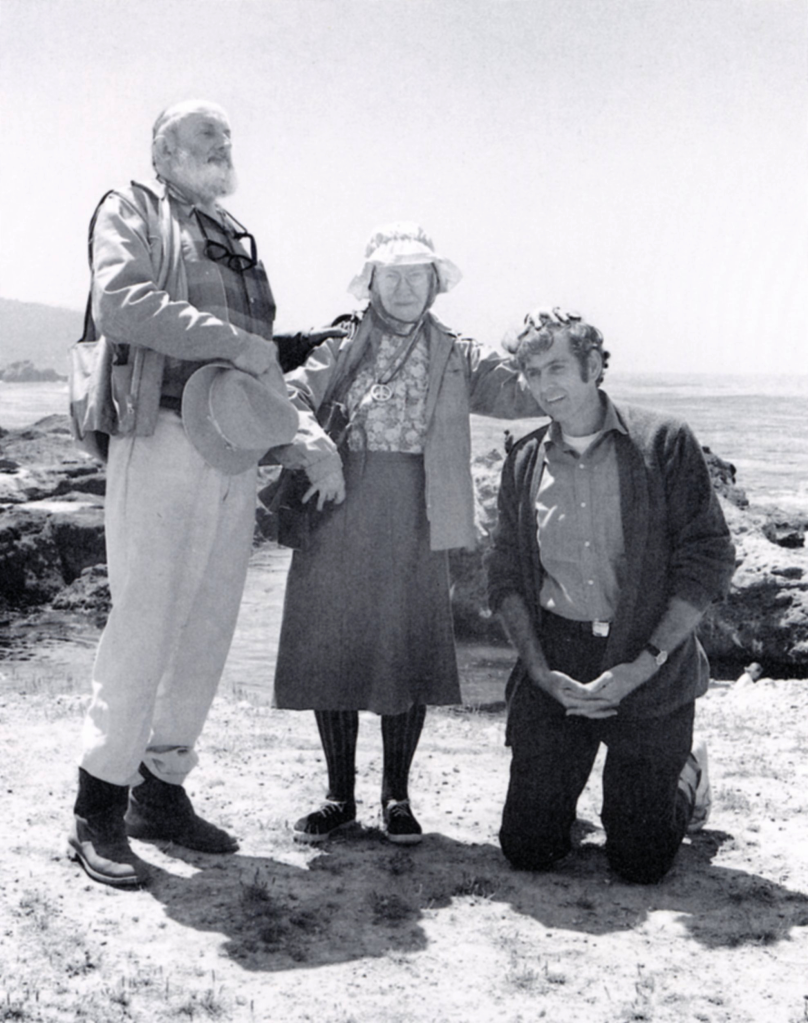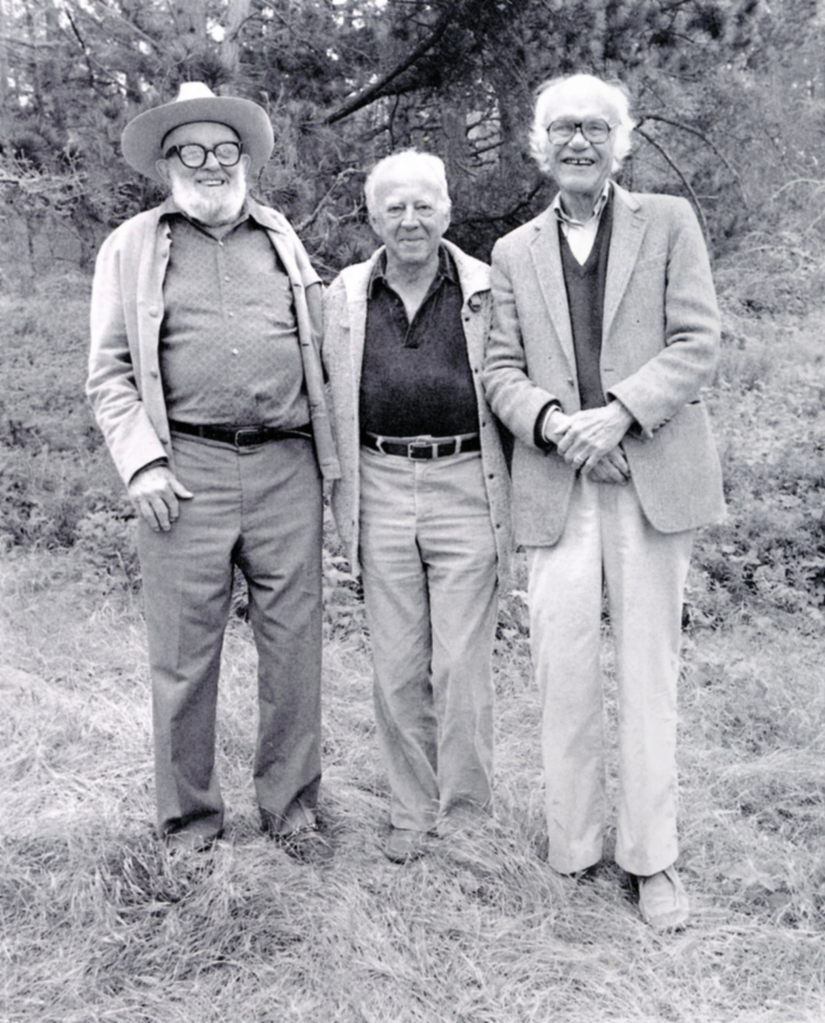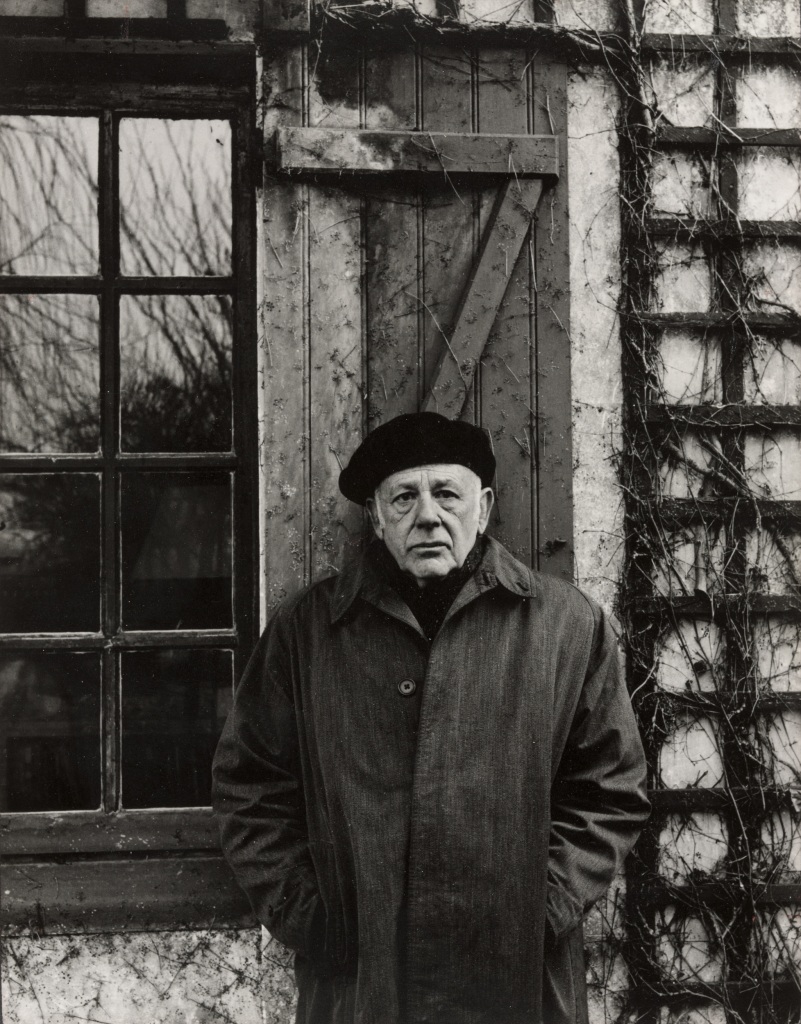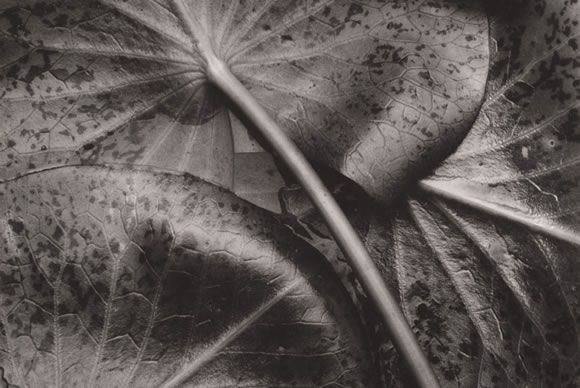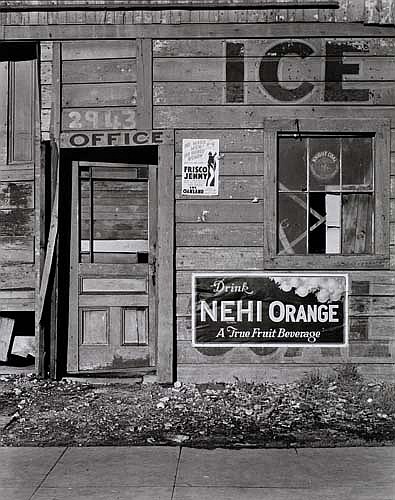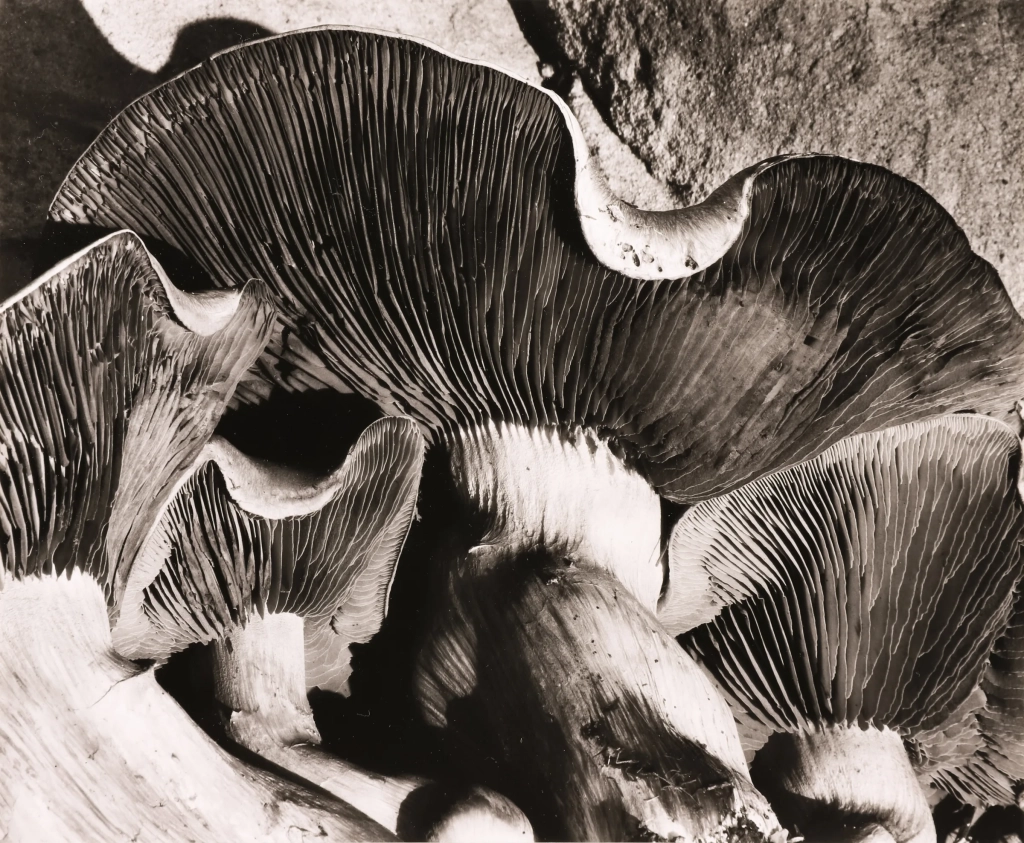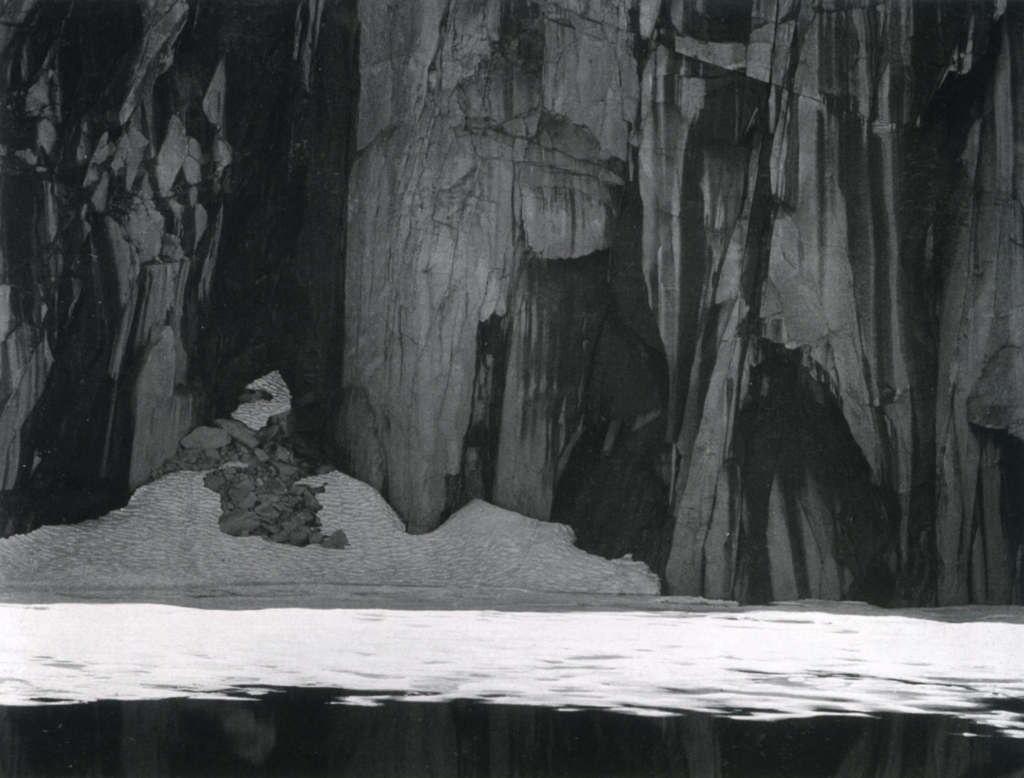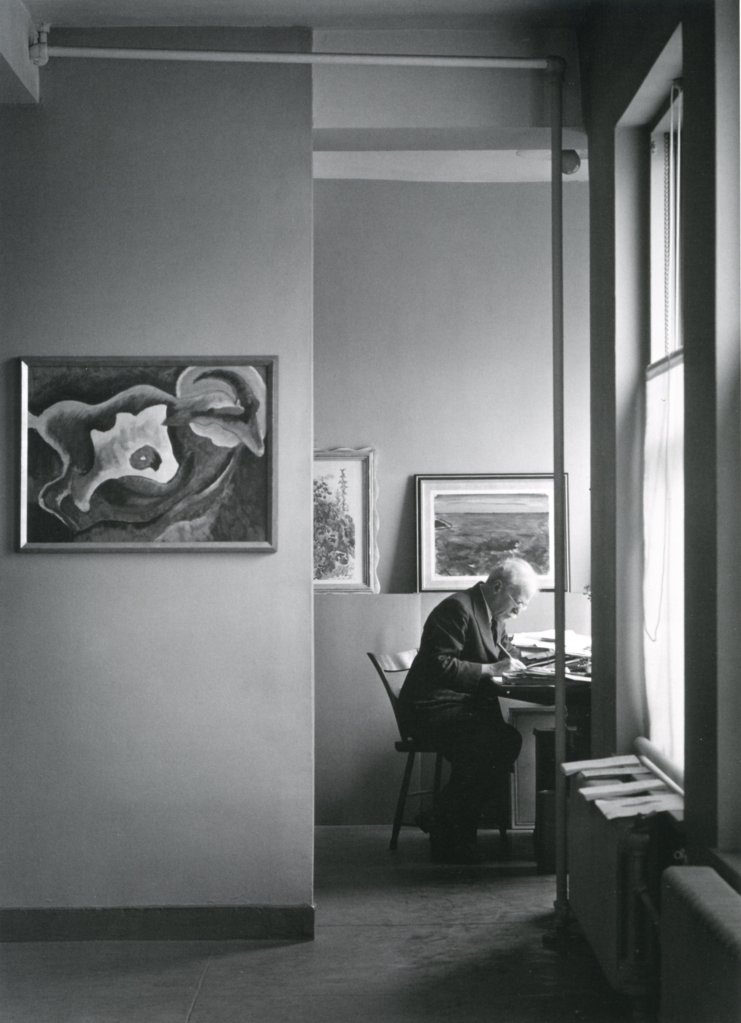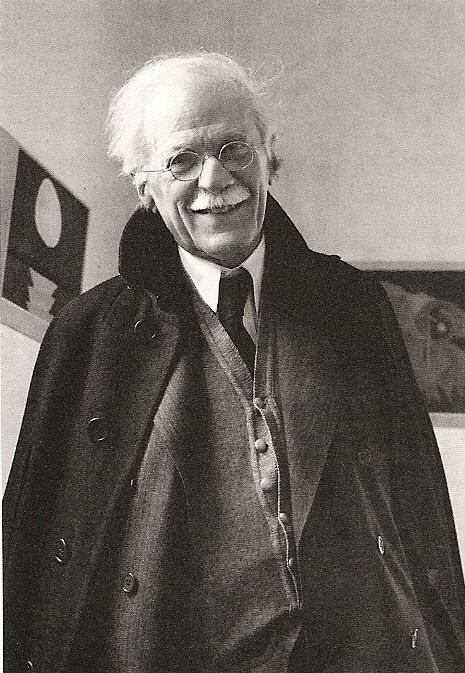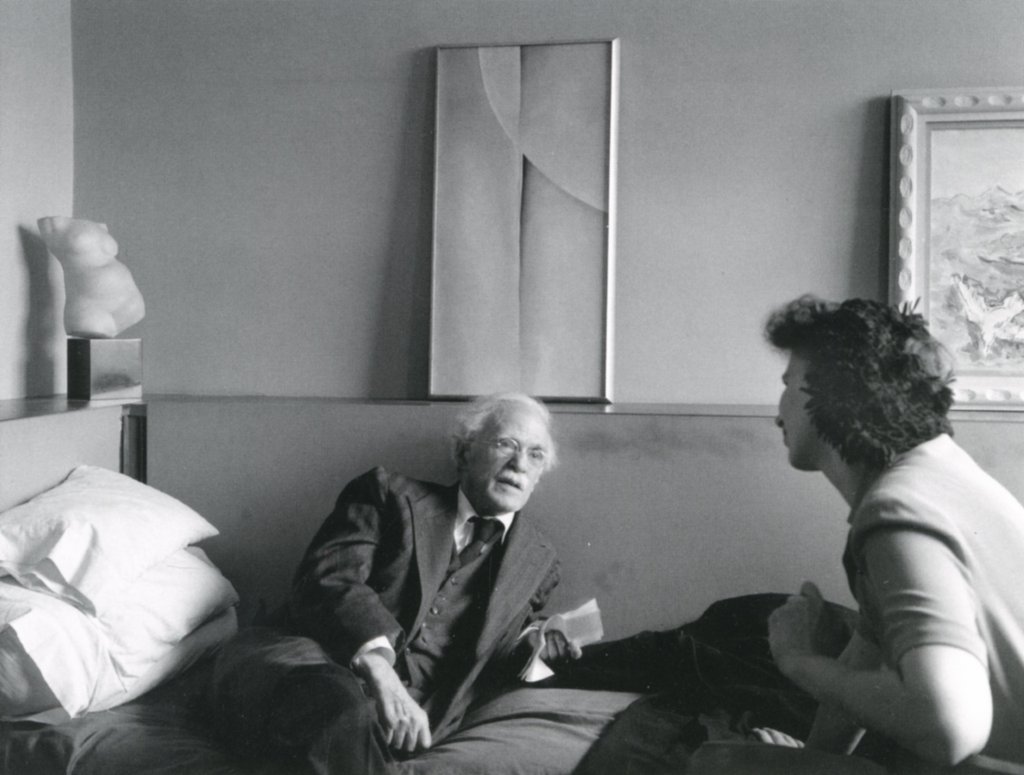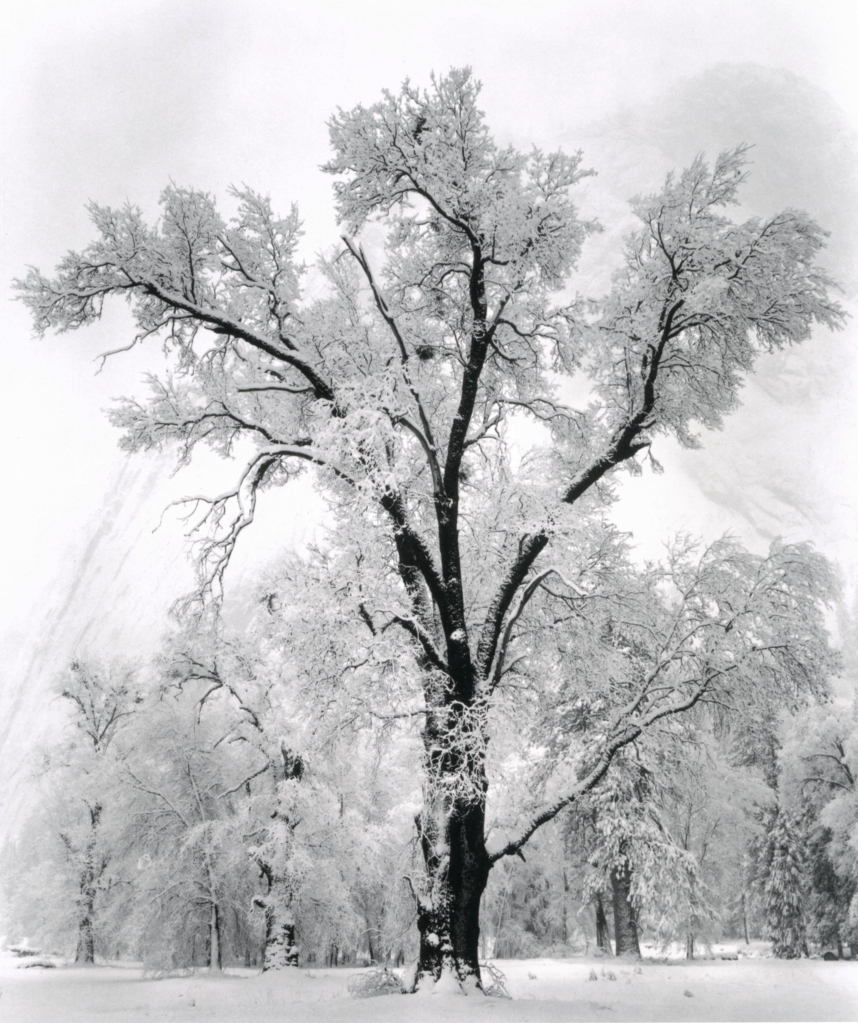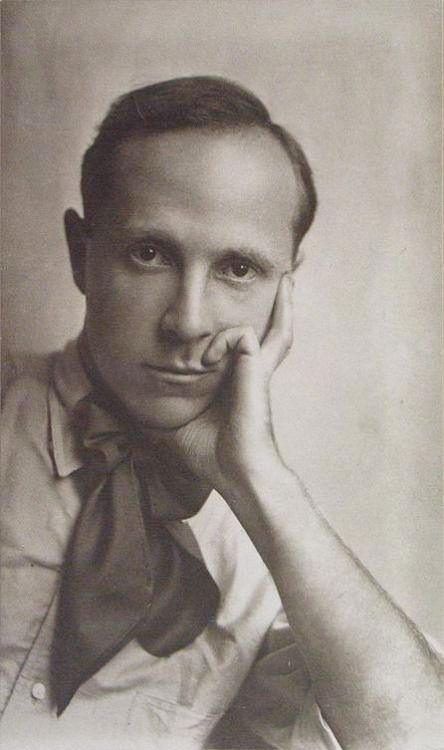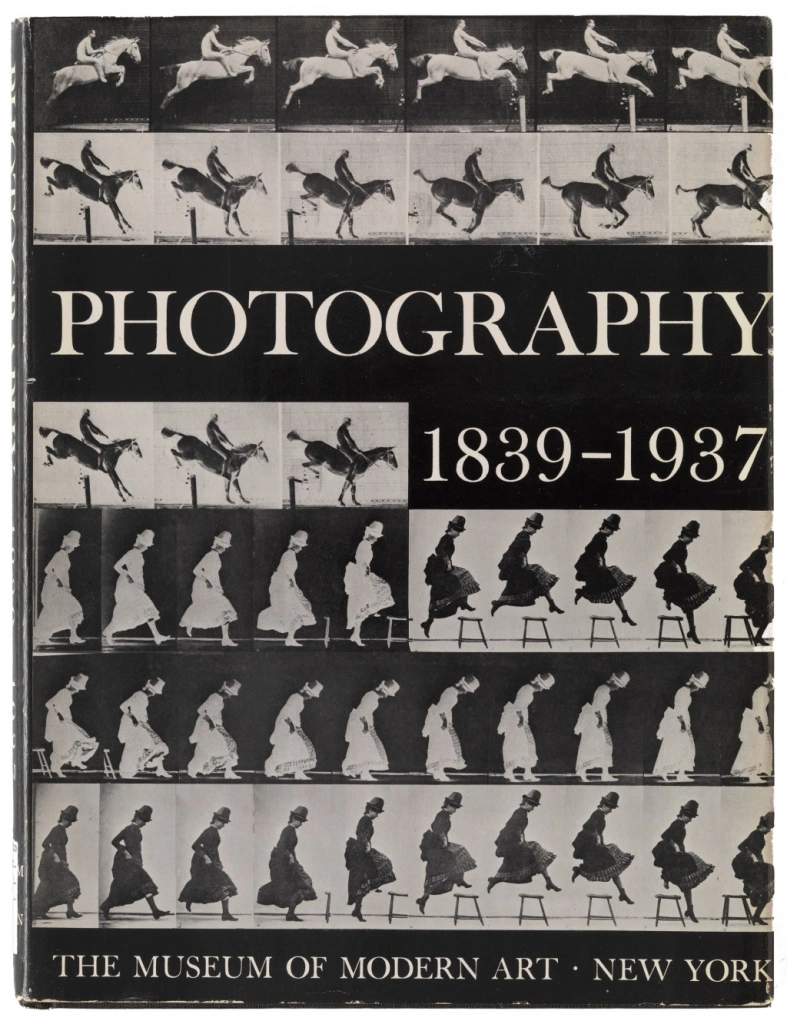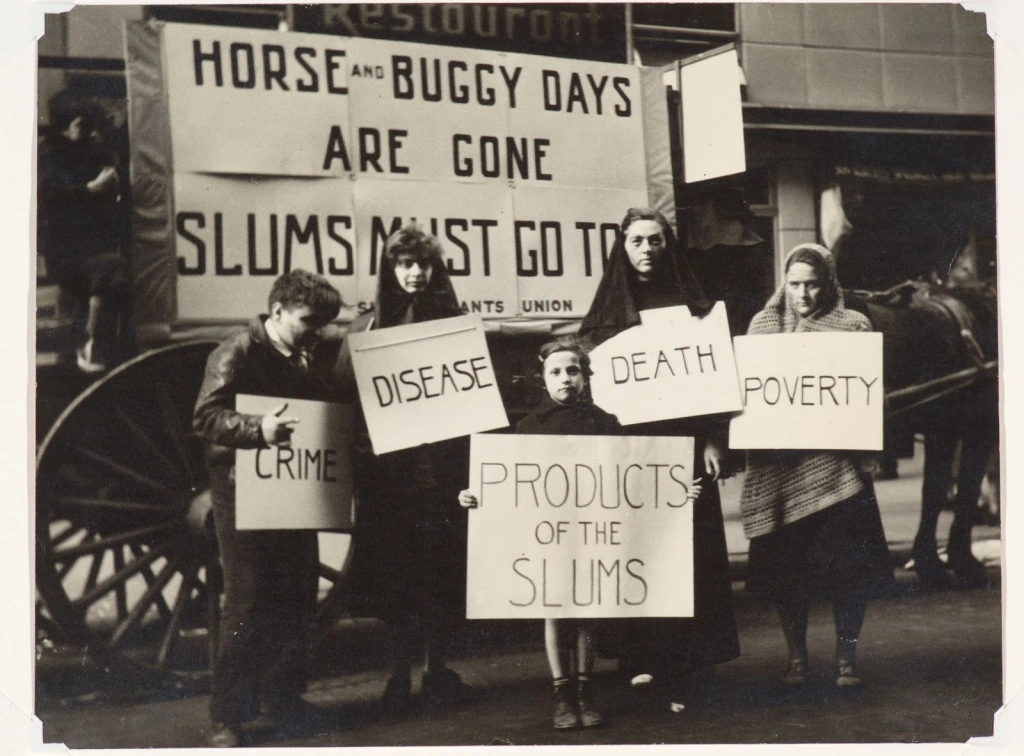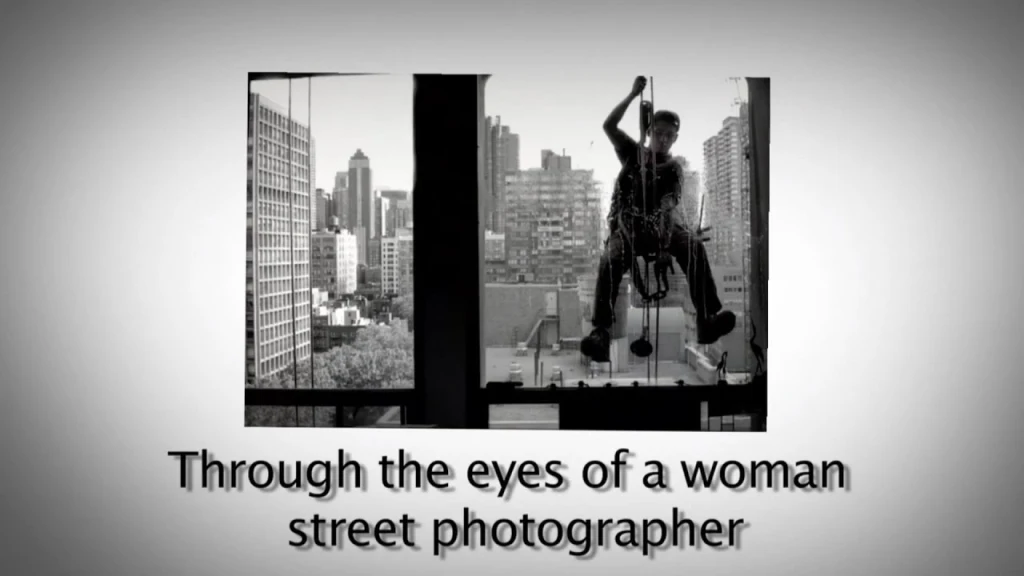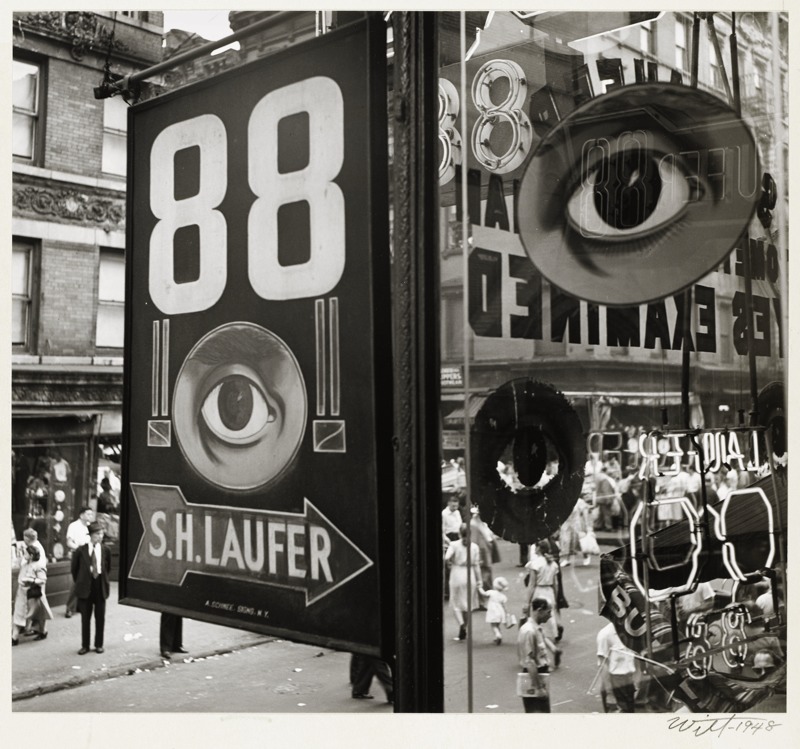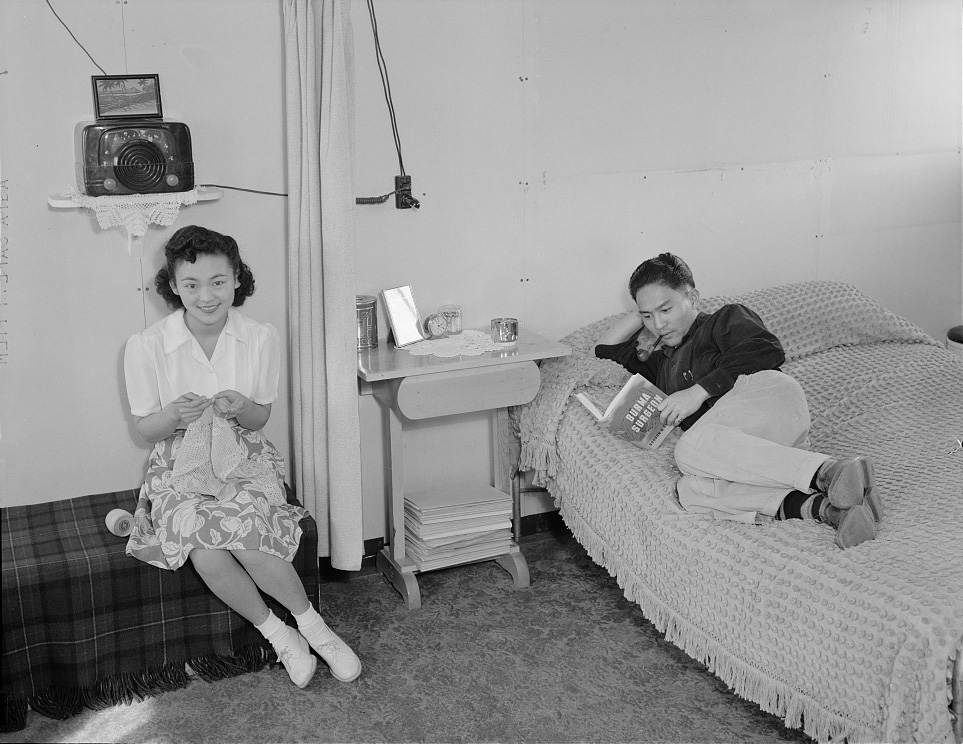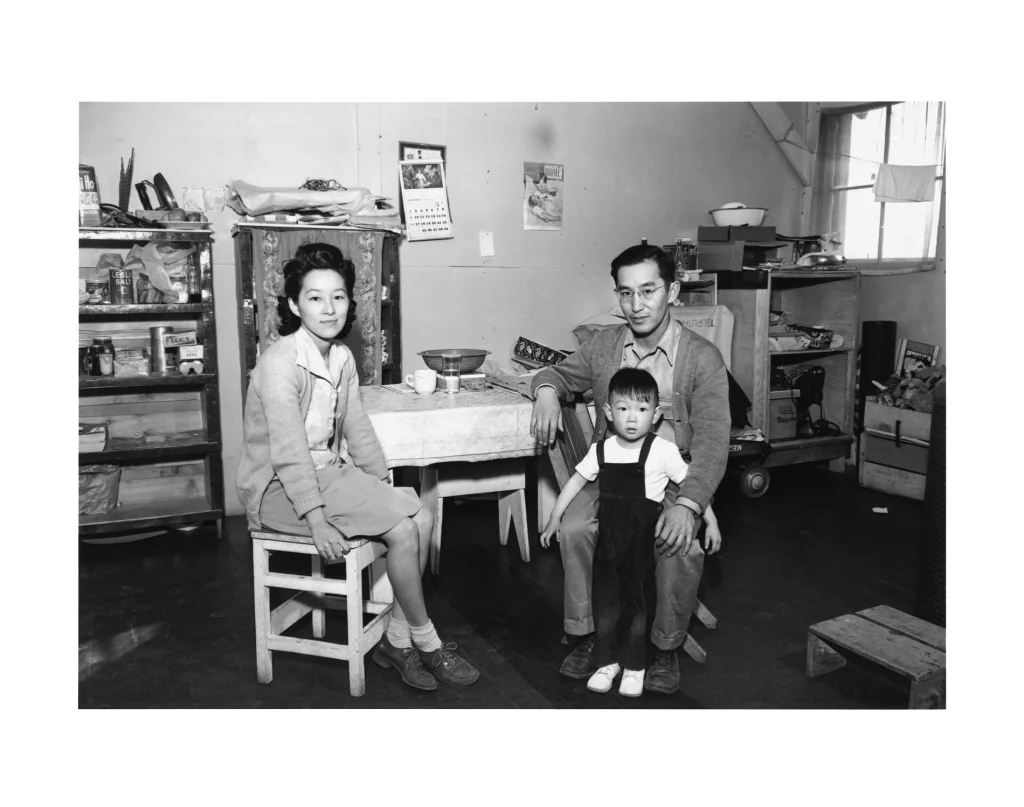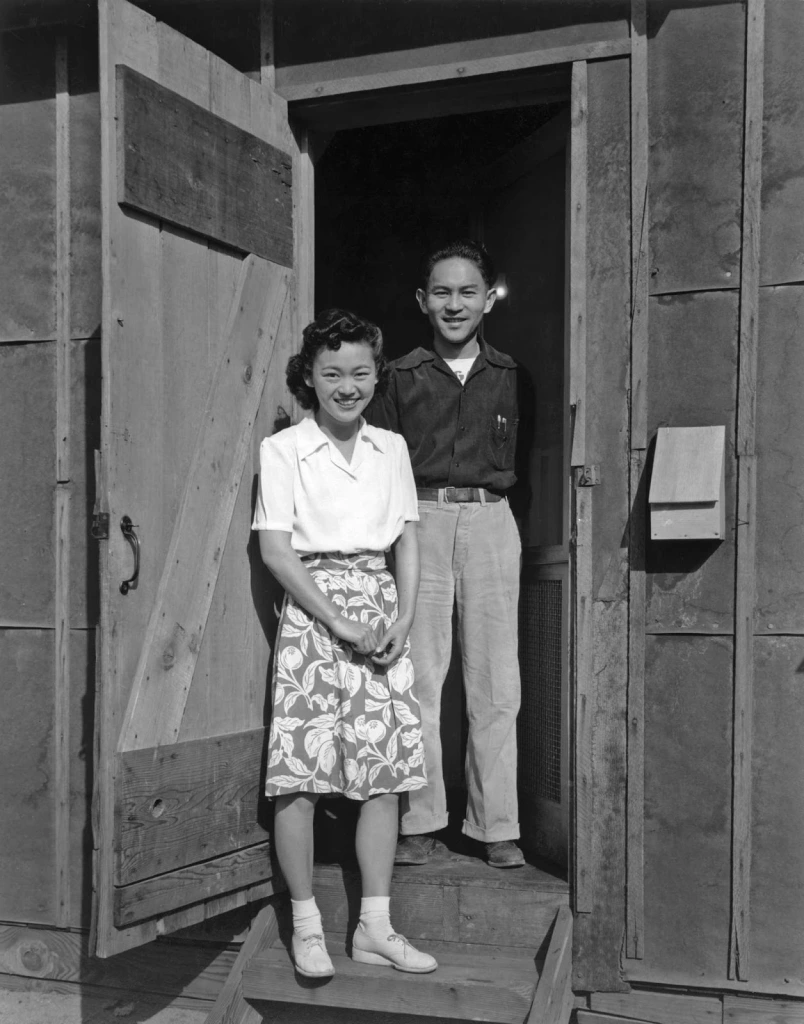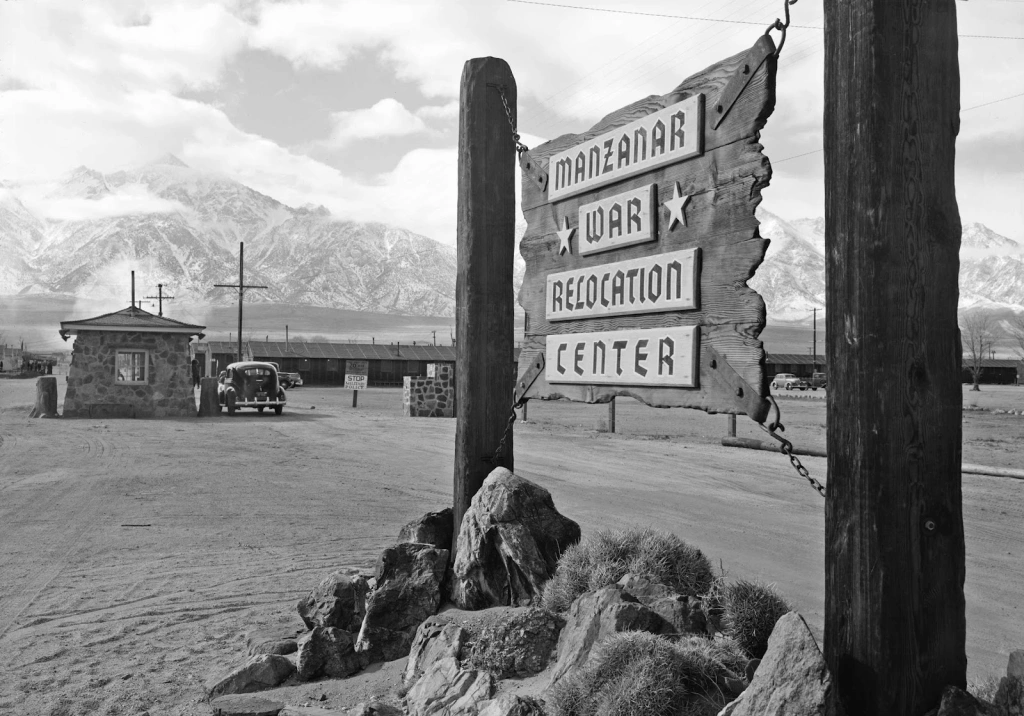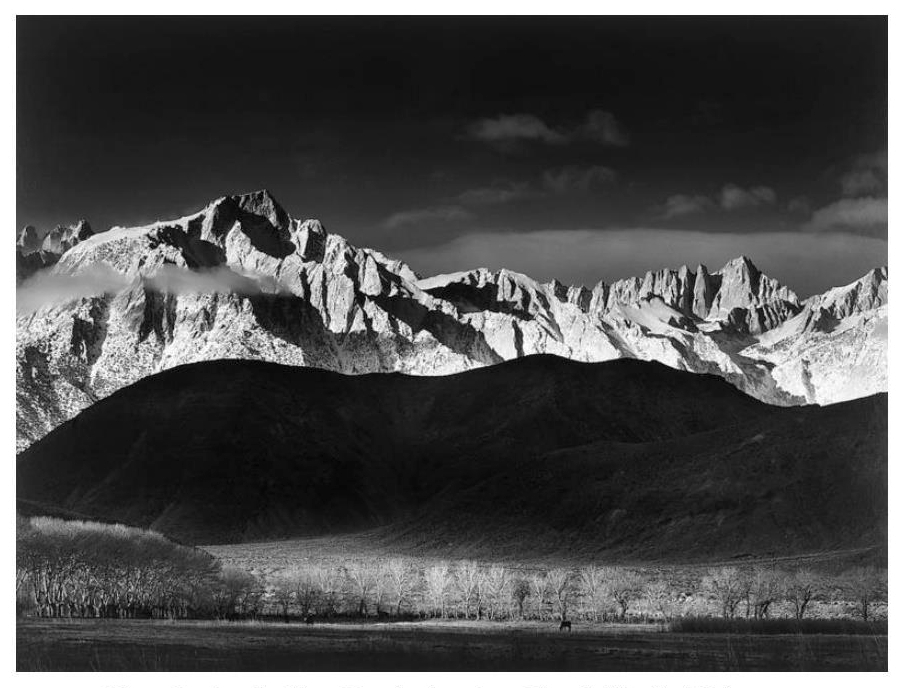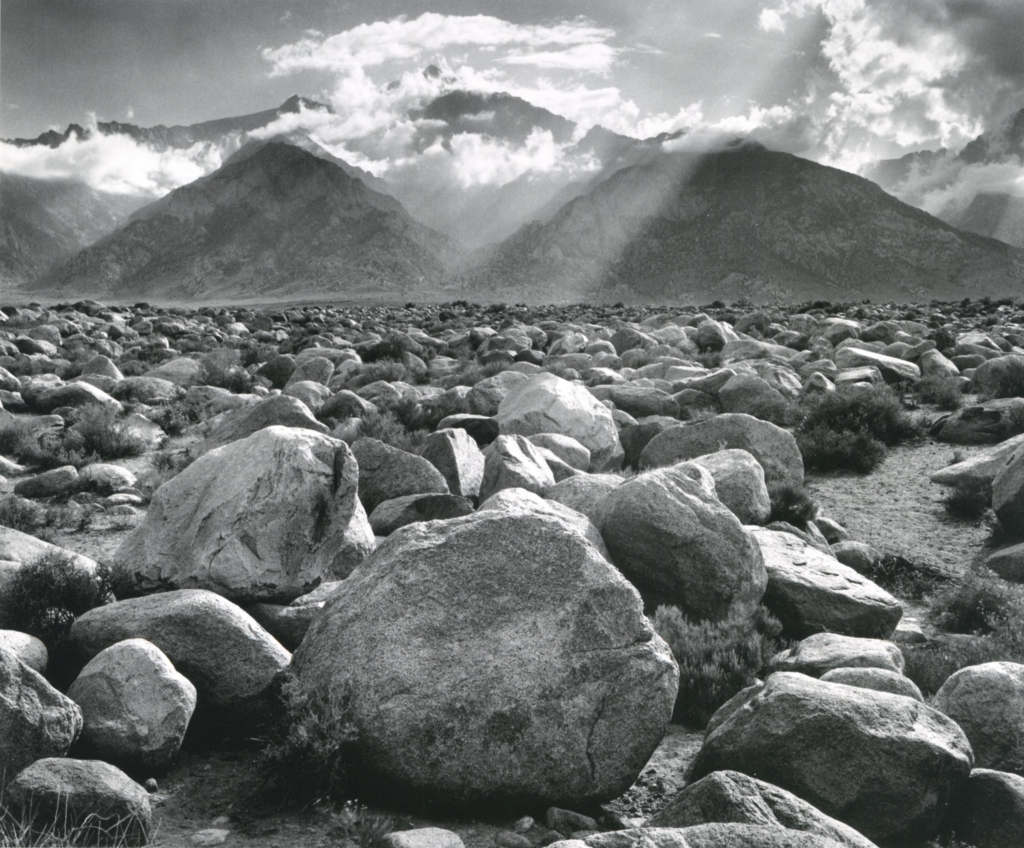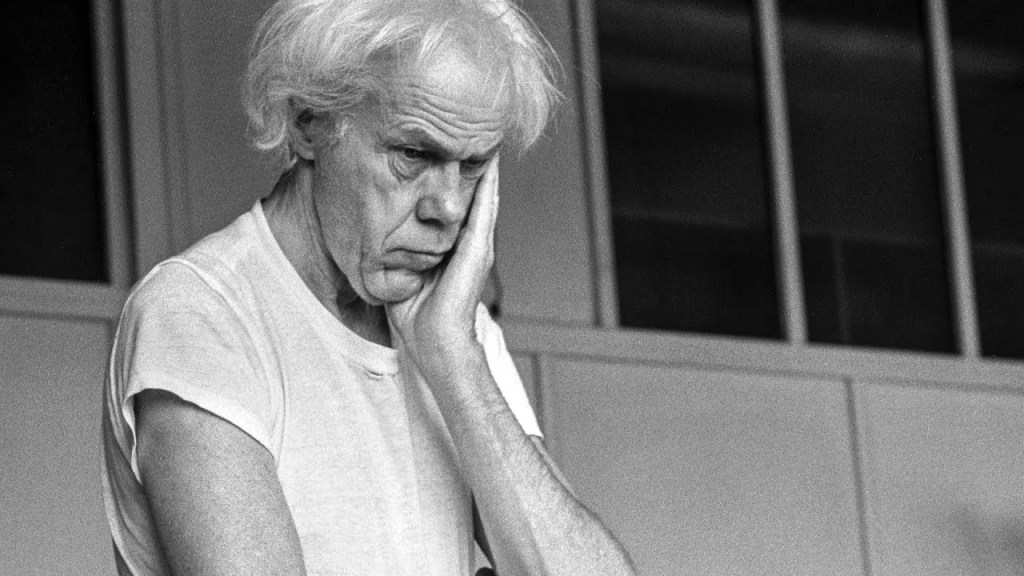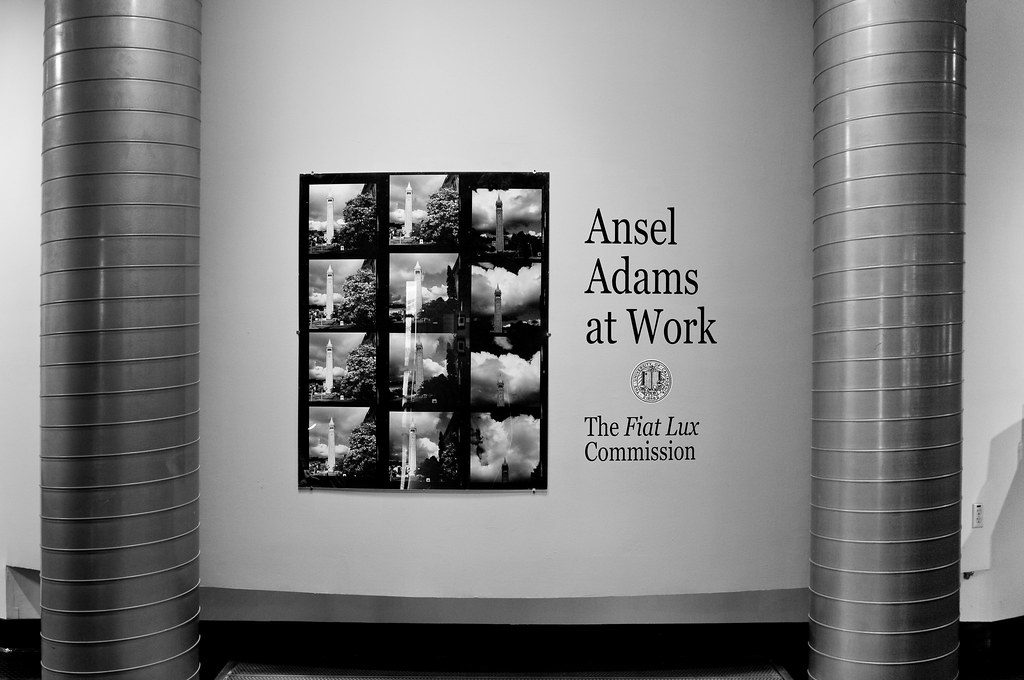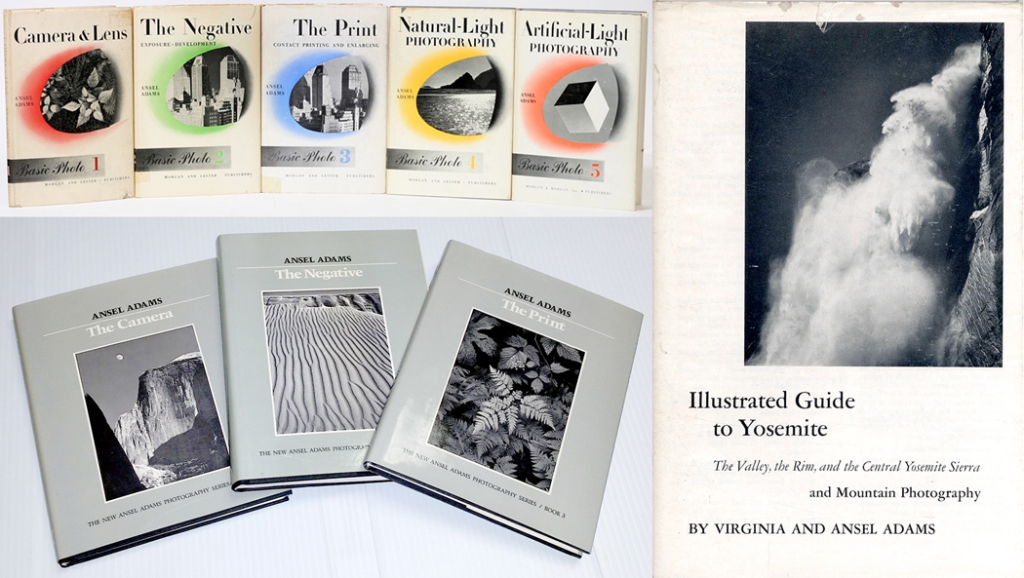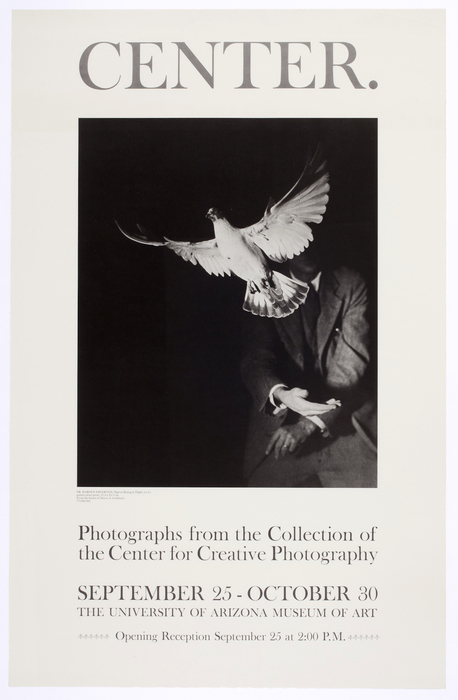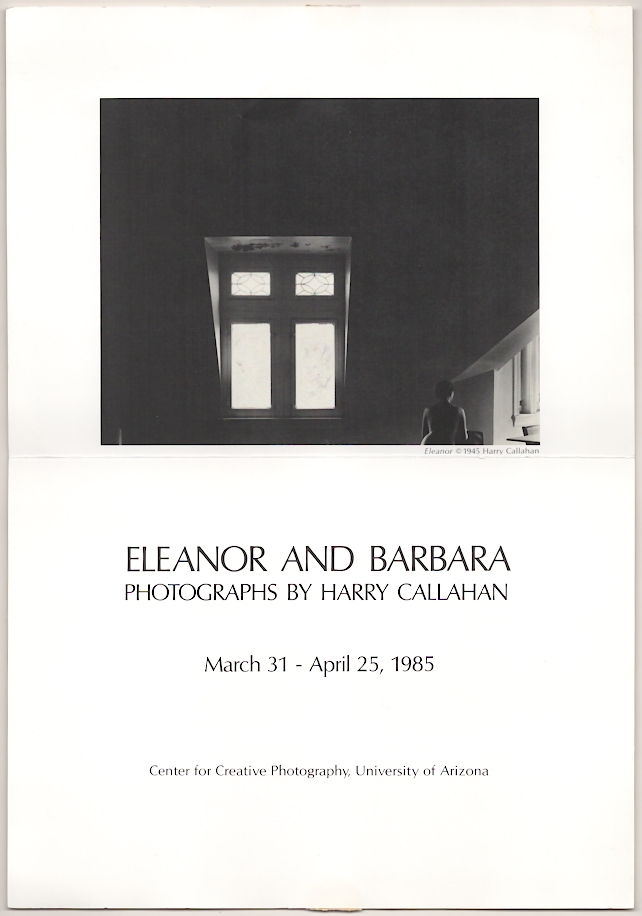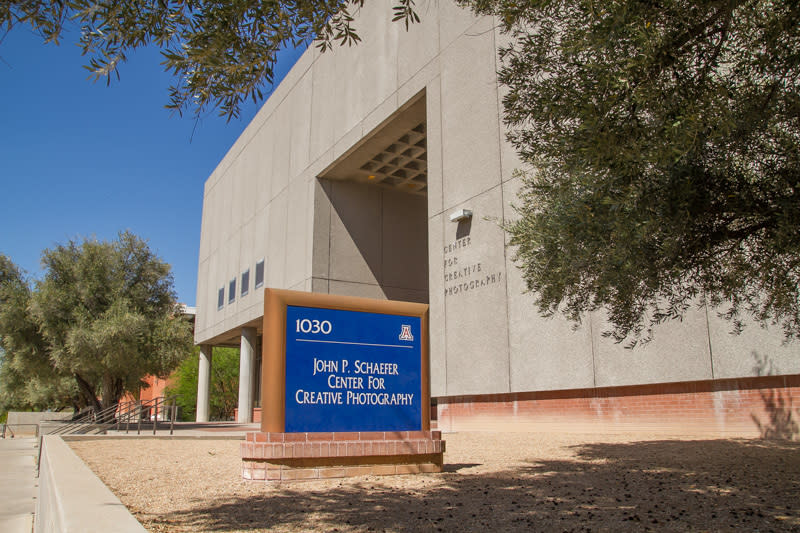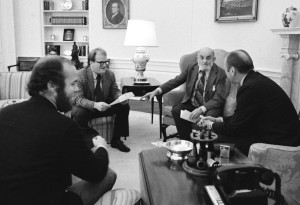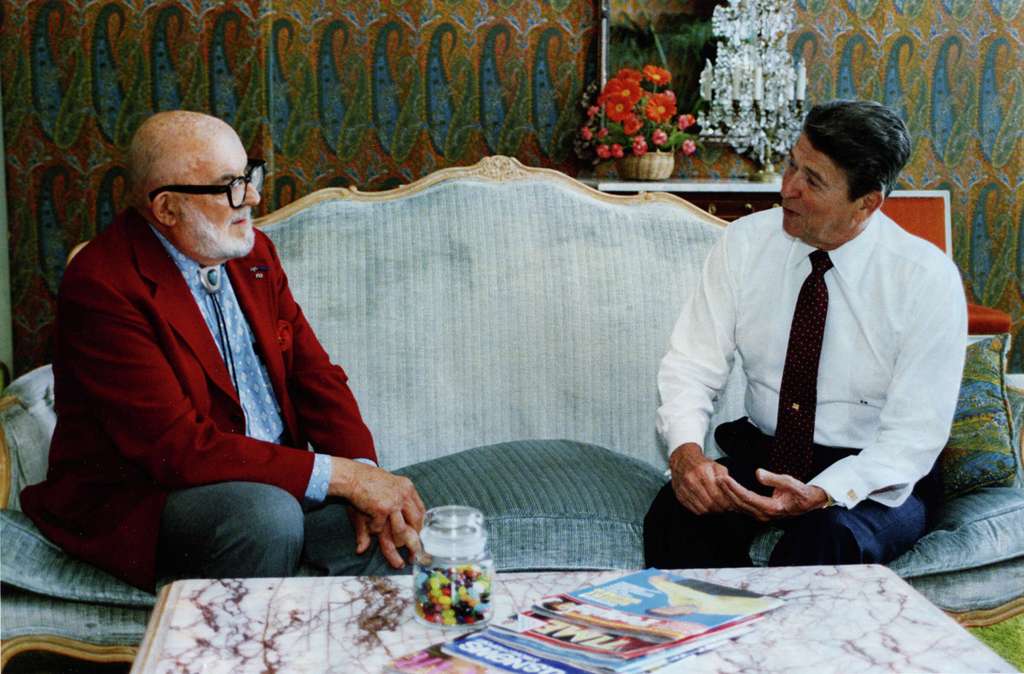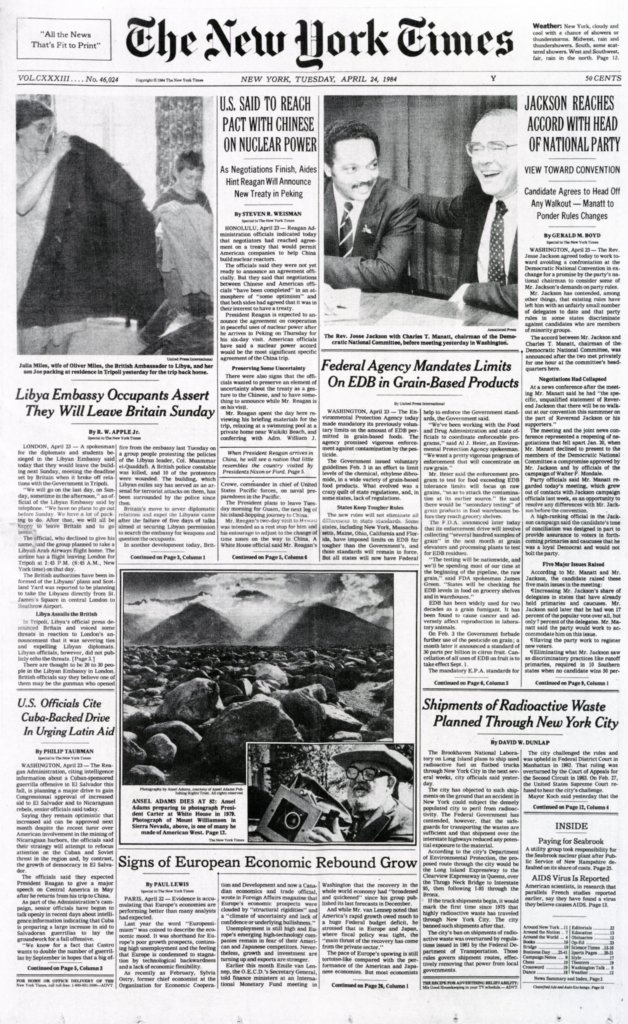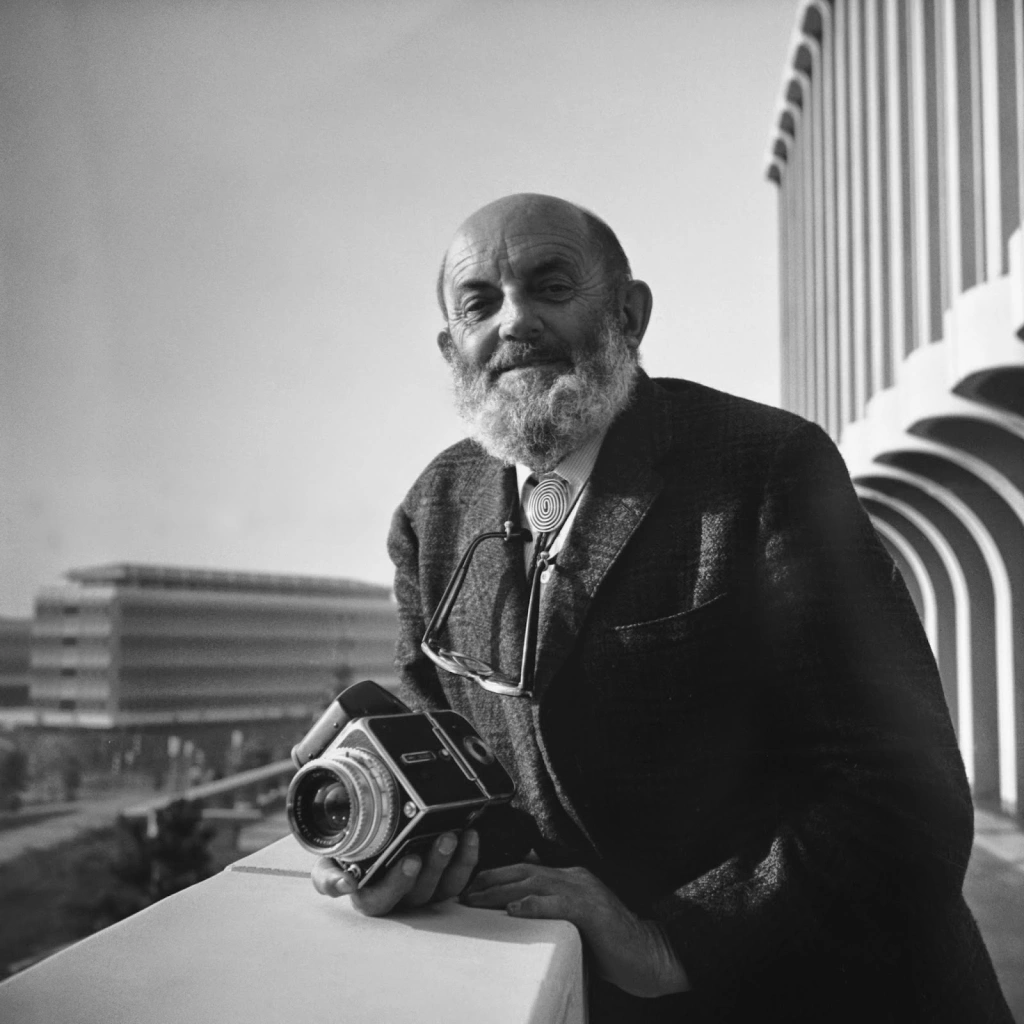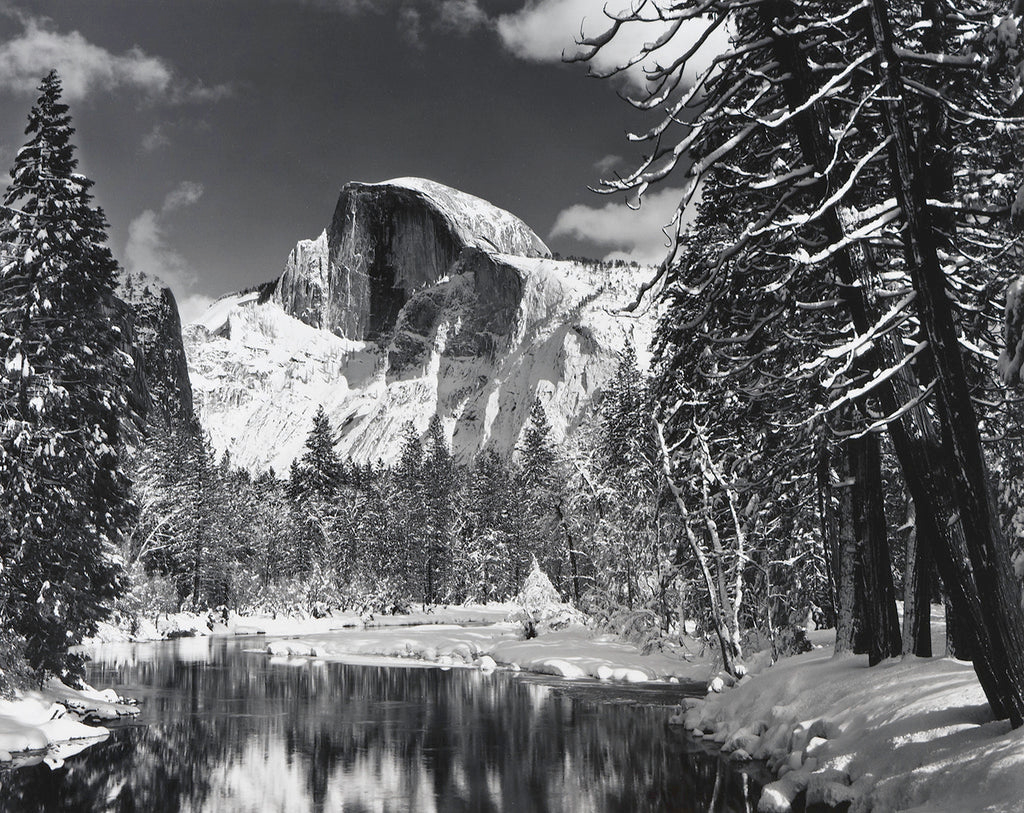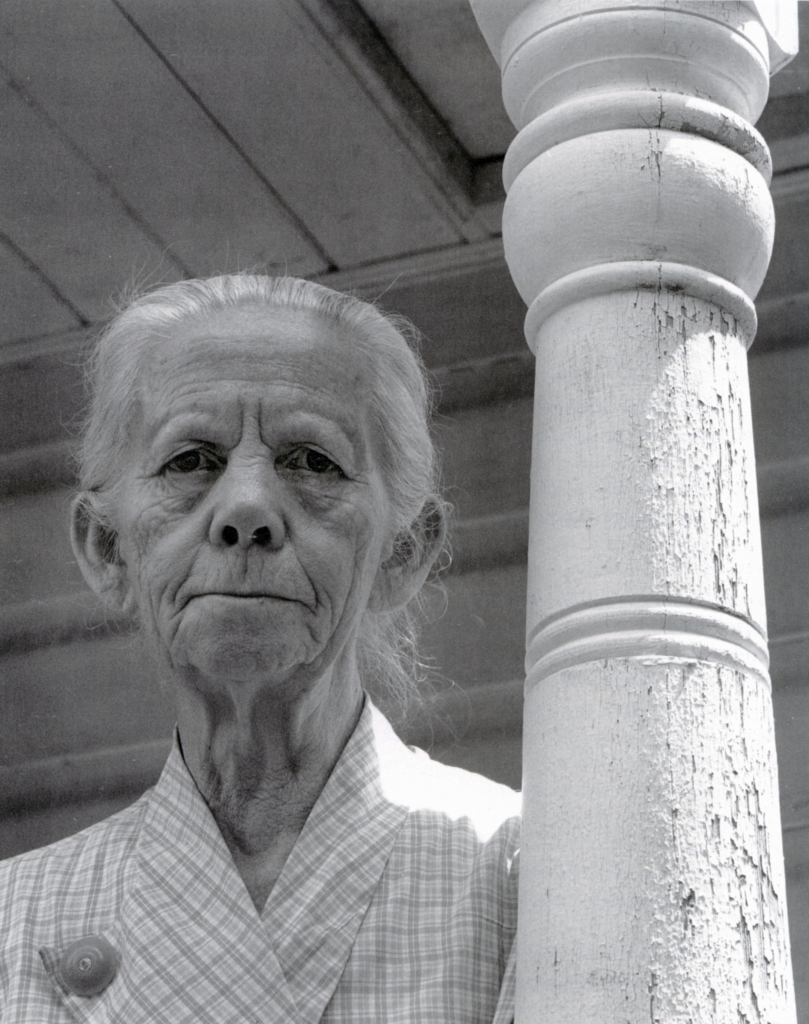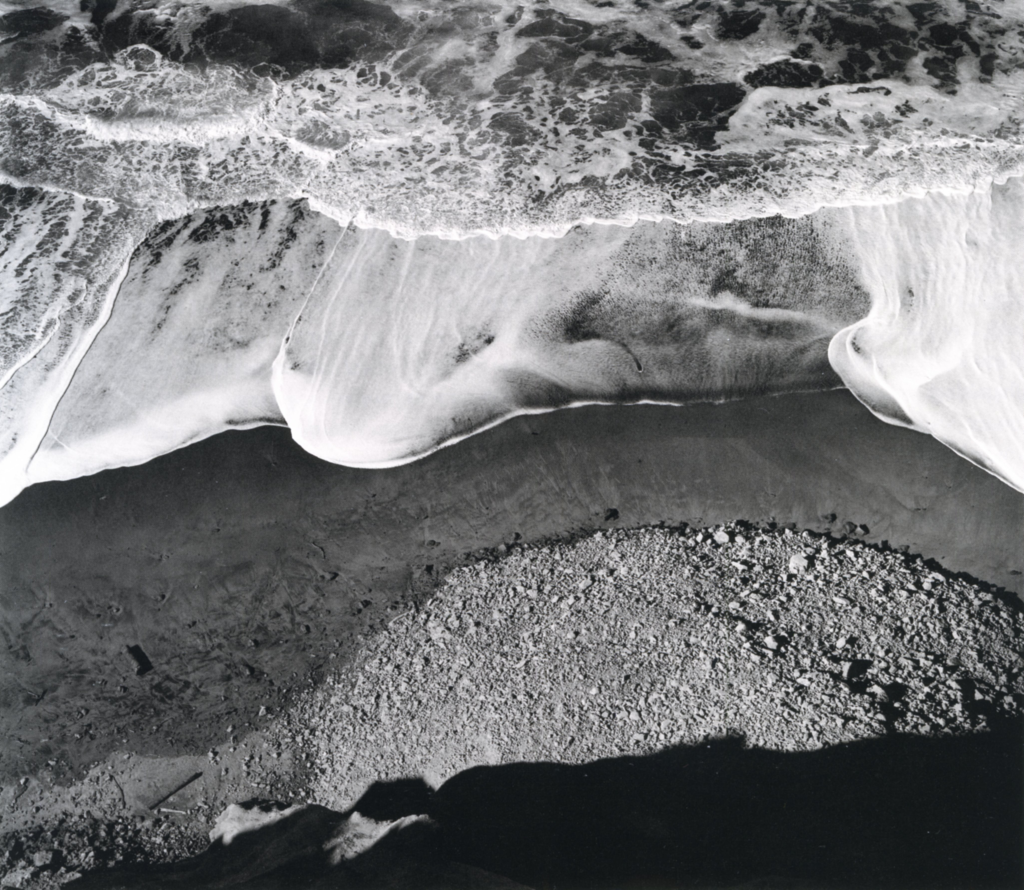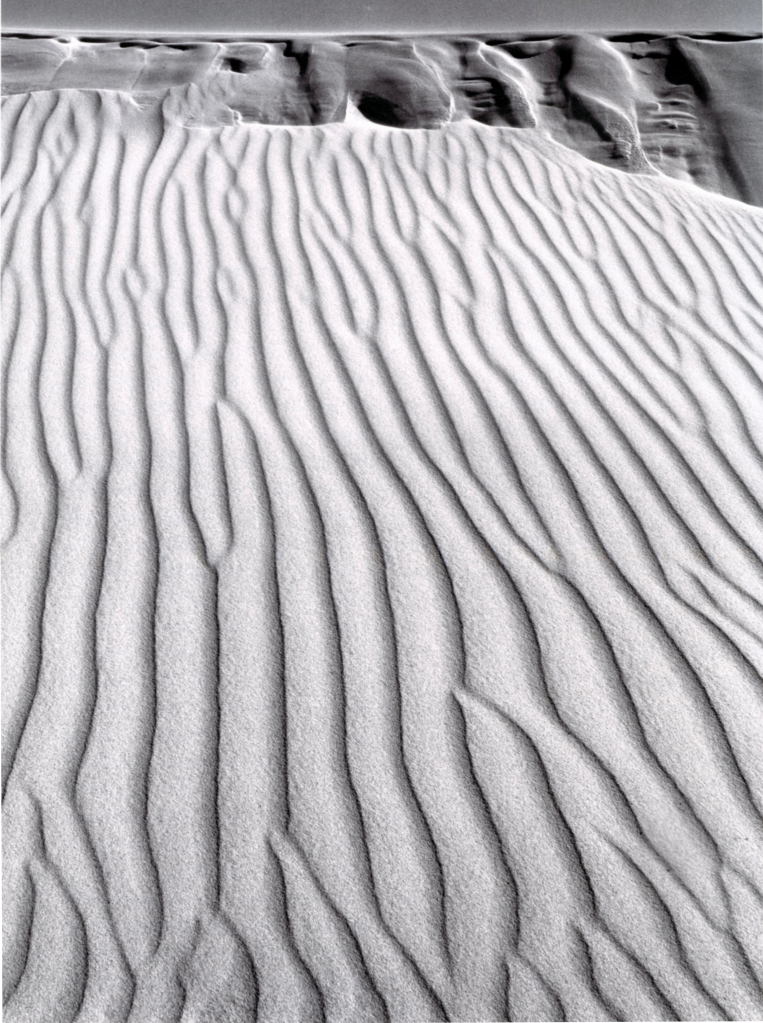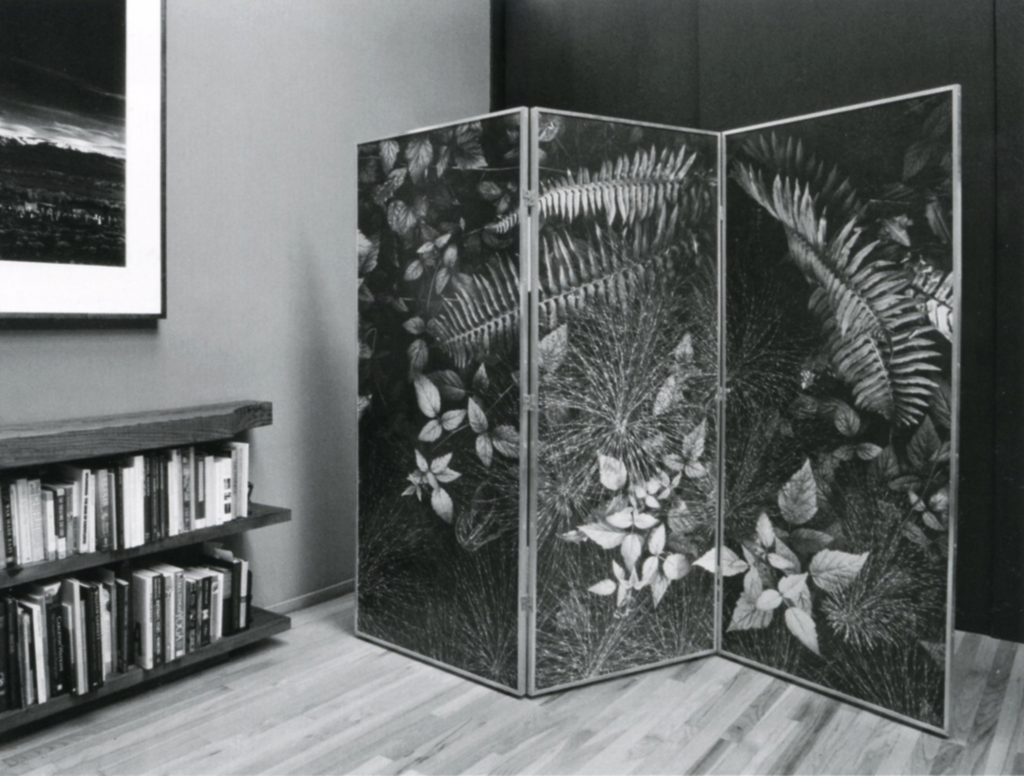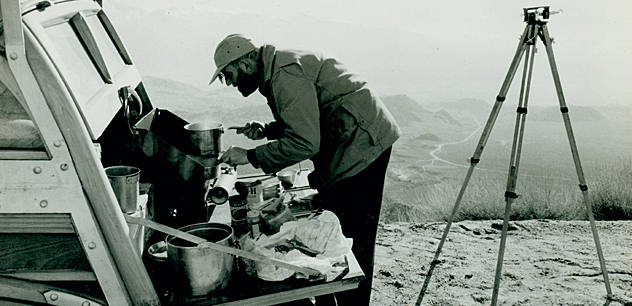Ansel Adams – A Beautiful Life
Leave a commentAugust 20, 2022 by Rob Cook
Styling Changes
Imagination is the offspring of change. It’s been two years since my last post on Edward Curtis, and WordPress has changed. WordPress now adds a space in between paragraphs in quotes. The theory is that the reader won’t stay focused on long blocks of text, and it is visually pleasing to the eye to have white space; I believe both theories are correct. The problem is that it is incorrect style formatting. So, when reading this post, try to imagine the quotes are in the correct style.
Author’s Note
The amount of information available on Ansel Adams is staggering. In this post, I have drawn heavily on the research and writings of Mary Street Alinder and Ansel himself. If you are interested in Ansel Adams, I would strongly suggest beginning with Mary Street Alinder’s phenomenal biography of Ansel titled Ansel Adams A Biography. Mrs. Alinder is the quintessential expert on the writings, life, and work of Ansel Adams. Another essential source is Ansel’s Autobiography. The best early history of Ansel is Nancy Newhall’s book, Ansel Adams: Eloquent Light. Another important source is Andrea G Stillman’s, Looking at Ansel Adams: The Photographs and the Man. Both Andrea Stillman and Mary Alinder were personal assistants to Ansel and knew him the best; look for their books. You won’t regret it.

Ansel Adams
I had no idea the enormous impact Ansel Adams had on modern photography. He has never been one of my favorites; I just didn’t get him or his work. I felt he was too commercial. When I was studying photography in the early 1980’s numerous Ansel Adams books, calendars, and posters saturated the market, his work was everywhere. I just did not look close enough at his images. I preferred the documentary style of W. Eugene Smith, Henri Cartier-Bresson, and John Thompson. After researching this post, I discovered I had been missing out; I was ignoring a great photographer and man.



Ansel Easton Adams was born in San Francisco, California on February 20, 1902. The following year his family moved to the dunes beyond the Golden Gate.[1] Ansel’s earliest memories were of the dunes and watching the fog roll in.[2] In a quote from his autobiography, he describes his memories and the foundation they were for his love of nature:[3]
Memories come to me as if they are scenes revealed by the stately opening of a proscenium curtain. A spring morning in about 1910 came clearly to me. I was up early and out in the dunes near our home. A gale blew out of the northwest, difficult to stand against. It was cold and clear, and the grasses and flowers were shivering violently in their shallow little spaces above the ground. The brittle-blue distances, including the horizon of the sea, were of crystal incisiveness. The ocean was flecked with whitecaps that appeared as countless white threads in a blue tapestry. My experience that day was a form of revelation that in some way became part of my creative structure.
I constantly return to the elements of nature that surrounded me in my childhood, to both the vision and the mood. More than seventy years later I can visualize certain photographs I might make today as equivalents of those early experiences. My childhood was very much the father to the man I became.[4]
1906 San Francisco Earthquake
The morning of April 18th, 1906 was peaceful and quiet in the Adams’ household; it was still early. At 5:12 am, a distant rumble started, and one of the most pivotal events of Ansel Adam’s life was about to be unleashed. The house began to gently sway, quickly turning violent. Four-year-old Ansel and his nanny were thrown from wall to wall, and the windows in Adams’ home shattered. The noise was deafening. Mary Street Alinder, in her biography of Ansel, describes the scene:
After seventy-five seconds of terror, it stopped. The violent release of pent-up energy had displaced the earth up to twenty-one feet, with a force measuring 8.25 on the Richter scale . . . San Francisco was in shambles and on fire thanks to exploding gas mains.
Ansel’s mother, Olive pulled herself together and surveyed the wreckage. She found they had been very lucky: one chimney missing, two fireplaces and the greenhouse lost, the plaster walls riddled with cracks, and woodwork hanging wildly from walls, but everyone was alive.[5]
In his Autobiography, Ansel had vivid memories of the events of those days:[6]
I was a little over four years of age and was very curious, wanting to be everywhere at once. There were many minor aftershocks, and I could hear them coming. It was fun for me, but not for anyone else. I was exploring in the garden when my mother called me to breakfast, and I came trotting. At that moment a severe aftershock hit and threw me off balance. I stumbled against a low brick garden wall, my nose making violent contact with quite a bloody effect. The nosebleed stopped after an hour, but my beauty was marred forever – the septum was thoroughly broken. When the family doctor could be reached, he advised that my nose be left alone until I matured; it could then be repaired with greater aesthetic quality. Apparently, I never matured, as I have yet to see a surgeon about it.
The impressions of confusion during the following days and, above all, the differences in daily life, are still very much with me.
Ansel’s father, Charles Adams, franticly tried to get to his family. He was on the East Coast conducting business, and the information he was receiving was spotty and inaccurate at best. The train West stopped in Reno, where he received a telegram from Olive’s father assuring him the family was safe.[7] Ansel said:
I now can understand the intense anxiety my father must have felt, thousands of miles away, buffeted by outrageous telegraphed rumors of total disaster. It had been variously reported that all of the city had burned; that San Francisco was slowly sinking into the sea, or that a huge tidal wave had wrecked the entire Bay area. My father left Washington as soon as he could find space on a train and arrived about six days later. Finally reaching the ferry docks, he was unable to get a horse and buggy, so he ran and walked five miles around the periphery of the fire to our home. Happily, he found all was well. His family was healthy and the house they had built was largely intact.
My closest experience with profound human suffering was that earthquake and fire. But we were not burned out, ruined, or bereft of family and friends. I never went to war, I was too young for the first and too old for the second. My world has been a world too few people are lucky enough to live in – one of peace and beauty. I believe in beauty. I believe in stones and water, air and soil, people and their future, and their fate.[8]
Unusual Squirrel
Ansel Adams was an odd little child. He describes himself as a “repellent little brat.”[9] Despite a slight frame, he was blessed with enormous stamina. “As a child, I was prone to frequent illness; I had extremely poor teeth that plagued me later in life.[10]”
He was extremely unhappy, grew emotionally unstable, and cried easily.[11] Nancy Newhall, in her biography, The Eloquent Light describes Ansel:
He was a strange, intense, and thorough child. Whatever, he began, he saw through to its finish. As a baby, building castles and cathedrals with the marvelous architectural German blocks of the time, he carefully completed his great structures through several days, and then, just as carefully, put all the blocks back in their box in precisely their original positions. He was an odd-looking boy, very thin, and fast. Indeed, with the wide dark eyes, swollen nose, and slightly open mouth. He possessed a vivid imagination: he suffered from nightmares, delighted in comedy and fantasy, and was profoundly moved by beauty.[12]
Spurred by an enormous curiosity and a restless intelligence, Ansel was drawn to any precise or complicated instrument. He listened intently while his father explained the immensities of the universe, and his telescope showed him the moon, a planet, a comet, or the bright cluster of the Pleiades.[13] When he began a project, he would not rest until he made it a reality.[14] In grammar school, as a kid, he was considered ’unusual”—not in his right mind, so to speak. The fact that he could do many things deftly and never was a bad little boy was not sufficient to overcome the stronger fact that he was ”different.”[15]
Though not lacking in self-confidence, he was a lonely child.[16] More comfortable with adults, he had few friends; He looked like a skinny squirrel, with eyes that bulged a bit and ears that stuck out. These features, combined with his twisted nose and open mouth— whether for breathing or to allow for his almost constant chatter—made him seem strange to other children.[17]
He was always in motion; otherwise, he would twitch with frustration, his mind flitting along with his body. He ran everywhere. He was impatient at the tempo of walking and the slow sidewalk flow of pedestrians, and he simply ran, doubtless an object of curiosity.[18] He had no patience for games; today he would probably be diagnosed as ADHD. Back then, he was seen as a significant behavior problem.”[19]
Education
Formal education for Ansel was difficult; he had little interest in book learning. In his autobiography, he says:
Each day was a severe test for me, sitting in a dreadful classroom while the sun and fog played outside. Most of the information received meant absolutely nothing to me. For example, I was chastised for not being able to remember what states border Nebraska and what are the states of the Gulf Coast. It was simply a matter of memorizing the names, nothing about the process of memorizing or any reason to memorize. Education without either meaning or excitement is impossible. I longed for the outdoors, leaving only a small part of my conscious self to pay attention to schoolwork.
One day as I sat fidgeting in class the whole situation suddenly appeared very ridiculous to me. I burst into raucous and uncontrolled laughter; I could not stop. The class was first amused, then scared. I stood up, pointed at the teacher, and shrieked my scorn, hardly taking a breath in between my howling paroxysms. To the dismay of my mother, I was escorted home and remained under house arrest for a week until my patient father concluded that my entry into, yet another school would be useless. Instead, I was to study at home under his guidance.[20]
Ansel’s father decided it was best to take the boy out of school and educate him on his own. In the early 1900s, the concept of homeschooling was unique. Public schools in those days were not equipped to handle gifted children.[21] Charles Adams was quite prolific in French and taught Ansel basic concepts of algebra. He insisted Ansel read the English classics and provided his son with a tutor to teach Greek culture and language.[22] His favorite hobby was collecting insects.
Music
One day when Ansel was about 12, his father heard him trying to pick out notes on their old upright piano. He decided that his son had talent! Ansel soon began piano lessons, which were in addition to his other studies.[23] Mary Street Alinder wrote:
Ansel’s mother bought her son a book of piano music, and he immediately sat down at the keyboard and taught himself to read music and play. His father wrote in 1914 that it happened almost overnight.Until he was seventeen or so, Ansel was possessed of a so-called photographic memory: he could look briefly at a page of text, or music, and then recite it. This was of great value in his musical studies. Always convinced that Ansel was special, his father now knew he was a prodigy.[24]
Ansel dove headfirst into music. It became his haven against the chaos of life. Music was a place where he could feel the passions and emotions that surged inside him; until then, his life had seemed aimless and confused. But realizing that he could create beauty through the piano, he found his first unmediated link to the eternal.[25] Music provided Ansel with a structured approach to life, and it gradually changed him from being a hyperactive brat to a disciplined artist. This discipline was life-changing. He became determined to make music his career; his goal was to become a classical pianist. He studied hard and soon became quite accomplished. In a letter to Ansel’s grandmother, Charles Adams describes the genius his son had within.
Ansel has developed quite a taste for music lately. He started a few months ago to play on the piano and heaven knows where it comes from, but he can read almost anything put before him at sight. Four months ago, he didn’t know a note and of course, has never taken lessons so I can’t quite understand it.[26]
Music had a great impact on Ansel’s life. It was through his study of music that he gained his best friends, including Cedric Wright, who would become his link to another form of expression, photography.
Panama-Pacific International Exposition
In 1915, Charles Adams presented Ansel with an unusual present: a one-year pass to San Francisco’s Panama-Pacific International Exposition, scheduled to open on Ansel’s thirteenth birthday. This and his musical studies were to constitute his schooling for the year.[27]
In her biography of Ansel, Mary Street Alinder describes his experiences at the Exposition:
The Exposition celebrated San Francisco’s recovery from the earthquake and fire . . . It was a spectacle, boasting not only the latest achievements in industry, science, and the arts but also an amusement park called the Zone, just the thing for a very active thirteen-year-old. There was a roller coaster, a carousel, a huge trampoline, and the Auroscope, a large car that carried its passengers 285 feet above the ground. Ansel attended lectures and thought nothing of rising to ask questions of the learned speakers. Thanks to his regular visits and his enormous curiosity (with its accompanying stream of questions), Ansel became known to many of the exhibitors.[28]
Ansel was a daily participant in the fair. His father would drop him off every morning on his way to work and meet him in the afternoon, sometimes going to the exhibits together. A few times, Ansel’s mother and aunt went with him. Ansel describes his memories in his autobiography:
The exposition was large, complex, and astounding: a confusion of multitudes of people, more than I had ever encountered, with conversations at excitement levels and innumerable things to see. I visited every exhibit many times during that year.
In some respects, it was a tawdry place, a glorious and temporary stage set, a symbolic fantasy, and a dream world of color and style. The buildings, constructed expressly for the exposition, were huge and flamboyant, with great scale and spaciousness. And then there was the Zone, the amusement area. In addition to the usual neck-breaking rides, tumblers, twisters, and tunnels of love, there were the seamy traps of girlie shows, curio shops, and freak displays.
The Festival Hall, a huge, domed building with excellent acoustics, contained an organ. We would have something to eat at the YMCA cafeteria and stay for the fireworks; they were always spectacular.
Although everyone at the exposition was kind to me, I am sure I was a real pest. Exhibitors seemed interested in inquisitive children and went out of their way to explain things.[29]
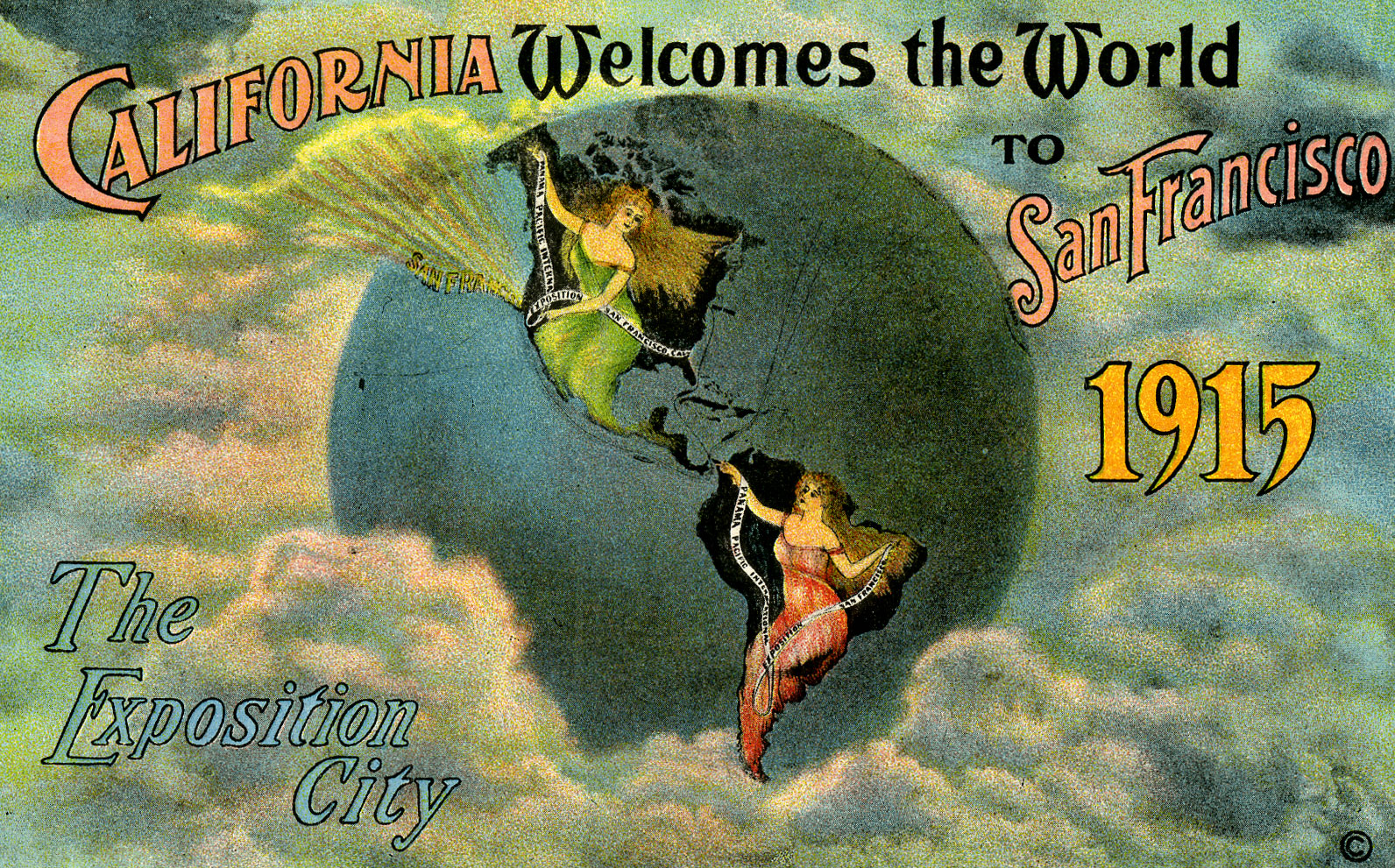


Many days Ansel would play the piano in the Nevada Pavilion, often to standing room only crowds.[30]
Little did Ansel realize the effect that year of exploration would have on his life. In addition to the scientific and cultural displays, he was exposed to the great art of human history. Names like Van Gough, Renoir, and Monet were displayed. Among the exhibits were three photographs by Edward Weston and several by Imogen Cunningham, who would become Ansel’s life-long friends.[31]
After the exposition ended, Ansel returned to the classroom, floating from school to school, ultimately ending up at the Wilkins school. The patient headmistress read the lessons out loud to Ansel, giving him an A and allowing him to graduate from the eighth grade; this ended his formal education.
Yosemite
In the Spring of 1916, Ansel was confined to his bed with a bad cold. His Aunt Mary gave him a copy of the book, In the Heart of the Sierras by J. M. Hutchings. This changed Ansel’s life. It captured his very active imagination and became the headwaters of his obsession with Yosemite and the Sierras. He devoured every word and pored over every page many times. He became enthralled with the descriptions and illustrations of Yosemite and the romance and adventure within its peaks and valleys.[32] This obsession lasted over 70 years, resulting in more than twenty thousand photographs. It is by far the single largest body of work in his archive.[33]
Ansel first visited Yosemite in 1916, when he was fourteen years old. He later wrote, “I knew my destiny when I first experienced Yosemite. “Once he had explored Yosemite Valley, he began to hike and climb in the High Sierra—”my paradise,”as he called it.[34]
By 1916 Yosemite had been transformed into a vacation destination. When Ansel discovered Yosemite was only a two-day journey from home, he insisted that the family must visit “this paradise” which had so captured his imagination.[35] Ansel’s parents agreed, and plans were made. In Mary Street Alinder’s biography of Ansel, she gives this description of his first trip to Yosemite:
The train trip was a grand event for Ansel. The changing scenery enchanted him, from the grimy sections of the city to the rolling, grass-covered hills from which the train emerged into the great San Joaquin Valley. They disembarked in Merced and enjoyed a proper lunch at a hotel before boarding the Yosemite Valley Railroad, nicknamed the Shortline to Paradise, bound for El Portal, the gateway to Yosemite.
That night they spent at the luxurious Del Portal Hotel…. Ansel, awoke at dawn, bursting with impatience to board the large and completely open touring bus that would take them into the valley proper …. The rough gravel road climbed two thousand feet in ten miles. The bus rumbled along the banks of the Merced River, revealing little until they found themselves on the valley floor, turned a bend, pulled into a scenic turnout, and beheld Valley View. Ansel’s bright eyes flitted from wonder to wonder, but the impression that would last his lifetime was that of soaring gray granite cliffs.
The Adams family arrived at Camp Curry, were feather-dusted by the young staff, and greeted by the owner, David Curry, whose thunderous proclamation “Welcome to Camp Curry!” echoed off the close-by cliffs.[36]
Shortly after their arrival, Ansel’s parents gave him his first camera, a Kodak No. 1 Brownie, which he took everywhere. The connection between Ansel, the camera, and Yosemite was immediate.[37] Little did Charles Adams realize that with this gift, he had set the course for his son’s life. Of these first pictures, Ansel said, “The results, photographically, were terrible, but the life bent and tempered something that I can never unbend and untemper in this existence—even if I wanted to.”[38]
The next year, Ansel and his mother returned to Yosemite. The year after that, he returned on his own. This began a yearly sojourn to “Paradise” for Ansel. Yosemite was now firmly ingrained in his soul and would have an enormous impact on his life. About his first trip, Mary Street Alinder said:
He hiked down the Tenaya Canyon and up the steep switchback trail to the top of Yosemite Falls, returning to camp hot and exhausted every afternoon to jump in the swimming pool. Although nearly friendless at home, at Yosemite he found playmates and learned to play croquet and pool. Upon his arrival in Yosemite, Ansel had been a sickly, fourteen-year-old; once there, he found health, happiness, and companionship.[39]
Early Photographic Education
After his adventures in Yosemite, the photography bug burned hot in Ansel. Camera stores, with their endless array of ingenious instruments, became a never-ending source of interest for Ansel. He began to devour photographic magazines and manuals; he attended one or two camera club meetings but found them boring.[40]
Shortly after returning home from Yosemite, Ansel got a job at a local photo-finishing business. Nancy Newhall, in her biography, The Eloquent Light, says:
A consuming desire to know all about photography seized Ansel. He walked two blocks up 24th Avenue and around the corner of California Street to Frank Dittman, whose photo-finishing lab turned out thousands of prints a day. “Please, Mr. Dittman, may I work for you? I don’t want any money. I just want to learn photography![41]
Ansel’s enthusiasm that day impressed Frank Dittman, and he hired Ansel as a “darkroom monkey,” paying him two dollars a day. As a darkroom monkey, Ansel would be out early delivering the previous day’s photographs and collecting the new film to be processed. He would arrive back at the shop around ten-thirty, where he either developed the new rolls of film or made prints from the preceding day’s collections. He learned his photographic routines quickly.[42]
Frank Dittman took Ansel under his wing and gave him a rudimentary photography education. Immediately Dittman recognized an inherent talent in the boy; I could see right off he was good.[43] In an interview he gave in 1950, Dittman gives us some insight into Ansel’s personality:
This lanky, beaky youngster with his long words, poetry, and enthusiasm for Yosemite, was a funny one. [His co-workers] called him “Ansel Yosemite Adams,” and they enjoyed teasing him. I noticed that he “never got mad,” he seemed to think the banter was funny, and “picked up cussing real fast.” He also noted that Ansel often played hooky from his music studies to work in his darkroom.[44]
After working in Dittman’s lab, Ansel was not a professional or creative photographer yet, but a dedicated hobbyist. He was still deeply immersed in music, and during the decade of the twenties, photography and hiking were his beloved diversions.[45] From my music studies, he applied the axiom of “practice makes perfect” to his photography. Mastering the craft of photography came through years of continued hard work, as did the ability to make images of personal expression slowly became part of his picture-making.[46]
At one of the early camera club meetings Ansel attended, he met W. E. Dassonville and saw the exquisite papers he sensitized for photographers to print on.[47] Dassonville, he learned, was a neighbor. Dropping in to see him now and then, Ansel absorbed the idea that photography could be an art.”[48]
Photography
From his first day with a camera, Ansel took photography seriously. When he made his first exposure, a desire blossomed within him to improve. Up to his late 20s, photography was relegated to his summers in Yosemite; music was still the priority. Ansel came to believe that perfect photographic technique began with mastery of the camera and the picture-making process. Ansel’s photographs quickly progressed from simple shots of his family to images in which he took artistic pride.[49]
During the early part of the 20th century, Pictorialism was popular in photography. This was the style Ansel first tried to emulate. A popular criticism of the day was that photography was produced by a machine and not by an artist. Some photographers concluded that their prints must imitate “accepted” forms of art such as painting, drawing, or etching. Pictorialism was based on soft-focus, diffused light, and textured papers.[50] Mary Street Alinder said:
Ansel’s energies had been focused on the technical mastery of photography, but as he achieved that, he began thinking about the expressive potential of Pictorialism. Over the next four years, Ansel experimented with many aspects of photography, including making photographs through microscopes, telescopes, and soft-focus lenses. He tried out a variety of printing stock, from parchment-like sheets to matte-surfaced, golden-toned papers, and Bromoil papers. He began signing his prints, at first just “Adams,” but soon “Ansel Easton Adams” or “Ansel E. Adams,” with a curlicue-ending flourish.[51]
A glimpse of Ansel’s maturing vision can be seen in his first significant image, “Banner Peak and Thousand Island Lake”, of 1923. With a thunderstorm imminent, rolling clouds fill the sky above sculpted Banner Peak; Thousand Island Lake lies quietly at the mountain’s base, rimmed by a foreground of brush and boulders. Each element joins together to form the stronger whole of a dramatic picture. Although Ansel believed his soul was at one with the Sierra, he still could not reliably produce what he saw in a finished print. He always believed his early dramatic landscapes were accomplished by luck.[52]
With each passing year, Ansel’s approach to photography narrowed. In a letter written in September of 1923, he declared that from that day forward, he would seek to achieve the highest standards of art in his work, without compromise, and following purely photographic principles. Mary Street Alinder described his philosophy of pure photography:
What was Ansel’s definition of “purely photographic”? Primarily he meant no hand-coloring. Ansel prophetically proclaimed that black and white was photography’s true dominion. “Purely photographic” did not yet refer to the use of only photographic techniques, a restriction that he would come to embrace fully a few years later.[53]
By 1925, Ansel was quickly evolving from Pictorialism to straight photography. He decided that soft-focus and the textured papers were not appropriate for Yosemite’s sculptured granite. During this period of transition, Ansel took inspiration from the writings of English poet and philosopher Edward Carpenter. Ansel was introduced to Carpenter by his best friend, Cedric Wright.[54] Carpenter taught, “Never again will Art attain to its largest and best expressions until daily life itself once more is penetrated with beauty.” Carpenter’s teachings reaffirmed Ansel’s feeling that nature was the source of all goodness and man’s best friend, nourishing life by providing beauty. Cedric and Ansel made a pact: they would devote their lives to the creation of beauty. During the next few years, when he hiked and photographed the Sierra, Ansel always carried his pocket edition of Carpenter’s book Towards Democracy. [55]
Ansel’s final conversion to straight photography was completed with the images he made during the summer of 1925 while hiking with the LeConte family in Kings River Canyon. The result was a consistent group of sharply focused and cleanly composed images. Ansel declared that there was no looking back, and he was pledging his life to “Art.” His vision had narrowed so that the natural world appeared uncomplicated and understandable.[56]
In the summer of 1917, when Ansel and his mother returned to Yosemite, Ansel enthusiastically began where he had left off the year before. For the first two weeks, he hiked 55 miles, and then it was 175 miles. His letters home regaled his father with his exploits and the wondrous adventures he was having. The letters from his mother tell a different story. Ansel was such a live wire that he was consuming all her strength controlling her rambunctious son, to the extent that she had to block the door of their tent at night with a chair to keep him from sneaking out.[57] Ansel was such a chatterbox that he soon became well known to everyone in camp.
Uncle Frank
Francis Holman, an MIT graduate, a retired geologist, and an amateur ornithologist, invited Ansel on a camping trip to Merced Lake above Yosemite. This began an influential friendship that lasted many years. In his adult years, Ansel was considered an accomplished outdoorsman and environmental activist; this was largely due to the influence of Holman. Uncle Frank, as Ansel called him, became his guide to the outdoors; over the next few summers, he would teach his young charge camping, climbing, and serious respect for the fragile wilderness.[58] Ansel, in his autobiography, described his mentor:
His face was chiseled and sad, his mustache drooped. He had lost one eye in a firecracker accident when a child; the other eye was as sharp as an eagle’s. Uncle Frank knew the Yosemite Sierra well and was a genius of minimal equipment camping. He was a cautious climber, a productive fisherman, and a well-trained ornithologist, who installed in me a loathing for the killing of animals. He was a rigorous Puritan, kind, intelligent, though noncommunicative in ordinary things of the world. [59]
Ansel loved to tell stories, many of which were of his adventures with Uncle Frank hiking and camping in the Sierra; he said:
Uncle Frank and I had many marvelous and sometimes perilous experiences together in the Sierra. We rose from our sleeping bags at dawn and alternated the chores of our camp: preparing breakfast or going out into the frosty meadow and untying the burro. The ropes would be ice-hard, the knots congealed, and fingers aching and sore. In time I would get them loose and hear Uncle Frank yell, “For God’s sake, the mush is ready!” I would slowly struggle back, dragging one or two burros as the case might be, chilled to the bone, my legs wet and very cold, my nose runny, and my spirit dejected. I would soon revive, standing so close to the campfire.
Under the opposite situation, I would prepare breakfast: oatmeal (if any), bacon and eggs (if any), and flapjacks (always). Occasional trout brightened any cooked meal. We did not starve, but we would brush close to malnutrition. We never stopped to unpack for lunch, which usually consisted of dried fruit or whatever could be reached through the burro-pack covers. Dinner would be tinned meats and vegetables, sometimes canned soup, raisins, or dates for dessert, and maybe tea, especially if it was [cold]. The only thing I remember with distaste is that Uncle Frank was always determined to keep on the trail until it was practically dark. Then we would fumble for a campsite and a reasonably rock-less or pinecone-less stretch of flat earth.[60]
If Ansel were to write an epitaph of his friend, it would say, “Francis Holman gave more to the mountains than he ever took.”[61]
The next summer, sixteen-year-old Ansel went alone to Camp Curry. Ansel’s parents felt comfortable putting him under the watchful care of Uncle Frank and Jenny Curry.[62] The name Ansel Adams was now forever ingrained in the lore of Yosemite.
LeConte Lodge
In 1920 Ansel got a summer job at Yosemite. He was appointed the caretaker of the Sierra Club’s LeConte Memorial Lodge. The four summers Ansel worked at the lodge were magical. Ansel took his job seriously. He was responsible for building fires, looking after the collections of wildflowers, rocks, stumps, and cones gathering the latest information about the high country, and running errands in the club’s already ancient Model T Ford.[63] He slept in a tent in the meadow. He became a skilled climber. He was free to go out with his camera before the lodge opened; he was free again in the late afternoon.[64] Ansel would lead small groups on day trips around Yosemite. During these trips, he was introduced to the elite of the conservation world, many of whom would become life-long friends and fellow environmentalists. Notable among them were William E Colby[65]and Joseph N LeConte.[66] Ansel became very fond of the LeConte family.
Through the influence of Colby, LeConte, Uncle Frank, and many others, Ansel developed the skills and traits that would define his life and legacy. He became a dedicated and capable photographer, a fervent conservationist, and a skilled outdoorsman. Above it all, though, he longed for his piano. Even though Ansel was becoming a skilled photographer, his goal in life was still to become a professional musician.
Virginia Best
Yosemite posed one huge barrier for a young man aspiring to be a classical pianist. There was little opportunity for daily practice. Even a talented musician cannot take a three-month break each summer and expect to succeed. This dilemma was solved by park ranger Ansel Hall. Hall approached Harry Best, owner of Best’s Studio[67], and presented Ansel, saying, “here’s a namesake of mine,” and “he’d like to play your piano.”[68] Best graciously accepted this tall, awkward young man with the crooked nose, saying, “of course, he can come to play any time.” Harry Best thought that listening to Ansel’s play “was like listening to rippling waters.”[69]
Living with Harry Best was his seventeen-year-old daughter Virginia. Virginia was described as having “long fair hair, a delicate face, and very blue eyes. There was about her a warm simplicity and an affectionate radiance.”[70] In his autobiography, Ansel talks about Virginia:
I was first attracted to Mr. Best’s piano and soon thereafter to his seventeen-year-old daughter. Virginia Best was housekeeping for her father because her mother had passed away the year before. Virginia had a beautiful contralto voice and planned a career as a classical singer. We found considerable mutual interests in music, in Yosemite, and, it turned out, in each other.[71]
It was love at first sight for Ansel, but not Virginia. She said, “It took me quite a while before I realized that it wasn’t only the piano that brought him down to the [studio] … Because I just really wasn’t emotionally ready to get interested in anybody and didn’t believe anybody would be interested in me.”[72] For the first year, it was only a friendship, but after his return to Yosemite in 1921, their relationship grew beyond friendship.
While Ansel’s photography steadily progressed, his personal life was often a disaster. Ansel’s parents had a very formal marriage. They did not express their feelings with hugs or kisses; emotions were held at bay. Having no good model for a real-life relationship, Ansel worshipped idealized love, the purest of feelings above the physical plane. When he met Virginia Best in 1921, he saw her as good raw material and planned to mold her into his perfect woman.[73]
The summer of 1921 was a hectic time for Ansel. Things were heating up with Virginia; he was busy with his work at the lodge and preparing for his first extended trip in the High Sierra with Uncle Frank. The planned Itinerary included Merced Lake, Mount Clark, and the stunning area East of the Merced Mountains. Ansel would need to buy his own burro to help carry their gear and supplies. After the lodge closed in September 1921, Ansel, Uncle Frank, and the burro Mistletoe departed for high mountain valleys and the grandeur of the High Sierras. From high above Merced Lake, Ansel wrote Virginia:
This lofty valley and the grandeur of Rodgers Peak, the ascent of which is our main objective, cannot be described. If only I had a piano along! The absurdity of the idea does not prevent me from wishing, however. I certainly do miss the keyboard; as soon as I am back in Yosemite, I shall make a beeline for Best’s Studio, and bother your good father with uproarious scales and Debussian dissonances![74]
During their long winters apart, they wrote letters back and forth. Ansel would dwell too much on photography, and Virginia would remind him that his future was in music. She considered photography an unworthy use of his brilliant talents. Ansel reassured her that photography would remain nothing more than a hobby.
By the summer of 1923, Ansel and Virginia were in a good place together. Ansel was busy with the LeConte Lodge, photography, and his music studies. Virginia was busy taking care of her dad and working in the studio. They managed to find time together and considered themselves engaged, but no date was set.
In his autobiography Ansel wrote about his relationship with Virginia:
Virginia and I were serious for some six years before we were finally married in 1928. Engaged-disengaged-reengaged would be a more accurate description. A year after our first engagement, I realized how far I had to go with music before I would amount to anything, and I wrote her a letter of painful decision. Virginia took it wonderfully well, although I came to know later it was a most distressing event in her life.[75]
By the winter of 1923, Ansel’s love for Virginia had cooled. In a formal letter, he advised her that family and art came first, and he was duty-bound to assist his father as finances were uncertain. Not coincidentally, Ansel had recently begun his friendship with Cedric Wright. Through him and his Bohemian lifestyle in Berkeley, Ansel was meeting many other young artists and musicians, some of whom were students of his new friend, and some of them female.[76] Virginia must have seen this split coming, but it was terrible for her anyway.[77]
During the summers of 1924 and 1925, Ansel saw less of Virginia; he was invited to join Professor Joseph LeConte II and his family on six-week pack trips into the Kings River Sierra. Professor LeConte had been elected the second president of the Sierra Club. He assumed Ansel’s expenses in exchange for an album of his photographs of their sojourn.[78]


The fall of 1925 found Ansel back in San Francisco. He earned some money as a music teacher, offering ten lessons for ten dollars. He spent many nights at Cedric’s house in Berkeley. He formed the Milanvi Trio[79] but found little success; his music was dismally stalled. No one ever “discovered” him, and the future lost its promise. Over time, his disenchantment with the music scene increased until he finally dismissed it as unworthy of his involvement.[80]
Cedric Wright
Ansel’s best friend growing up was Cedric Wright. Ansel had first met Cedric briefly when he was eight years old.
Ansel did not see Cedric again until the summer of 1921, when both attended the annual Sierra Club outing. Cedric and Ansel became fast friends, finding they had many mutual interests, especially music, the mountains, and a budding interest in photography. Cedric influenced Ansel on many levels. Ansel was a regular at Cedric’s Berkeley home, where he met many of the people who were to become so important in his future years.[81]
Never wanting money, Cedric was a free spirit. He bought an old barn and hired famed architect Bernard Maybeck to design a craftsman-style renovation. Cedric’s house had built-in couches with loose pillows lining its walls and a swing hanging from the ceiling. [82]In her biography of Ansel, Mary Street Alinder wrote:
Ansel could often be found at Cedric’s home which became “party central” for Sierra Clubbers and musicians … Cedric entertained with ease, serving his guests what he believed to be the best chow in the world: the usual Sierra Club camp dinner of spaghetti and meatballs, French bread, tossed salad, and cookies supplemented with a treat of Jell-O for dessert. The coffee was boiled, thick, and rich. The only thing missing was the mountains.
Ansel idolized Cedric, whom he saw as intelligent, accomplished, and worldly. Cedric became his guide to the tantalizing world of wine, women, and song, and the young artistic achievers living in Berkeley.[83]
Ansel also had fond memories of Cedric:
I remember well the younger Cedric as almost an occupant of another world and a creator and messenger of beauty and mysteries. Perhaps his greatest gift was that of imparting confidence to those who were wavering on the edge of fear and indecision; often it was me. We shared much, playing music together, hiking together, writing letters with our deepest feelings, bolstering each other through topsy-turvy romances with dream girls and real girls.[84]
Cedric was greatly influenced by Walt Whitman, Havelock Ellis, Edward Carpenter, and Elbert Hubbard, whose doctrines of naturalistic simplicity especially captivated Cedric. Of all the poets and philosophers Ansel was exposed to, Edward Carpenter[85] had the greatest impact on his life. Mary Street Alinder wrote about Edward Carpenter:
[Edward]Carpenter’s beliefs reaffirmed Ansel’s feeling that nature was the source of all goodness and man’s best friend, nourishing life by providing beauty. An ordered nature conformed to an organic logic and pattern, but these largely eluded man’s comprehension. Nature was meaningful in a way that few could perceive, for one can seldom glimpse more than a small portion of the universal mysteries.[86]
Ansel’s goal, whether on the piano or through the camera, was to express what nature revealed to him. Through Cedric’s influence and others,[87] Ansel refined his life’s philosophy before he established its full expression through his art.[88] Mary Street Alinder said:
As the decade of the twenties progressed, Ansel’s attention focused less on music, and more on photography. It was difficult for him to keep up the charade of making music his life’s work when it meant spending long hours shackled to a piano in San Francisco. His mind wandered to the mountains as he sat at the piano, his fingers on the keys. Ansel’s siren and muse were Yosemite and the Sierra, not Bach and Beethoven.[89]
One early Spring Day Cedric Wright called to say, “Come over tonight and bring your earthquake nose, music fingers, and some prints to show.” After dinner, Cedric picked up my box of prints and led me to a smiling little man sitting on a couch. “Here’s Ansel Adams. He plays pretty good piano and takes damn good photographs.” Then to me, “This is Albert Bender. He lives in San Francisco, too, and he likes art.” I had heard of Albert Bender’s reputation as a serious patron of the arts. Albert stood, shook my hand, and said, “Let’s find some brighter light. I want to see your pictures.” Apprehensively, I followed him to a well-lit corner and watched as he carefully examined about forty of my photographs of Yosemite and the High Sierra. He finished, smiled, and said, “Fine! Come and see me at my office tomorrow morning at about ten. I want to look at these again.” I floated through the remainder of the evening – this was the first important interest in my photographs from someone outside my musical and mountaineering circles.
The next morning, promptly at ten o’clock, I was ushered into Albert’s office … His desk was a chaotic mess. He greeted me warmly, took me to a small table, pushed aside some books, and said, “Let’s look at them again.” After he finished, he looked me squarely in the eye and said, “We must do something with these photographs. How many of each can you print?” I replied, “An unlimited number unless I drop one of the glass plates.” He then said, “Let’s do a portfolio.” I remained outwardly calm but was electrified by his decision.
We quickly established the probable costs and the time required to do the job. He called Jean Chambers Moore,[91] a respected publisher, and dealer in fine books, and arranged for her to publish the portfolio and the Grabhorn Press to do the typography as well as the announcement. Edwin and Robert Grabhorn had developed a worldwide reputation for their incredibly beautiful typographic design and printing.[92]
At the same time, Ansel and Virginia were supposedly engaged, Ansel was madly in love with several of Cedric’s pupils. Despite all his wanderings, Virginia remained determined to marry Ansel.[90]
Albert Bender
In the Spring of 1926, Ansel’s fortune took a turn for the better. In his Autobiography, Ansel wrote:
Ansel and Albert decided upon an edition of one hundred portfolios (and ten artist’s copies) of eighteen prints each; Albert suggested a retail price of fifty dollars for each portfolio. Ansel continues:
Albert was a true philanthropist. He never requested money from his friends for any purpose unless he had first contributed. When he had concluded the arrangements for the portfolio, he said to me, “Of course, I’ll take ten copies. Here is my check for five hundred dollars.” He later bought ten more. He was back on the phone and, before lunchtime, with a magnificent job of promotion, he had sold more than half the portfolios, assuring the project’s financial success.
His first call was to Mrs. Sigmund Stern, who was kindly, wealthy, and always supportive of the arts. “Top of the morning to you, Rosalie! I have a young friend here who has done some fine photographs. We are going to make some portfolios and I have taken ten.” She said she would take ten, too. The same approach was used for several other benefactors of the arts, with considerable success.[93]
This was a momentous step for Ansel. The several thousand dollars he earned from the portfolios propelled him further toward a career with a camera, not a piano. In contrast, the piano generated only a few dollars an hour from lessons to neighborhood children. And, after an on-again-off-again engagement of six years, this money provided the financial security for him to marry Virginia Best.[94]
Albert’s generosity was legendary. His pockets were always full of small gifts that he gave out throughout his day; He loved helping people, be they janitors, esteemed authors, or photographers. In Ansel, Albert discovered a genius, a son, and an enchanting companion and could hardly wait to introduce him around. Ansel chauffeured Albert around in a 1926 Buick Coach that Albert owned. They made frequent grand tours to libraries, museums, and the studios and homes of many artists and writers. Albert would telephone Ansel and ask, “What are you doing today?” Ansel would reply, “When do you want to leave, Albert?” Practically every excursion was an important event to Ansel, for these were his introductions to a new world of creative people.[95]
The most memorable trip they took together was in 1927 to Santa Fe and Taos and the Grand Canyon. It was their first trip to the Deseret Southwest. It was nearly three thousand long miles, mostly on washboard roads.[96] Ansel was deeply moved by Santa Fe and Taos and quickly fell under the spell of the New Mexican light.[97]
Ansel was entranced by the old adobes, the Indian pueblos, the snow-capped Sangre de Cristo mountains, and the cosmopolitan world of artists and writers shown him by Albert. He took few pictures during this first trip, but when he returned the next year, he would be ready. Albert introduced Ansel to the writer Mary Austin, convinced that the two of them should collaborate on a book.[98]
Whether in New Mexico, Carmel, or San Francisco, Albert Bender opened many doors for Ansel throughout the years of their friendship. Although he was aware of his advancing age, Ansel took for granted that he would always be there. Virginia and Ansel were shocked to receive an emotional telegram on March 4, 1941, informing them that Albert had passed away after a short illness. Ansel describes the events of Albert’s death:
I thought of all Albert had been to me as we walked through the entrance garden to his door. Sandwiches, cookies, soft and hard drinks, and cheerful reminiscences softened an otherwise sorrowful occasion. Several people were there, some standing at the casket and others talking softly in the dining room. All during the wee hours’ men and women, singly or in couples, would enter the apartment quietly, many stricken with grief. Some talked about Albert and what kindnesses he had done for them; one elderly man whispered to me, “Albert helped put our son through college. We shall never forget him.” Practically all these people were unknown to me. Most were relatively obscure: clerks, nurses, gardeners, mailmen, garbage collectors, and janitors from his office building on California Street, and others who sought the last communion with their friend. These people of the night and dawn revealed to me the scope of Albert’s life. As I looked at Albert for the last time, seemingly comfortable in his casket and serene as if he were dreaming of his good works. His example of nobility and generosity bore fruit in many orchards of the human spirit.[99]
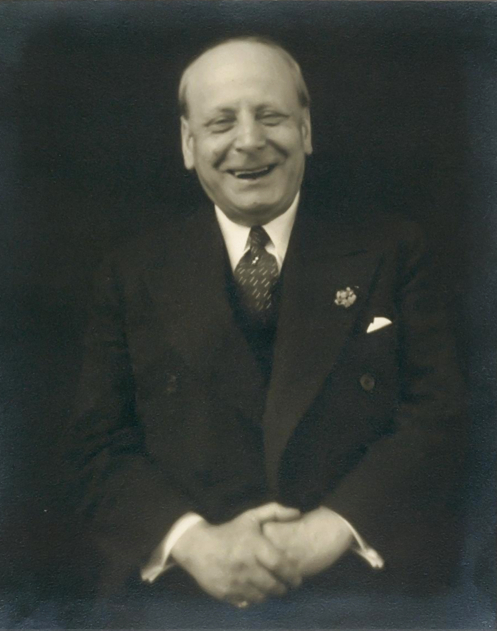
1927
1927 was a momentous year in Ansel’s life. With Albert’s influence, Ansel increasingly saw photography, rather than music, as his future.
In the spring, Ansel returned to Yosemite to the arms of the unspoiled, ever-patient, and welcoming Virginia. They traveled to Carmel for a brief getaway, during which Virginia was stricken with adoration. She discovered her own intense physical needs and yearned to be with Ansel all the time. Mary Street Alinder said:
For his part, Ansel seemed able to assume only one of two roles when relating to another: he was either the teacher or the student. He found only Virginia who was willing to put up with his endless lecturing on education, conduct, and discipline. For her part, Virginia coped in a passive-aggressive way, listening thoughtfully to everything he said and then doing pretty much as she wanted.[100]
Around the same time, Ansel made his first important, “visualized” photograph, “Monolith the Face of Half Dome” which is included in his first portfolio, Parmelian Prints of the High Sierras [sic] which was also published that year.[101]
“Monolith, the Face of Half Dome“
Still hard at work on his first portfolio, Ansel knew he still didn’t have a photograph that communicated his true feelings for Yosemite. If anything can dominate that spectacular landscape, Half Dome does. He knew where he had to go.
In his book, Examples: The Making of 40 Photographs Ansel describes the events of the day he made Monolith the Face of Half Dome:
At dawn, on a chill April 17 in 1927,[102] Virginia, two friends (Charlie Michael and Arnold Williams), and I began an eventful day of climbing and photographing. I had my 6.5 X 8.5 Korona View camera,[103] with two lenses, two filters, a rather heavy wooden tripod, and twelve Wratten Panchromatic glass plates.
We started up the chilly LeConte Gully. Ahead of us rose the long, continuously rising slope of the west shoulder of Half Dome. I had already made seven negatives by the time we reached the high area where the west shoulder meets the Dome. This is called the “Diving Board,” It is a great shelf of granite, slightly overhanging, and nearly 4000 feet above its base. [After arriving,] I made one photograph of Virginia standing on the brink of the rock ledge, a tiny figure in a vast landscape, and two other images of Yosemite Valley. I had two plates left – and the most exciting subject was awaiting me!
I turned to the face of Half Dome. When we arrived, it was in full shadow. By mid-afternoon, the sun was creeping upon it, I set up and composed my image. I did not have much space to move about in, an abyss was on my left, and rocks and brush on my right. I made my first exposure with plate number eleven, using a Wratten No. 8 (K2) yellow filter.
In my mind, I saw the photograph as a brooding form, with deep shadows and a distant sharp white peak against a dark sky. The only way I could represent this adequately was to use my deep red Wratten No. 29 filter, hoping it would produce the effect I visualized. I attached the filter with great care, inserted the plate holder, set the shutter, and pulled the slide. I knew I had an exceptional possibility in my grasp. I checked everything again, then pressed the shutter release for the 5-second exposure at f/22. After exposing the glass plate, I carefully inserted the slide and wrapped the plate holders in my focusing cloth for protection. We left down the west shoulder of Half Dome arriving home about dusk. I saw many gorgeous photographs on the way down but could do nothing about them, being out of plates.[104]
Mary Street Alinder, in her biography of Ansel, asks a very pertinent question about that day, she says:
Ansel confessed to ruining at least four of his twelve negatives that day through his own mistakes—overexposure, an ineptly placed plate holder, and blurred images from the unhappy combination of a stiff breeze and a telephoto lens fitted with a red filter that demanded a long exposure time. The entire purpose of that trip on that day was to make a picture of Half Dome worthy of his first portfolio. After so many sloppy technical errors, why did he approach Half Dome with only two remaining glass plates, unless he was completely confident of the image he was to make?[105]
“Monolith” is Ansel’s most significant photograph because he broke free from all photography that had come before with this image. Nothing in it smacks of Pictorialism, or Stieglitz, Strand, or Edward Weston.[106] This was a new vision, and it was his. He was now a true artist with a unique vision.
Within a month of making “Monolith”, Ansel had ceased all mention of a musical career. He had years of hard practice behind him, and it would be years before he could completely give up the idea of music. His whole life, Ansel enjoyed playing for his family and friends; that would be good enough.
Ten years later, Ansel came close to losing his negative of “Monolith” in a darkroom fire, Ansel tells the story:
I nearly lost this negative in my darkroom fire in 1937. On that occasion, Edward and Charis Weston, Ron Partridge, and I had just returned from a trip in the Minaret country south of Yosemite. We arrived in Yosemite in time for supper, but our evening of relaxation was disturbed by the fire. We were able to remove a good number of my negatives, but many early images were burned. We loaded the bathtub with wet negatives of all sizes, and glass plates at the bottom, and spent several days cleaning and drying them. It was quite a traumatic event! I never learned the cause of the fire, but it may have started in an old dry-mount press (without thermostat).
The negative was slightly damaged on the top and left-hand edge, and it is necessary to trim off about ‘/4 inches from each. Happily, the damage on the left is outside the trim area, but the loss at the top I could do without. Prints from before the fire show slightly more of the top edge of Half Dome. The negative is still printable, and I feel that my recent prints are far more revealing of mood and substance than are many of my earlier ones.[107]
Over the years, Ansel became increasingly aware of the importance of visualization. He dedicated his life to refining the concept. He always remembered the excitement of seeing his vision “come true.” This was one of the most exciting moments of his photographic career.[108]
Portfolio One
During that momentous hike to the Diving Board, Ansel captured three photographs for his impending portfolio, “Monolith,” “Mount Galen Clark,” and the one of Virginia, entitled “On the Heights.” Mary Street Alinder said:
In addition to these three, Ansel selected fifteen other images for the portfolio, most made during his trips to the Kings River Canyon Sierra with the LeConte family. All were from glass plates, save one on film. By the late 1920s, Most photographers had switched to sheet film, but for several years to come Ansel would remain convinced that glass plates produced better negatives.[109]
The portfolio was, at last, taking shape. Black silk lined with gold satin was chosen for the portfolio covers, with the name embossed in gold on the front. A buff-colored, rough-textured, handmade paper folder encased each print, with the title typeset in black.[110]
Ansel later remembered:
He had completed about a hundred sets, some were destroyed in a warehouse fire, leaving approximately seventy-five that were sold and delivered. Their sale at fifty dollars apiece grossed him about $3,750, a handsome sum in 1927, even after the expenses of paper, processing, packaging, typography, and production were deducted. For those with less abundant finances, Ansel also offered individual Parmelian prints at five dollars apiece. Over the next three years, from the spring of 1927 to the spring of 1930, he sold 1,943 photographs.[111]
With the publication of Parmelian Prints of the High Sierras in August 1927, Ansel’s career as a photographer looked both viable and appealing. Now he could marry Virginia.
Marriage
Ansel had accumulated enough savings from the sales of Parmelian Prints of the High Sierras. With little notice, he, Cedric, and Dorothy Minty presented themselves at the Bests’ Yosemite door on December 26, 1927. Immediate marriage to Virginia had not been on Ansel’s mind, but Cedric had made it his earnest project and convinced his friend that the time was right. Ansel proposed, and Virginia accepted. Mary Street Alinder described the wedding day:
They were wed before eighteen guests in front of the fireplace at Best’s Studio at three in the afternoon on January 2, 1928. Attired in hiking clothes, Cedric served as best man and violinist Minty and pianist Ernst Bacon performed the third movement of a Cesar Franck sonata. With no chance to leave the valley to shop, Virginia was married in her best dress, which came from Paris but unfortunately was black. Certain this was a bad omen, Ansel’s mother wept. She and Charlie had brought the wedding ring, a gold band set with small diamonds, from San Francisco; Cedric had briefly lost it in the snow as he wrapped chains around the tires on Ansel’s car. Ansel wore the only pants he had brought – knickers – and his black basketball sneakers. Following a celebratory dinner, the newlyweds left with Cedric for Berkeley, where they spent their wedding night on a cold, uncomfortable single cot.[112]
Ansel had a plan: the first three years of their marriage would be devoted to the development of their respective arts. Hoping to save up enough money for their own home, they moved in with his parents,[113] where they stayed for the next two years.[114]
Ansel continued his traveling ways, leaving Virginia at home because they could not afford her costs, too. They wrote to each other frequently during his many absences. Her letters were adoring, while he repeatedly admonished her to improve herself and often scolded her for her lack of application.[115]
Dismissing Ansel’s plan, Virginia wanted first to establish a comfortable home for her man and to raise babies, but Ansel was in no rush to have children. He wanted his wife to be an equal, a companion, a liberated woman. He encouraged Virginia to look toward a music career, a goal that was opposite of Virginia’s dreams. The newlyweds seemed to be on different pages in life. The marriage of Ansel and Virginia was in trouble right from the start.[116]
Taos
In May 1927, Ansel drove Albert and his friend, the writer Bertha Damon, nearly three thousand miles to Santa Fe, Taos, and the Grand Canyon.[117] He didn’t photograph much that first trip, focusing more on developing a network of relationships that proved valuable in the future.
One of the most significant people Ansel met on this first trip was Mable Dodge Luhan. Mabel Gansen Evans Dodge Sterne Luhan was an art patroness, writer, and self-appointed savior of humanity.[118] She was a woman of profound contradictions. She was generous. She was petty. Domineering and endearing.[119] Mary invited some of the greatest minds of the 20th Century into her home,[120] where they were entertained, inspired, and free to go about their creative business. Notables that Ansel met through Mabel were John Marin (painter), Robinson Jeffers (poet), Georgia O’Keeffe (painter), Mary Austin (writer), and Paul Strand (photographer), among many others.
Ansel loved Northern New Mexico and the Southwest. He would travel back many times over the years to find inspiration and fresh subject matter.
Taos Pueblo
In March 1929, Ansel and Virginia arrived on Mary Austin’s doorstep ready to begin work on the book.[121] Over the next few weeks, he explored and consulted with Mary Austin. He wrote Albert: “We have finally decided on the subject for the Portfolio. It will be the Pueblo of Taos.[122]
With Tony Lujan, a member of the tribal council, negotiating the terms, Ansel was given complete access to the pueblo for a fee of twenty-five dollars plus one copy of the finished book.[123] Ansel said, “The pueblo was open to me for as long as I needed to work, and I was permitted to return until I was finished with the project.” When the finished book was presented to the pueblo, it was carefully wrapped in deerskin and installed in one of the kivas.[124]
In Taos, Mabel Dodge Luhan (Tony Lujan’s wife)[125] graciously provided a guest room for Ansel and Virginia at her compound, Los Gallos.[126] When Ansel and Virginia were in Santa Fe, they stayed at the home of poet Witter Bynner where they partied every night.
During his time in New Mexico, Ansel photographed early and late, in good weather and bad. One day Ansel was doubled over in terrible pain, suffering from a ruptured appendix. Surgery and a two-week convalescence in Albuquerque returned him to health, and then it was back to Taos for an additional two weeks of photography. He and Virginia finally returned to San Francisco after three and a half months in New Mexico.[127]
The most significant image in Taos Pueblo is “Saint Francis Church Ranchos de Taos.” Called “Ranchos de Taos,” it is a strikingly beautiful image in its simplicity. It has been described as an “Experience in Light.”[128]
Of Ranchos de Taos, Ansel said:
I sensed the quality of light at the time but could not directly relate it to the photograph. Some intuitive thrust made this picture possible. I had used yellow filters (and red filters with panchromatic film) for many images in the area, but on this one occasion some gentle angel whispered, “no filter” and I obeyed. A darker sky would have depreciated the feeling of light. A more contrasty print also would have destroyed the inherent luminosity of the subject.[129]
Taos Pueblo was published in 1930, one year into the great depression. Albert took great interest in the project and offered to sponsor it. Albert again suggested they have the Grabhorn Press produce the typography and printing. Many weeks were required in the darkroom to make the nearly thirteen hundred prints. One hundred beautiful books (plus eight artist’s copies) with twelve original prints were produced. Albert set the price at seventy-five dollars each and, of course, took ten copies. The book sold out in two years. A copy of Taos Pueblo today brings around $85,000.[130]
Mary Street Alinder said this about Taos Pueblo:
Taos Pueblo is one of the most beautiful books published in the twentieth century. It is also the first and arguably the finest book of Ansel’s photographs ever produced, in part because it includes original photographs rather than photomechanical reproductions.’ He wrote to Mary Austin, “The book exceeds all my hopes for sheer beauty.”’[131]
Friends
Throughout his life, close friends influenced Ansel. Men like Cedric Wright, Uncle Frank, Albert Bender, Joseph LeConte Jr, and many more were the mentors of his youth. They molded Ansel into the man he was to become.
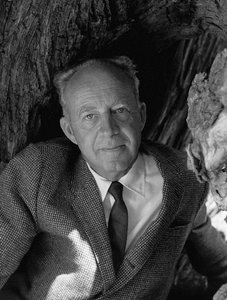







Later in life, Ansel was friends with most, if not all, of the inner circle of the photographic elite of the 20th Century. His closest friend was Edward Weston. Over the years, Ansel and Edward developed a strong respect for each other. He was also close friends with Imogene Cunningham and Dorothea Lange, who teased Ansel mercilessly. He took the ribbing with patience and good humor. Paul Strand and Alfred Stieglitz were his idols and close friends; Edward Steichen was his nemesis. Steichen was one photographer Ansel hated.
Over the years, he worked with Minor White, Willard Van Dyke, Brett and Cole Weston, John Sexton, Mary Ellen Mark, Ruth Bernhardt, and Margaret Bourke White. He consulted for Edward Land, Victor Hasselblad, and George Eastman. He met Henri Cartier Bresson, Brassai, and Man Ray in Europe.
The Friends of Photography held yearly workshops. Featured photographers that participated were Lee Friedlander, Emmet Gowin, Michael Kenna, Annie Leibovitz, Sally Mann, Duane Michals, and Arnold Newman. He was friends with W. Eugene Smith, Bernice Abbott, Bill Brandt, Wynn Bullock, Walker Evans, and Jaques Henri Lartigue. He met William Henry Jackson as an old man in New York, and he was photographed by Yousuf Karsh.
Ansel was also friends with many musicians, artists, and poets. Later in life, Ansel was close to his favorite pianist, Vladimir Ashkenazy. Called Vova by his friends, Ashkenazy was hired by Virginia and Mary Alinder to play a surprise concert for Ansel’s 80th birthday party.[132] Ansel was delighted with the gift. Vova was also scheduled to play a private concert for Ansel the day Ansel died.
His closest artist friends were painter Georgia O’Keefe, John Marin, and poet Robinson Jeffers.
His closest photo-related friends were Beaumont, Nancy Newhall, David McAlpin, and Mabel Dodge Luhan.
Although maybe not close friends,[133] Ansel was certainly aware of the work of photographers Alfred Eisenstaedt, Robert Cappa, Diane Arbus, Richard Avedon, Lee Friedlander, Elliott Erwitt, Robert Frank, Gary Winogrand, Andre Kertesz, Vivian Maier, Robert Doisneau, and Herb Ritts.

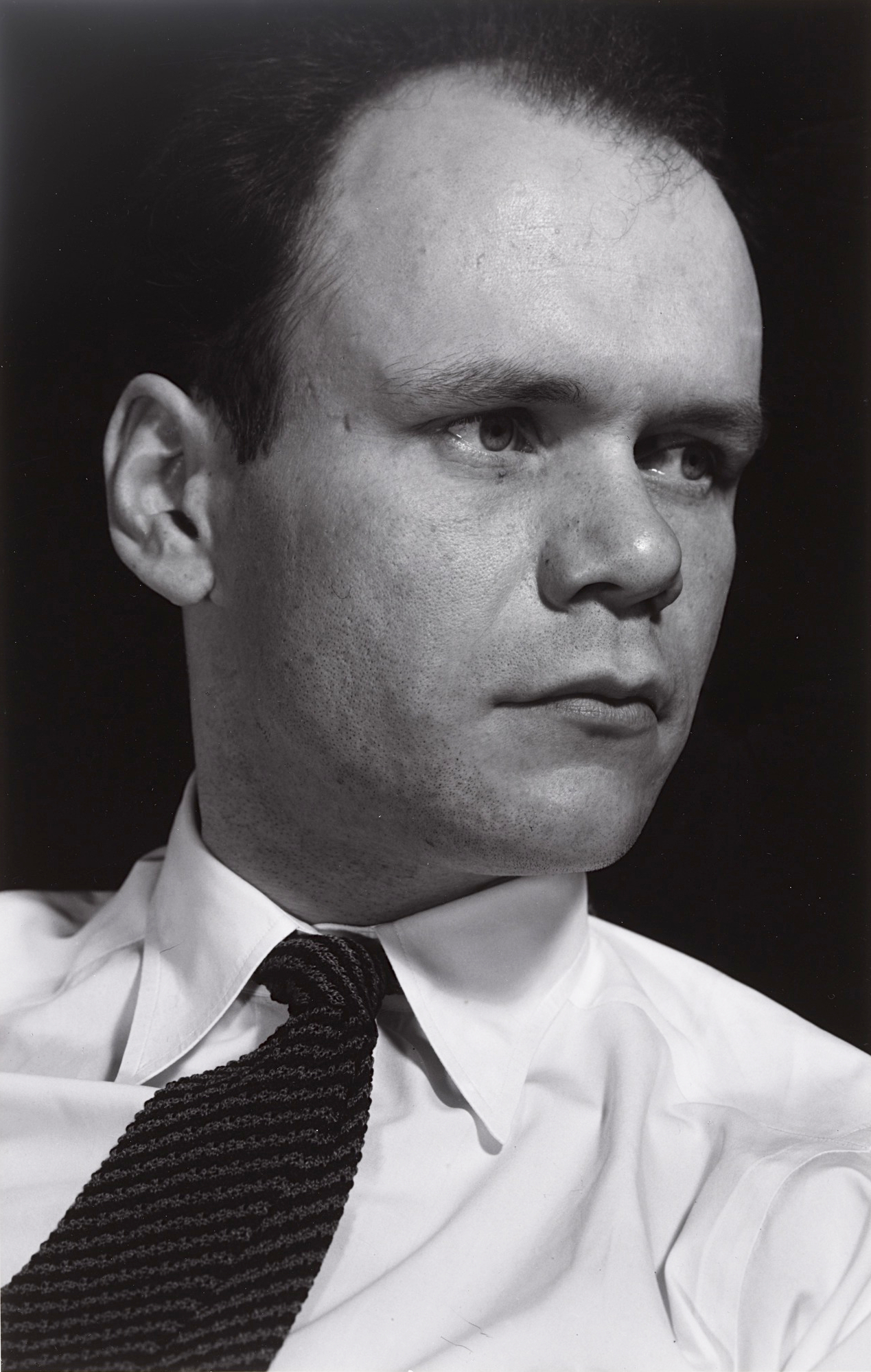
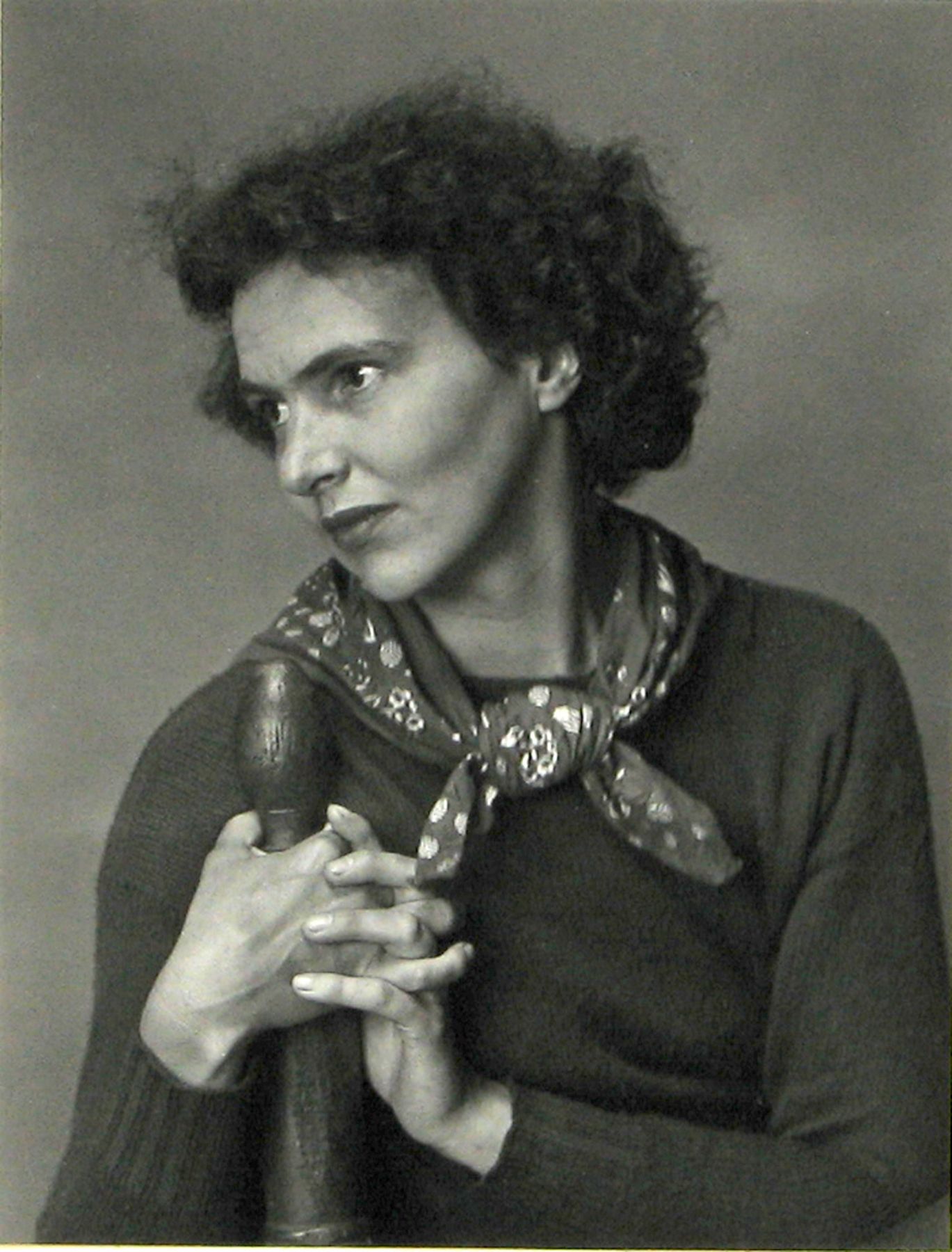
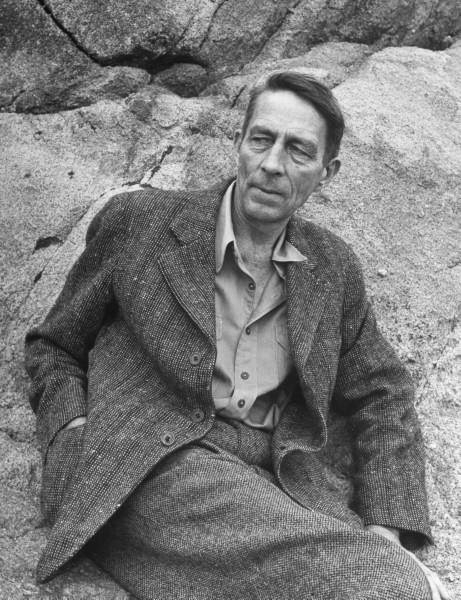
Ansel knew the elite of the elite in the art world. Friends were very important to Ansel; they validated that he belonged in their world.
Paul Strand
With Taos Pueblo about to be published, Ansel returned to New Mexico to stay once again at Los Gallos. On this trip, Ansel shared a two-bedroom gatehouse with Paul and Becky Strand and Georgia O’Keeffe, whom he had met previously. That summer, Ansel’s discussions were primarily with Strand, the first serious photographer he had talked with extensively. Ansel knew that Strand’s photographs had been exhibited in New York and were admired by Alfred Stieglitz. Ansel gives us more detail:
Having brought no prints with him to Taos in 1930, Strand shared his recent negatives, all four by five inches. Placing him in front of a window and cautioning him to hold them only by their edges, slowly, one by one, Strand passed Ansel his precious sheets of film. Ansel was riveted, finding each exposure perfect and every composition ideal.”[134]
That summer with Paul Strand changed Ansel’s life. Strand revealed to him for the first time the full potential of photography. In discussing technique, Strand stressed the importance of glossy printing papers. Glossy papers rendered the qualities of each photograph better. Ansel became an immediate convert; Strand’s rationale was the catalyst that brought him fully into the straight-photography camp. In his autobiography, Ansel claimed that it was this exchange that caused him finally to commit to photography as a career.[135]
Group f/64
With Strand’s advice still echoing in his ears, Ansel began to print on glossy paper; he also changed his subject matter. He began photographing commonplace objects found around the docks and beaches of San Francisco.[136] His conversion to straight photography was almost complete; life was good for Ansel. After a solo exhibition at the Smithsonian Institution in Washington D.C., Ansel was starting to be appreciated nationwide. He was now firmly established in the artistic elite of San Francisco.[137]
In 1932, craving community and a common desire to fight Pictorialism, seven of San Francisco’s photographic elite got together in Oakland, California, for a night of drinking. Ansel Adams, Edward Weston, Imogen Cunningham, Willard Van Dyke[138], Henry Swift, Sonya Noskowiak, and John Paul Edwards, came together, to form a relationship and offer moral support in the fight against Pictorialism.[139] Ansel in his autobiography said:
We agreed with a passionate zeal to a group effort to stem the tides of oppressive pictorialism and to define what creative photography should be. On another evening at Willard’s, we bantered about what we should call ourselves. Picking up a pencil, I drew a curving f/64, representing the smallest and sharpest aperture on a lens, thus Group f/64 was born.[140]
Ansel continues his description:
The members of Group f/64 decided that our first goal would be to prepare a visual manifesto. Our work was varied but shared a fresh approach and perplexed many in the art world! This fresh approach delighted Lloyd Rollins, director of the M. H. de Young Memorial Museum in San Francisco. Rollins had come to one of the gatherings at Willard’s where we had a small display of the group’s work. After looking at our photographs, he immediately offered us an exhibition. This was an important event for each of us; For this exhibition the seven members of Group f/64. invited four others to show with us: Preston Holder, Consuela Kanaga, Alma Lavenson, and Brett Weston, knowing that they represented the same photographic philosophy. A total of eighty photographs were in the show, from four to ten prints per photographer, with prices that now seem ridiculous: Edward charged fifteen dollars per print and the rest of us charged ten.[141]
The group handed out a written manifesto to accompany the visual one at the exhibit, it reads:
Manifesto
The name of this Group is derived from a diaphragm number of the photographic lens. It signifies to a large extent the qualities of clearness and definition of the photographic image which is an important element in the work of members of this Group.The chief object of the Group is to present in frequent shows what it considers the best contemporary photography of the West; in addition to showing the work of its members, it will include prints from other photographers who evidence tendencies in their work similar to that of the Group.
Group f/64 is not pretending to cover the entire spectrum of photography or to indicate through its selection of members any deprecating opinion of the photographers who are not included in its shows. There are a great number of serious workers in photography whose style and technique does not relate to the metier of the Group.
Group f/64 limits its members and invitational names to those workers who are striving to define photography as an art form by simple and direct presentation through purely photographic methods. The Group will show no work at any time that does not conform to its standards of pure photography. Pure photography is defined as possessing no qualities of technique, composition, or idea, a derivative of any other art form. The production of the “Pictorialist,” on the other hand, indicates a devotion to principles of art whichch are directly related to painting and the graphic arts.
The members of Group f/64 believe that photography, as an art form, must develop along lines defined by the actualities and limitations of the photographic medium, and must always remain independent of ideological conventions of art and aesthetics that are reminiscent of a period and culture antedating the growth of the medium itself.
The Group will appreciate information regarding any serious work in photography that has escaped its attention and is favorable towards establishing itself as a Forum of Modern Photography.[142]
Years later, Imogen Cunningham when asked who wrote the manifesto? She replied, “Ask Ansel. He must have written it. Nobody else would.”[143] For Ansel, the group “confirmed his ideas—seeing other work and ‘seeing’ for the first time. “He finally enjoyed and understood Edward Weston. The vibrations of the group increased my understanding and gave me confidence.” Willard Van Dyke recalled that as the youngest member, he found it “tremendously satisfying to come to Ansel Adams and Edward Weston and discuss prints—have them give [my work] serious consideration. Then Imogen Cunningham would make a wisecrack that would pare it right down.”[144]
Group f/64 was a landmark in the history of photography. It brought together photography’s most influential and important artists, all from diverse backgrounds, under one philosophical banner. Together they swore allegiance to the unmanipulated, straight print. They functioned together from 1932 until about 1940. Additional members were added over the years, the most significant being Dorothea Lange.[145]
“Frozen Lake and Cliffs”
The most famous image Ansel displayed in that first Group f/64 exhibit was “Frozen Lake and Cliffs.” Taken on the 1932 Sierra Club Outing in Sequoia National Park,[146] “Frozen Lake and Cliffs” is considered a masterpiece and one of the earliest abstract photographs made directly from nature. Director of Photography at New York’s Museum of Modern Art, John Szarkowski, when talking about “Frozen Lake and Cliffs,” said, “This is not a landscape for picnics, or nature appreciation, but for testing of souls.”[147]
Alfred Stieglitz
Ansel visited New York many times over his lifetime. He had a passion for the West, but the heart of the art world beat in New York. The main priority for visiting New York was to meet Alfred Stieglitz and show him his photographs.
Ansel met Stieglitz for the first time in 1933. Albert Bender suggested he set a priority to meet Stieglitz. Stieglitz had a well-earned reputation as a “curmudgeon who would not suffer fools—he was especially opinionated but… the chief man in America to have raised photography to a higher plane.” Ansel’s fellow photographers Paul Strand and Imogen Cunningham, and artists John Marin and Georgia O’Keeffe all advised Ansel, “Don’t fail to see him.”[148]
Mary Street Alinder tells the story:
They arrived in New York City on the morning of Tuesday, March 28. 1933. The weather was bleak, and the streets stank, piled high with garbage due to a strike. They found and rented an inexpensive studio at the Pickwick Arms Club Residence at a rate of sixteen dollars a week.After settling in, pregnant Virginia retired for a nap. Ansel took a brisk walk, then picked her up for lunch and a visit to the Museum of Modem Art (MoMA), followed by drinks and a Broadway show.
The next morning, leaving Virginia at the Pickwick Arms to unpack, Ansel charged off, intent on showing his photographs to Alfred Stieglitz at his gallery, An American Place. Composed of three galleries, a small office, and a storage room/darkroom on the seventeenth floor of an office building, Stieglitz founded An American Place in 1929…. An American Place attained an almost immediate status as an influential gallery that was sympathetic to artists—provided, of course, that the artist was deemed worthy by Stieglitz.
Ansel entered An American Place clutching a portfolio of prints (High Sierra landscapes and Group f/64 subjects), and a copy of Taos Pueblo. Stieglitz greeted him with a scowl, and a warning that he was too busy to be bothered, he allowed that if Ansel came back in a few hours, he might look at his work. Hopes dashed and offense taken Ansel huffed back to his room and advised Virginia that they were leaving the city.
Sensibly, Virginia insisted that Ansel give Stieglitz one more chance. His return visit to An American Place later that afternoon went even better than he could have dreamed. Bidding him sit down, Stieglitz took Ansel’s portfolio, untied the three black ribbons that held it shut, and slowly examined each print. There was only one chair in the gallery, and Stieglitz was sitting on it. Finding no other option, Ansel lowered himself onto the radiator. Whenever he tried to comment on one of the images, Stieglitz would glare him back into silence. Finally, Stieglitz tied the portfolio shut, paused, and then, with great thoughtfulness, untied it and began studying each print again. He gave the same careful attention to Taos Pueblo and expressed great appreciation for the elegant simplicity of both the design and the images … Stieglitz, with a direct look at Ansel, pronounced the work among the finest he had seen.[149]
Stieglitz came away from their meeting impressed by this Western man and his work. They were opposites, but each was committed to the art of photography. Although he did not offer Ansel an exhibition, Stieglitz urged him to write and visit whenever possible. Stieglitz’s theory of the equivalent helped Ansel’s photographic dreams take flight. Stieglitz promised that Ansel could discover more if only he would put his emotions into the creation of each photograph.[150]
From that first meeting, Ansel became Stieglitz’s devoted friend and follower. He believed that Stieglitz was one of the greatest photographers of the twentieth century. He was inspired by and often repeated Stieglitz’s mantra: “I go out into the world. I take a photograph. I give it to you as the equivalent of what I saw and felt.”[151]
Ansel headed East in January 1936 to visit his friend in New York and attend a hearing in Washington DC. He wanted to show Stieglitz his more recent photographs. Ansel arrived with his portfolio in hand. Looking at his work, Stieglitz confirmed Ansel’s belief that he was making the best photographs of his life. After leaving him hanging for a few days, Stieglitz offered Ansel his long-sought show at An American Place in November. Ansel was overjoyed; planning for this event would be the focus of his entire year.[152]
Every negative used for the American Place exhibition had been taken during the previous five years. Four had been in the Group f/64 show, and most were in the Group f/64 style: close-ups of battered wood, cemetery stones, and rusted anchors. Ansel selected only pictures that Stieglitz had expressed a liking for. [153]




That November Ansel arrived in the city too late to visit the exhibition, but the next morning he entered An American Place and became transfixed by Stieglitz’s presentation, from the soft gray walls (a color selected by O’Keeffe) to the thoughtful sequencing of which images hung next to each other. Most were hung in a line, but a few were grouped in twos or threes, and a few were double hung, one above another. Ansel had achieved the pinnacle of success in the established art world.[154]
On one of his various trips to New York in the 1930s and 40s, he visited Alfred Stieglitz with his new Contax camera in hand. Ansel was sitting on a stool in the main gallery of An American Place and saw Stieglitz walking toward him. He quickly made an exposure. It happens to be one of the rare images of Stieglitz smiling. Stieglitz remarked, “If I had a camera like that, referring to the Contax, I would close this place up and be out on the streets of the city!”[155]
Ansel also visited New York again on June 4, 1944, with Nancy Newhall; Rome had fallen to the Allied forces, followed two days later by the D-day invasion of Normandy. The stores shut at midday, so people could go to church. There was a “strange mood in the streets,“ a drifting crowd in working clothes, eddying about the cathedrals. A grim holiday.”’ Deeply moved, Nancy and Ansel headed to Stieglitz’s gallery. After they cheered Stieglitz out of his habitual gloom, Ansel photographed like mad. In the small room that served as his office, Stieglitz reclined on a daybed and talked with Nancy while Ansel photographed. Line and Curve, the painting by Georgia O’Keeffe that was Stieglitz’s favorite, was propped behind his head on a shelf, along with a painting by John Marin.[156]
Over the course of their thirteen-year friendship, Ansel photographed Alfred Stieglitz many times. The portrait he made of the smiling Stieglitz was special, but the portrait with the O’Keeffe painting was Ansel’s favorite.[157]
Edward Steichen
After his success with Alfred Stieglitz, Ansel was eager to meet all the leading photographers in New York; Edward Steichen was next. Ansel’s brief visit to Steichen didn’t go well. Ansel tells the story:
Edward Steichen and I were at swords’ points from the moment we met in 1933…. I phoned for a possible appointment with Steichen, and his secretary set ten the following morning, saying, “I am sure Mr. Steichen would love to see you!” I arrived at ten and waited. The great man appeared in a flurry of preoccupation and [snapped], “I can’t see you now; come back sometime, maybe next week,” and then disappeared through a door with the obvious hint that I was quite unnecessary to him and the world. I was naturally a bit miffed, but I thought that he must be busy and harassed. I returned but never obtained a meeting during that visit to New York. I felt his arrogance, not because he was too busy to see me, but because of his manner of disdain and his abiding sense of power and prestige. Stieglitz reacted to my impressions by saying, “That’s Steichen. Keep your distance and you will be happier.”[158]
Ansel and Edward Steichen knocked heads many times over the years. The most serious happened when Steichen was organizing his Family of Man project. He wanted to include Ansel’s image of “Mount Williamson from Manzanar.” Steichen insisted on printing the image himself and asked Ansel if he could borrow the negative. Ansel refused and offered to make the print himself. Steichen insisted,[159] so Ansel gave him a copy negative. When Ansel saw the mural-sized final image, he became physically ill. The image had been cropped, and there was a fingerprint that was so large, that it looked like a “mark from God.”[160]
To Steichen’s credit, he was the first to see the greatness of “Moonrise, Hernandez, New Mexico.” Steichen was serving as Photo Judge for the U.S. Camera Annual of 1943 and chose “Moonrise” as the feature photo one year before it was officially exhibited for the first time in 1944.[161] Steichen’s eye for pictures was legendary.[162]
1934 to 1938
1934 to 1938 were busy for Ansel. He was elected director of the Sierra Club (1934) and served for thirty-seven years. He became an activist and leader for environmental causes, giving thousands of lectures. Ansel’s first technical book was published. (1935) The how-to manual entitled Making a Photograph remained in print for two decades. Ansel became the Twentieth Century’s most influential teacher of photography. Daughter Anne was born. (1935) Ansel has his solo show at Alfred Stieglitz’s legendary An American Place gallery. (1936) This is one of his proudest moments as an artist. Ansel was active in the fight to establish a National Park at Kings Canyon. (1936) Photographed with Edward Weston in High Sierra. (1937) Edward Weston became Ansel’s best friend. Their professional bond lasts until Weston died in 1958. Sierra Nevada: The John Muir Trail is published. Ansel made “ClearingWinter Storm” in Yosemite. (1938) This further cements Ansel’s reputation as an artist.
Patsy English and Depression
Ansel’s future seemed golden, but he was feeling overwhelmed and stressed.[163] He had two major shows to prepare for, a growing family, and new personal work he wanted to work on. To further complicate matters, he went through a mid-life crisis that nearly destroyed his marriage and sent him into a freefall of depression.
It started with Ansel needing a model for two big commercial jobs he was under pressure to complete.[164]
Patsy English stood out; she was vivacious, young, smart, and looked great in a pair of jeans.[165] Although she had no professional experience, she agreed to model, and she proved so proficient that Ansel asked her back for several shooting sessions. Mary Street Alinder said:
When she confided that she wanted to be a photographer, not a model, Ansel “hired” her as his darkroom assistant. Only twenty-one years old, she knew nothing about photography. She was in the darkroom with Ansel almost every day during the two months in the fall of 1936 that he printed for the exhibit at An American Place.[166]
Ansel fell head over heels in love with Patsy. With her spirit beside him, he could conquer the world.[167] Andrea G Stillman[168] in her book, Looking at Ansel Adams, the Photographs and the Man described Ansel’s predicament:
He was married—and Virginia played a central role in his life. She not only ran the house and took care of the children, but she also cared for Ansel’s aged parents and his maiden aunt who lived next door. She helped in other ways as well. Many of Ansel’s letters to Virginia include instructions related to his work, including what photographic supplies to order …. and there were two young children—Michael was born in 1933, and Anne was born in 1935.[169]
Ansel was in an untenable situation. He had to decide, but he couldn’t. On the evening of October 14, 1936, Harry Best, Virginia’s father, died.[170] Mary Street Alinder said:
With her father’s death, Virginia inherited Best’s Studio. If he remained with Virginia, Ansel would now have his gallery and house smack-dab in the middle of his treasured Yosemite. He loved and respected Virginia as the mother of his children, but his passion for Patsy was immense.[171]
Three weeks after Harry Best’s death, with the two women demanding he choose, Ansel skipped town to visit his Chicago[172] and New York exhibitions.[173] When Ansel returned home, he suffered a nervous breakdown and was hospitalized.[174] Mary Street Alinder said:
He felt defeated by his personal life, his time was up. Emotionally drained Ansel lay despondent in his hospital bed, unable to decide and unwilling to face either woman. He knew what his choices were—either start a new life with Patsy or hoist the burdens of family. There was everything to lose either way.[175]
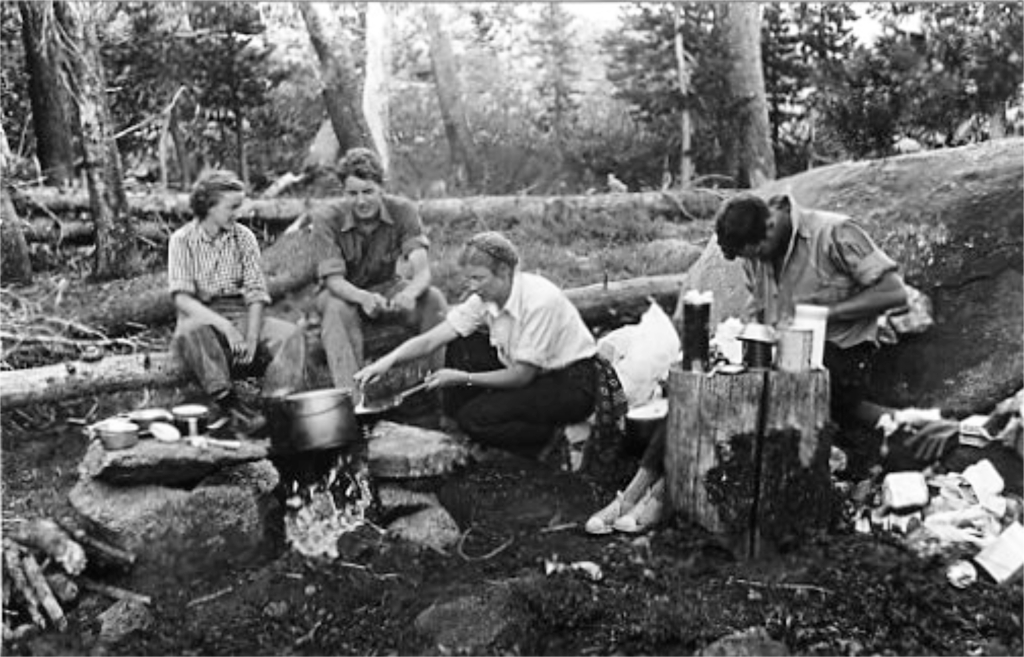
Ansel had a tremendous fear of confrontation, and he couldn’t face a divorce. All his life, he sought to avoid unpleasant situations in business and personal relationships, preferring to keep the peace at all costs. With anguish, he decided to stay with Virginia.[176] Andrea G Stillman described what happened:
Patsy came to visit Ansel in the hospital, but as she climbed the stairs to his floor, she was met by his friend Ted Spencer, who delivered a verbal “Dear John” to her, explaining that Ansel had decided not to leave Virginia. Patsy continued to Ansel’s room, where she found him subdued and a bit stuttery as he [quietly] informed her that he was staying with his wife, adding that ‘he hoped they could still be friends, and that was that.“[177]
Ansel and Virginia’s marriage never completely healed.[178]
“Clearing Winter Storm”
For many years Ansel had visualized the perfect picture of Yosemite from Inspiration Point. He felt that it provided the grandest and best view of the valley. Over the years he took many images from that spot, but one stands out above the rest, “Clearing Winter Storm.”
On December 12, 1935,[179] a storm raging above the valley offered Ansel the perfect combination of weather and light[180] to make his masterpiece, and he pounced. Ansel wrote:
A sudden heavy rainstorm hit, which changed to wet snow at midday. I drove to my chosen site and quickly set up my 8×10 camera to capture the marvelous vista spread before me. The clouds were moving rapidly, and I waited until the valley was revealed under a mixture of snow and clouds with a silver light gilding Bridal Veil Falls, realizing the photograph. made the essential side and bottom compositional decisions” and “waited for the clouds to form within the top areas of the image.[181]
“Clearing Winter Storm” is truly a masterpiece. It’s a painting on acetate. The weather proved to be everything to “Clearing Winter Storm”… clouds modulate the scene, adding a soft texture to the normal hardness of a place formed of granite,[182] but it was almost lost. Mary Street Alinder wrote:
The negative of “Clearing Winter Storm”, which would become one of his most famous photographs, nearly burned up in Ansel’s darkroom fire. During the fire, its eight-by-ten-inch film negative got quite warm, and when it was plunged into the bathtub, water spots took up permanent residency. “Clearing Winter Storm’s”‘s sky is generally blurry, the film grain reticulated to a greater extent than normal, possibly due to the negative’s exposure to heat just below its combustion point. Ansel always disliked printing this negative and made few prints from it for many years. But when people saw “Clearing Winter Storm,”, they clamored for it Ansel was pushed to make many prints over the years.”[183]
Ansel was especially bad at dating his negatives, believing that dates were not crucial to his creative work. Mary Street Alinder wrote:
Over time, Ansel forgot that “Clearing Winter Storm’s” negative had been through the fire, and erroneously dated the photograph 1944 in show after show and book after book. But in 1945, he wrote a letter to the director of the art museum in St Louis to explain that the print of Clearing Winter Storm he was sending needed to be framed under glass immediately upon arrival because its negative had been “water-marked” in his darkroom fire a few years earlier. Because of that damage, each print he made from it needed a large amount of spotting, which would not be detectable under glass.[184]
“Clearing Winter Storm” today remains one of Ansel’s most popular and enduring images and is considered by many to be the quintessential image of Yosemite.
Edward Weston
Ansel Adams and Edward Weston met in 1928 at the home of Albert Bender. Bender insisted that Ansel and Edward show their photographs that evening, and then he convinced Ansel to play the piano. Weston liked the music but was unimpressed with the photographs: “The thought that in this young musician, with such a future before him, we’d have one of the greatest photographers we’ve ever had, never so much as crossed my mind.” Ansel’s opinion of Edward and his work was similarly lackluster. He described Edward as “slight of figure, thoughtful, and reserved” and considered the photographs he shared “hard and mannered.”[185] Over the next few years, their opinions of each other’s photographs changed. Their relationship expanded to a deep and lasting personal friendship, one of the most important of Ansel’s life.[186]
The most famous portrait Ansel took of Edward Weston was taken at Carmel, near Weston’s home. Ansel described that day:
One day when visiting Edward and Charis at their Carmel Highlands home, I expressed the desire to photograph him. I asked Charis if she knew of an appropriate area for a photograph of Edward. Always imaginative, she suggested a very large eucalyptus tree nearby: “Lots of exciting roots in view.”[187]
At first, I was not satisfied with the location, and I began to explore nearby. Edward sat down at the base of the tree to await my decision. I suddenly saw the inevitable image … The relatively small figure at the base of the huge tree, the convoluted roots, and the beautiful quiet light — what more could I hope for? I pleaded, “Edward, please just keep sitting there.” I was very excited and fumbled with my meter, dropped my focusing, cloth and inadvertently kicked the tripod leg. Edward was amused and relaxed.[188]”



In the summer of 1937, Edward and Charis joined Ansel in Yosemite for a pack trip into the High Sierra. Edward made a series of beautiful photographs of juniper trees, and Ansel photographed Edward photographing. Charis and Edward returned in 1938. Edward brought 150 of his new prints, Ansel wrote, “I was overcome. He is as good a photographer as he is a person.”[189]
Besides trading prints and portraits, Ansel and Edward regularly exchanged technical information about photography. Weston asked Ansel’s advice, and Ansel happily explained in detail anything and everything of a technical nature—from lenses to cameras to chemicals.[190] Regardless of Edward’s lack of technical expertise, Ansel idolized the man and the photographer. “Edward worked with a monk-like simplicity. Weston’s prints had “an almost ascetic quality” for Ansel. Ansel told Weston, “I believe you to be one of the greatest artists of our time—certainly the top man in photography. I mean that in every way. I am proud to know you, to know you are my friend.”[191]
Ansel was dismayed when Edward and Charis split in 1945. The following year Edward was diagnosed with Parkinson’s disease. Ansel was very concerned about his friend. By 1950 Weston’s Parkinson’s was so advanced that he could no longer print his negatives. Money had always been scarce, but now it became even more scarce. Ansel and Virginia convinced Edward that a book of his photographs of Point Lobos would bring him much-needed income. The two large spiral-bound collections of photographs were beautifully printed on thick glossy paper, with technical information and a modicum of text, but they didn’t sell well. They originally sold for $10 each, but they are long out of print. Copies in good condition routinely bring several hundred dollars today.[192]
Ansel also tried to help by obtaining commercial assignments for Weston, but Weston felt that commercial work was not for him. Edward lived simply. He photographed vegetables and fruits, then ate them. Edward’s darkroom was a wooden shack with a bare bulb and so many holes in the walls that he could print only before sunrise or after sunset.[193]
Edward suffered from Parkinson’s for more than ten years. He died peacefully in his chair on New Year’s Day in 1958. Ansel wrote, “He was one of my dearest friends, a man of genius and compassion.”[194]
Ansel and Edward shared a deep admiration for each other’s photographic legacy. Edward wrote of Ansel, “One of the greatest photographers we’ve ever had. Ansel wrote of Edward, “Weston securely holds the position of one of the greatest, if not the greatest living photographer.”[195]
Beaumont and Nancy Newhall
Ansel’s first contact with Beaumont Newhall was a blunt review of his introduction to The Studio Annual of the Camera, 1934-35. Ansel was a young and inexperienced critic surviving in the complex world of art, photography, and museums. Newhall criticized Ansel for his failure to be sufficiently objective in his opinions.[196]
When Ansel published his first technical book, Making a Photograph, in 1935, He received a gracious letter from Beaumont sending congratulations. Beaumont had a strong interest in photography, and this book reaffirmed his opinion that it was an art form.[197]
Following Beaumont’s letter, they started corresponding, and in 1939, while in New York, Ansel met both Beaumont and his wife, Nancy, for the first time. Ansel said, “The three of us hit it off immediately, bursting with stories and jokes.”[198] Beaumont was trained as an art historian at Harvard and hired as a librarian at The Museum of Modern Art in New York. Nancy Parker graduated from Smith College, where she majored in creative writing, drama, and painting. She also studied at the Art Students League in New York.[199]
In 1940, Ansel was asked to curate a major exhibition, “A Pageant of Photography,” for the Golden Gate Exposition in San Francisco. The Newhall’s announced that they would visit San Francisco to see me and the exhibit.[200] Ansel decided they must see the sights, and they had a grand time together. Ansel drove the Newhall’s to Carmel, where he introduced them to Edward Weston. They visited his home and went with him to Point Lobos, where they experienced the wonders of his work and environment. Thus began a close association culminating in Nancy’s editing of Edward’s Daybooks, the very personal journals of his life and philosophy finally published in 1961 (Volume I: Mexico) and 1966 (Volume II: California).[201]
MoMA
Soon after their return to New York, Beaumont developed the idea to create a department of photography at the Museum of Modern Art. If successful, it would mean the very first long-term commitment to photography as a fine art by a major museum.[202]
With the help of David McAlpin[203] and the guidance of Beaumont, the fledgling department was successful from the start. McAlpin wrote to Ansel on September 7, 1940, “Dear Adams, Newhall and I both feel it essential for you to be here for six months to a year as a member of the committee and special advisor in launching the Photo Dept.”[204]
Beaumont and Ansel curated the first exhibit of the new department of photography at MoMA, “Sixty Photographs.” It was an unqualified success. It was a vigorous survey of creative photography from its beginnings. The list of photographers displayed included Berenice Abbott, Ansel Adams, Eugene Atget, Ruth Bernhard, Mathew Brady, Henri Cartier-Bresson, P. H. Emerson, Walker Evans, David Octavius Hill, and Robert Adamson, Dorothea Lange, Moholy-Nagy, T. H. O’Sullivan, Eliot Porter, Man Ray, Edward Steichen, Alfred Stieglitz, Paul Strand, Brett Weston, Edward Weston, and many others.
When World War II arrived, Beaumont enlisted in the air corps and gave distinguished service as a photo interpreter in the Mediterranean theater. Much of the escalating workload at MoMA during the war years fell on Nancy and Ansel’s shoulders.[205]
While Beaumont was in Italy during the war, Edward Steichen began to muscle past Nancy and Ansel, intruding himself on the MoMA photography department scene. Steichen did not like Nancy, and she detested him. As a friend said, “He can make women cry and he revels in it.”[206]
After World War II ended; Beaumont returned to the museum and found that many of the trustees and other powers swore allegiance to Steichen’s ideas about photography and exhibitions. Ansel truly detested Steichen’s large exhibits because they were completely subject-oriented. He refused to participate in them for many years.[207]
After his separation from MoMA, Beaumont was appointed the first curator of George Eastman House in Rochester, New York. During the next two decades, Beaumont developed the International Museum of Photography at George Eastman House into the greatest collection of creative photographs in the world. During these years, Nancy, Beaumont, and Ansel continued to collaborate on many books and exhibitions, enjoying frequent visits and work sessions together.[208] Nancy and Ansel produced seven books together: Death Valley (1954), Mission San Xavier del Bac (1954), The Pageant of History in Northern California (1954), Yosemite Valley (1959), This Is the American Earth (1960), Fiat Lux (1967), and The Tetons and the Yellowstone (1970).
In 1971, Beaumont and Nancy moved to Albuquerque, where Beaumont began teaching the history of photography at the University of New Mexico. Nancy and Ansel continued to collaborate, though not as often as in the past.[209]
One afternoon in 1974 Ansel received a call from Beaumont and Nancy, who were in the Tetons having a short vacation. They had taken raft trips on the Snake River. The next evening Beaumont called and told Ansel Nancy had an accident.[210] It was during the last afternoon trip; they were gliding along the south bank of the river and a large tree fell without warning into the river, directly on the inflated raft, striking Nancy. On July 7, 1974, Beaumont called to tell Ansel, Nancy had died. Ansel always felt guilty that he had not flown down to be with Beaumont during this tragic time.[211]
Beaumont brought Nancy’s ashes to a beautiful beach near Ansel’s home in Caramel, walked out into the water, and spread them in the waters of the Pacific Ocean. In 1977, Virginia and Ansel created and endowed the Beaumont and Nancy Newhall Curatorial Fellowship in Photography at MoMA.[212]
The Photo League
In the 1930s and 40s, any photographer in America with a social conscience joined New York’s Photo League.[213] The Photo League was a cooperative of photographers who banded together around a range of common social and creative causes. The League had its origins in the communist-associated worker’s photography movement that emerged in the early 1930s.[214] The League was well beyond the usual camera club. Members of the League commonly shared the philosophy that photography’s best use was as a tool for social change. Alongside their commitment to social realism, students were encouraged to develop their style, making photographs that didn’t just document reality but also questioned it. Elements like shape, form, and tonality became important considerations.
Throughout the 1930s and 40s, the Photo League thrived as one of the most progressive, dynamic, and creative centers for photography in America.[215]
While the Photo League set out to document social conditions, it would turn out to champion photography as an art form. Featuring a school, studio, darkrooms, and salon, the Photo League Headquarters soon became a hive of activity and a place to meet for the city’s young, aspiring photographers.[216]
Founded in 1936, the League included some of the most noted American photographers of the mid-20th century among its members. The list of notable photographers who were active in the League included Margaret Bourke-White, W. Eugene Smith, Helen Levitt, Arthur Rothstein, Beaumont Newhall, Nancy Newhall, Richard Avedon, Weegee, Robert Frank, Harold Feinstein, Dorothea Lange, Paul Strand, Ansel Adams, Edward Weston, and Minor White. Ansel most likely joined in 1940 when he was drumming up support for MOMA’s new photography department.[217]
Towards the end of the 1940s, when McCarthyism started gathering momentum, long-suspicious authorities finally decided to clamp down on the Photo League’s confrontational and uncensored representations of urban American society. Few of the members who joined after 1940 were aware of the group’s political origins; in 1948, the Photo League was declared a subversive organization and blacklisted.[218]
Edward Weston, Dorothea Lange, Paul Strand, Ansel, and many others sent letters of support confirming their allegiance to the country as well as to the Photo League. Ansel’s letter proclaimed that he would stand by the organization, “I am a member of the PHOTO LEAGUE and proud of it.” Ansel also took pains to assert that he was certainly no commie![219] With the blacklist taking its toll, the Photo League’s members gradually began to resign,[220] and activities eventually ceased in 1951.
The Zone System
Ansel was always in high demand to teach photography. Around late 1939, Ansel and Professor Fred Archer[221] taught a course at the Art Center School in Los Angeles. They devised various photographic teaching tools that would enable students to develop their vision, independent of the teacher, but still control the tones and values in the photograph. They called their method the Zone System. The Zone System assigned visible light to eleven zones numbered from zero (absolute black) to Roman numeral ten (absolute white).[222] The Zone System provided photographers with a systematic and flexible method of precisely defining the relationship between vision and outcome.
The great photographer Henri Cartier-Bresson once said, “Capture the shadow while the substance still remains.” I’m not sure that Ansel fully realized The Zone System’s impact on photography education. As a young photography student at Utah State University, I was required to take a course on the Zone System. It was during that course I learned what a good photograph looked like and how to control the relationship between exposure, development, and tonality.
The Zone System seems complicated. Early photographers complained that it was too difficult and unnecessary. The truth is, it is complicated, but when you get proficient enough, it makes a lot of sense and does work. The basic concept of the Zone System is to expose for the shadows and develop for the highlights. Once you understand this concept, it begins to make sense. The most important and difficult part is the calibration of the camera’s shutter and refinement of the development process.
When I took the class in 1984, the first assignment was to test and calibrate my camera shutter and read the results on a densitometer. After many rolls of 120mm film and a few tries, I knew exactly how far my shutter’s[223] timing was off and how much to compensate in an exposure. I wrote everything in a little notebook that I could easily refer to when out photographing. This allowed me to adjust my exposure and move the tonality up or down. I also fine-tuned my developing process to be as consistent as possible. All the temperatures had to be exact. After bringing the developer to the correct temperature, I used a water bath to submerge my developing tank in to keep the temperature at a constant 68°.
I learned that a normal exposure had detail in the shadows and highlights and was a five-stop or five-zone scene; that was the baseline. Usually, a normal exposure was from Zone III (darkest with detail) to Zone VII (lightest with detail). Ansel’s photographs had a much wider tonal scale. He often put his shadows in Zone II and highlights in Zone VIII, or IX, giving him a rich, well-detailed image.
When I was out photographing, I would use my spot meter to measure the deepest shadow and the brightest highlight within the scene and determine how many stops or zones the scene contained. I would adjust the exposure for the shadows, and then I would adjust the development for the highlights. I had my camera calibrated to do up to a plus or minus three-stop exposure. In effect, I could move the highlights from one to three stops or zones in either direction while keeping the shadows consistent.
The most visionary aspect of the Zone System is that it can be applied to not only black and white photography but digital and color photography as well. When Ansel and Fred Archer developed the Zone System, they were decades ahead of their time.
“Moonrise, Hernandez, NM”

“Moonrise, Hernandez, New Mexico”is the most well-known and enduring image of Ansel’s long career. Its story is legendary and has achieved levels of success not seen in the history of photography.
On October 10, 1941, Ansel set off from Yosemite on a photographic trip to the Southwest. He traveled with his eight-year-old son, Michael, and his close friend Cedric Wright. They left with a car full of equipment and proceeded to Zion National Park, the Grand Canyon, Canyon de Chelly, and South to Santa Fe.[224] As they came toward the town of Hernandez, New Mexico, Ansel looked to his left and saw the moon rising above the Sangre de Cristo Mountains.[225]
Ansel tells the story:
I observed a fantastic scene as we approached the village of Hernandez. In the east, the moon was rising over distant clouds and snow peaks, and in the west, the late afternoon sun glanced over a south-flowing cloud bank and blazed a brilliant white upon the crosses in the church cemetery. I steered the station wagon into the deep shoulder along the road and jumped out, scrambling to get my equipment together, yelling at Michael and Cedric to “Get this! Get that, for God’s sake! We don’t have much time!” With the camera assembled and the image composed and focused, I could not find my Weston exposure meter! Behind me, the sun was about to disappear behind the clouds, and I was desperate. I suddenly recalled that the luminance of the moon was 250 candles per square foot. I placed this value on Zone VII of the exposure scale; with the Wratten G (No. 15) deep yellow filter, the exposure was one second at f/32. I had no accurate reading of the shadow foreground values. After the first exposure, I quickly reversed the 8 x10 film holder to make a duplicate negative, But as I pulled out the slide the sunlight left the crosses, and the magical moment was gone forever.[226]
Ansel continues:
The negative was quite difficult to print; several years later I decided to intensify the foreground to increase contrast. I first refixed and washed the negative, then treated the lower section of the image with a dilute solution of Kodak IN-5 intensifier. Printing was a bit easier thereafter, although it remains a challenge.[227]

Ansel knew it was special when he released the shutter, but he never anticipated the impact it would have over the decades. The print orders blew up. It got so busy that his photographic assistant[228] suggested that he stop accepting new print orders. This was a difficult concept for Ansel to grasp. He had watched his gentle, beloved father work all his life at a job he did not enjoy, supporting the family and paying off debts from a failed family business. His mother’s cold disapproval of his father’s lack of success soured family life, and Ansel grew up with a constant fear of not having enough money.[229]
Andrea G Stillman in her book, Looking at Ansel Adams, The Photographs and the Man continues the story:
After many conversations and much reassurance, Ansel’s business manager, Bill Turnage, convinced Ansel that he could indeed afford to stop accepting orders for prints. In the summer of 1975, he announced that December 31 was the last day anyone—individuals, museums, or galleries—could place an order for a photograph. It was as if a weight had been lifted from his shoulders.[230]
The only problem was the enormous number of orders for prints (over 1,000 prints, of which 320 were for Moonrise) that poured in before the December 31 deadline. That backlog obligated Ansel to print “the same old thing” until 1978. When the last orders were finally filled, he embarked on another monumental task: making hundreds of prints (including his most well-known images) for museum sets to be purchased by collectors and donated to museums. These two projects meant that Ansel did not effectively escape the darkroom until he was eighty years old. By then he didn’t have the energy or drive to make new pictures or spend hours in the darkroom printing “unseen” images.[231]
Ansel never recorded the dates of his photographs; he thought dates were unimportant. Beaumont Newhall wanted to find the exact date of “Moonrise,” so he enlisted the help of Dr. David Elmore at the High-Altitude Observatory in Boulder, Colorado. Using data from a visit to the site, analysis of the moon’s position in the photograph, and lunar azimuth tables, he determined that the exposure was made at approximately 4:05 p.m. on October 31, 1941. Another scientist, Dennis di Cicco spent ten years, made two trips to Hernandez, and crunched the same data with the knowledge that Ansel had placed his tripod not on the current paved road but on the older and slightly lower dirt road in use in 1941. His calculations produced a new, more accurate date and time: November 1, 1941, 4:49:20 p.m. Mountain Standard Time.
Ansel sold more than one thousand prints of “Moonrise,” and he made every one of them himself.[232]
The first print of “Moonrise” sold for around twenty-five dollars in 1941. He sold his last in December 1975 for five hundred dollars.[233] In 1981, a collector paid $71,500 for a mural-sized print (35 x 55 inches). This set a record for any photograph, and the sale sent shockwaves through the photography community. The escalation continued until a print made in December 1948 sold at auction in 2006 for $609,600. Ironically, Ansel didn’t earn a penny from any sales on the secondary market.[234]
Manzanar
In 1942, shortly after Pearl Harbor, the American government, led by President Franklin Roosevelt, instituted racism on a federal level, directed solely at one group of people.[235] Executive Order 9066 was swiftly executed, The War Relocation Authority was formed, and several camps in isolated areas in western states were hastily built.[236] They came in military buses, vans, and military trains, all accompanied by armed guards.[237]
They shared only one common characteristic, “a Japanese ancestor in any degree.”[238] Two-thirds were first-generation American citizens. They lived in American cities, attended American schools, and thought of themselves as Americans.[239] Half of the population were women. One-quarter were school-aged children. Some were infants or elderly people who were barely able to walk. None had been charged with any crime, nor would any of them be in the future.[240] Yet the government claimed that these people were potential enemies of the United States.[241]



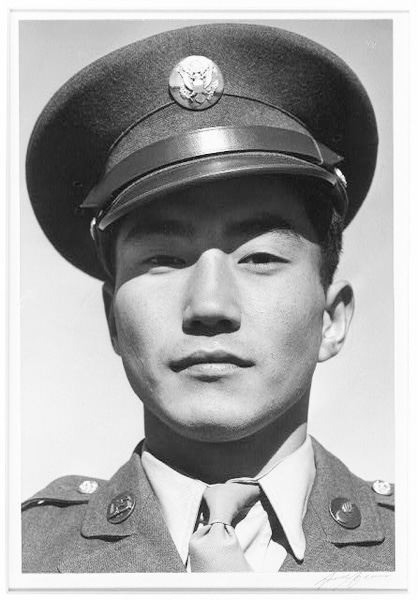
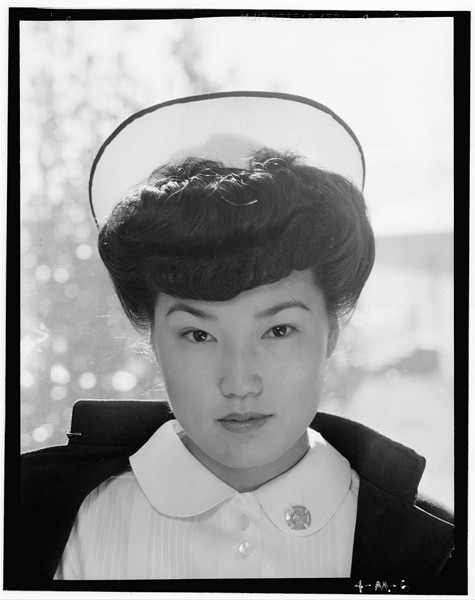


Conditions at Manzanar were harsh, the nighttime temperatures dropping to freezing. In the summer, temperatures often rose above 110 degrees.[242] Children were born there; people died there. Most prisoners spent as long as three and a half years there.
The true heroes of Manzanar were the Japanese internees and Director Ralph Merritt[243]. … In his Autobiography, Ansel tells what happened:
One day in the late summer of 1943, an old Sierra Club friend, Ralph Merritt, visited me in Yosemite. Recently appointed director of Manzanar, he proposed a photographic project where I would interpret the camp and its people, their daily life, and their relationship to their community and their environment. He said, “I cannot pay you a cent, but I can put you up and feed you.” I immediately accepted the challenge and first visited Manzanar in the late fall of 1943.[244]
The invitation to Ansel was extended in the hope that through his work, the people of Manzanar might be recognized for their loyalty to America even in the face of such gross mistreatment.[245] Ansel’s photographs emphasized that these were individuals as American as any other citizen. During his time at Manzanar, Ansel made many well-known images. He made close-up portraits, each undeniably unique and human. He photographed families living in their simple quarters[246] spruced up with creative, homey touches. His pictures show hardworking people trying to survive. One particularly strong image reveals a simple still life of a table-top in the Yonemitsu family’s quarters covered with a small lace doily. A framed picture of a Caucasian Jesus leans against a portrait of their son, Bob, a PFC in military uniform, with three letters from him tucked to the side. Ansel quietly captured the irony of the son fighting for a country that had imprisoned his parents. Over the course of the project, Ansel visited Manzanar many times.[247] Mary Street Alinder described one such visit:
When Nancy Newhall joined Ansel on one visit, she was surprised by what she found. They drove into the camp one evening, knocked on a door, and were met by welcoming waves of children and adults, most bent on hugging Ansel and hearing his latest jokes. Over many visits, Ansel had involved himself in the community.[248]
Of the hundreds of great images, Ansel shot at Manzanar, two stand out, “Winter Sunrise, The Sierra Nevada, From Lone Pine, California,” and “Mount Williamson.”
Of “Winter Sunrise,” Ansel said:
One very cold and very early morning in December of 1943, Virginia and I arose before dawn and drove to Lone Pine. I selected a spot not far from the main highway, parked the car, and set up my camera on the platform. We then huddled together in the car, gratefully sipping from a thermos of steaming coffee that Virginia had prepared. Soon, the sun rose above the Inyo Range behind us, glowing pinkly upon the Sierra summits. I scrambled up to my camera, knowing the time was close but feeling it was not quite right. Beams of light began highlighting the brushy trees in the foreground of my composition; they also illuminated the rear end of a horse as it calmly grazed in front of the trees. Frustrated, I watched as the light appeared, just as I had hoped. Serendipitously, the horse momentarily turned to profile, and I made the exposure. Within seconds, the tonal variety that created the mood of the scene was destroyed by a flood of even sunlight.[249]
“Mount Williamson” is one of Ansel’s most dramatic images.[250] Ansel’s biographer Mary Street Alinder described that day:
Between Manzanar and the Sierra lies an amazing field of boulders, rising above which is 14,376-foot-high Mount Williamson, so gigantic that at sunset it casts a shadow seven miles long, fully engulfing the site of the internment camp. In the last days of Manzanar, during August 1945, Ansel drove his Pontiac along the dirt tracks that crisscross the boulder field, climbing toward Mount Williamson. He found his spot, climbed up on the platform, and positioned his eight-by-ten camera. A bird’s-eye view allowed him to tilt the camera down slightly to include the huge rocks that stretched from the car to the mountain, its summit now cloaked with clouds pierced by rays of light from the unseen sun. The sense of scale in the final image is surreal, with the telephoto effect of the long-focus lens making foreground rocks appear as large as the truly gigantic mountain behind them. Mount Williamson from Manzanar is ripe with the mystical and holy presence that Ansel believed permeated the area surrounding the camp. When Nancy Newhall first saw a print, she titled it The Apocalypse.[251]
Born Free and Equal
The plan was for Ansel to produce several exhibits and a book titled, Born Free and Equal from his Manzanar photographs. In the introduction to the book, Ansel described his reasons for accepting the assignment:
Moved by the human story unfolding in the encirclement of desert and mountains, and by the wish to identify my photography . . . with the tragic momentum of the times, I came to Manzanar with my cameras in the fall of 1943. I believe that the arid splendor of the desert, ringed with towering mountains, has strengthened the spirit of the people of Manzanar. … From the harsh soil they have extracted fine crops; they have made gardens glow in the firebreaks and between the barracks. Out of the jostling, dusty confusion of the first bleak days in raw barracks, they have modulated to a democratic internal society and a praiseworthy personal adjustment to conditions beyond their control.[252]
For one week in late January 1944, Ansel mounted an exhibition of his photographs at Manzanar. He felt their first audience should be the internees themselves. A second exhibit was planned for MoMA a few months later. Both the book and the exhibition were favorably received by the press, but the military and the public were a different story.[253]
At MoMA, Nancy Newhall received the project with great enthusiasm. The MoMA exhibit faced challenges from the beginning. Ten days before its scheduled opening in November 1944, the museum administration notified Nancy that the show was not acceptable, that it was more propaganda than art. But the background mutterings overheard were that Born Free and Equal provided succor to the enemy. After hard negotiating by Nancy and Ansel, the exhibition of sixty-one prints was allowed to open in a basement display space.[254]
Born Free and Equal, was published late in 1944. It was poorly printed, publicized, and distributed. At the time, it cost $1.00. Copies were hard to come by. Ansel complained there was not one copy of Born Free and Equal to purchase on the West Coast. The story spread that thousands of copies had been burned. No evidence supports this.
Although the motive of the book was clearly presented in pictures and text, it met with some distressing resistance and was rejected by many as disloyal.[255] Ansel said:
I could tolerate the narrow opinions expressed verbally or in the press, but it was painful to receive a few letters from families who had lost men in the conflict; they were bitter and incapable of making objective distinctions between the Nisei and Japanese nationals. How can you adequately reply to a couple who lost their three sons in the Pacific war?[256]
Adams did not renew the copyright on Born Free and Equal. At the same time, he gave the Library of Congress the negatives and prints of his work at Manzanar, in hopes that the full story would eventually—perhaps at a more objective time—reach most of the American people.[257]
Because of Director Merritt’s enlightened administration, a greater photographic record exists of life at Manzanar than at any other internment camps. In addition to Adams, Dorothea Lange, Life magazine photographers, and many newspapers and wire-service photographers from the outside visited Manzanar during the camp’s operation. But the camp also had a resident photographer.[258]
Toyo Miyatake was a professional photographer in Los Angeles. He was forced to move with his family into the camp. He was able to store his photographic equipment but not bring it into the camp. At the time, by military orders, “Japanese” were forbidden even to own cameras. Miyatake smuggled a lens and shutter into the camp. With those, he built a wooden camera and began to take pictures.[259]
When Director Merritt found out, he allowed Miyatake to send for the rest of his equipment and supplies and to continue his work.[260] Under regulations, Miyatake could, for a time, only load and set the camera; a Caucasian had to trip the shutter. Eventually, that restriction was lifted too. Miyatake’s photographs of Manzanar are excellent and stand beside Ansel’s as a testament to the Japanese people.[261]
Dorothea Lang
Photographer Dorothea Lange had preceded Ansel at Manzanar. She was there in early 1942 when the camp was newly open, and she documented the arrival of the first bewildered Japanese Americans in their desolate surroundings. By the time Ansel arrived in the fall of 1943, Ralph Merritt’s humane leadership and the natural resilience and hard work of the internees had effected a tremendous change.[262]

When she saw Born Free and Equal in early 1945, Dorothea was appalled. Her photographs of Manzanar mirrored her anger at the situation, communicating misery first and foremost. For her, doing anything less was being soft, and she dismissed Ansel’s work there as “shameful.” It angered her that he could find beauty in such an immoral setting. For his part, Ansel believed that the landscape surrounding Manzanar gave the internees strength and sustenance.[263]
While remaining friends, Ansel and Dorothea engaged in a lifelong argument about the purpose of photography. She thought that photographs should be made with clear social intent to benefit humanity, while Ansel believed art should be made for art’s sake; he felt that if it could be used for a good cause, all the better.[264]
Ending
In 1990, nearly half a century later, survivors of the camps were paid twenty thousand dollars apiece in reparations, although a great many had died before this apology was offered. In 1991, the site was preserved as a national historic site. Today, nothing remains of Manzanar but the memories of those who were detained there, some documents, photographs, and a graveyard with a simple monument.[265]
1942 to 1951
In early 1942, Ansel photographed Western National Parks for the Department of the Interior. In 1944, the Manzanar Project was completed. From 1945 to the 1960s, Ansel remained active in commercial photography to support his creative work. His major clients included the National Park Service. Kodak, Zeiss, IBM, Life, Fortune, and Arizona Highways. In 1946, Ansel founded the department of photography at the California School of the Arts in San Francisco. In 1946 – 1947 and 1948, Ansel received two Guggenheim Fellowships allowing him to focus on creative work and complete his long-delayed project on the Western National Parks. He photographed mainly in the Southwest, Hawaii, and Alaska. The fellowships resulted in a major book, My Camera in the National Parks. In 1948, Ansel began publication of the basic Photography Photo Series. The five-book series is still in print 50 years later and is considered to be the most influential and important book on photography ever written. Also, in 1948, Ansel published his Portfolio 1; six more portfolios of original prints followed in the next three decades.[266]
Edwin H Land
By 1949, Ansel was burned out; he had lost the inspiration and making photographs had become boring. As the 1950s melted into the 1960s, Ansel turned his energies to writing, printing portfolios, consulting, and teaching, becoming the greatest teacher of photography in history. Ansel and Virginia still lived month to month, forcing him to continue accepting commercial jobs. From 1949 until the end of his life, Ansel stayed busy as a part-time consultant for the Polaroid Corporation, complete with a budget and a small monthly salary of $100 a month.
After meeting in New York, Ansel and Polaroid’s founder, Edwin Land, developed a close bond. Both were brilliant men who had never graduated from college. Both were true eccentrics.[267] Land knew by age seventeen that he wanted to be a scientist. Following his freshman year at Harvard, Land dropped out, announcing his intention to learn everything he could about the polarization of light. By 1935, when he was twenty-six years old, Land had produced a polarizing filter for placement in front of the camera lens.[268] In 1937 Land formed the Polaroid Corporation to capitalize on his research.
The War years were filled with important war-related projects for Polaroid, but Land’s restless mind never stopped churning. On February 21, 1947, at the Optical Society of America conference, Land demonstrated a new instant photography process that produced a self-portrait in just fifty seconds.[269]
From the beginning, Ansel wanted a Polaroid camera, but with finances tight, he couldn’t justify spending $89.75 ona snapshot camera.In February 1948, while in New York, he took the train up to Boston and went straight to Polaroid’s research laboratory, where Land took a picture of him with the new camera. Ansel and Land began to talk, and by the end of the day, Ansel was hooked on Polaroid.[270]
Over the years, Ansel introduced other photographers to Polaroid products through his technical books and articles. His use of these products placed a respected seal of approval on the process. He sent free cameras and film to many photographers, among them Charles Sheeler, Dorothea Lang, and Imogen Cunningham.[271]
Ansel was not content simply to demonstrate Polaroid products; he also insisted on being involved in their development. He pushed for creating a professional line of products, especially a Polaroid film pack that could be used in any standard four-by-five-inch view camera. When Ansel wondered why a negative and a print could not be obtained from the process, the result was the introduction of Type 55 P/N (positive/negative) film in 1961.[272]
As a teacher, Ansel found the instant feedback provided by the Polaroid camera extremely valuable. Ansel made thousands of Polaroid photographs during his time involved with the company. He chose a massive 20 x 24 inch Polaroid camera to make President Carter’s formal portrait in 1979.
Ansel and Edwin Land eventually grew apart. Still, the healthy respect each man held for the other remained.
“El Capitan, Winter Sunrise”
Ansel’s great photograph, “El Capitan, Winter Sunrise,” was made in 1968 with Type 55 P/N film. Mary Street Alinder describes the making of the image:
The day dawned cold on Yosemite. Fresh snow had fallen the night before and the sun played tag with fast-moving clouds. The dramatic weather roused Ansel, and before the snow could melt, he was out driving around the valley looking for pictures. He stopped and parked when he came to the El Capitan pullout, which provided what he felt was the best view of that natural monument. Before him El Capitan loomed, its granite face glazed with ice and shifting bands of fog created a dramatic scene.
Setting up the camera on top of his car, Ansel was able to frame the image with minimal foreground. It was so cold that the Polaroid film would not develop, and so Ansel ended up back in his Yosemite darkroom to process the negatives.[273]
If I could choose one image of Ansel’s to hang on my wall, it would be “El Capitan, Winter Sunrise.” What makes the image so dramatic for me is Ansel’s use of light. In the soft light of sunrise, gigantic El Capitan is obscured by low-hanging clouds causing the scene to come alive and giving it an otherworld quality.
Victor Hasselblad
Shortly after Ansel became a consultant for Polaroid, he accepted a similar position with the Swedish camera company Hasselblad. After meeting its founder, Dr. Victor Hasselblad, in New York in 1950, Ansel arrived home to find one of their first cameras awaiting him. All the people at Hasselblad asked was that Ansel let them know how he liked it. He responded eagerly with a deluge of reports detailing both the good and the bad.[274]
And he did find problems. Hasselblad had brilliant engineers, but no one there really knew about the requirements of making photographs. With that first camera, Ansel discovered if it was not carried and stored in the upright position, the internal mirror would fall out; the engineers had not understood that cameras may be stuffed into backpacks and cases, ending up in all kinds of positions. Hasselblad was grateful for Ansel’s suggestions and criticisms and, through the years, shipped him each new model camera as it was produced, along with whatever lenses he might be interested in.[275]
With age, arthritis and gout began to afflict Ansel; the Hasselblad became his preferred camera for most of the rest of his life.
“Moon and Half Dome”
“Moon and Half Dome, Yosemite National Park” (1960) is the most famous photograph that Ansel made with the Hasselblad. Although he continued to live primarily in San Francisco, he always spent the Christmas holidays with his family in Yosemite. One afternoon, Ansel spotted the nearly full moon rising over Half Dome. He immediately visualized an image and parked his car. With Hasselblad and a tripod across his shoulder, he hiked a couple of hundred yards out into a meadow where he made twelve exposures of the scene.[276]
Ansel placed a dark-orange filter in front of the lens to increase the tonal contrasts, heightening the drama of the picture by deepening the dark values while brightening the whites. The resulting image is almost a tonal reverse of his 1927 “Monolith.” In “Moon and Half Dome, the cliff is brightly lit by the full rays of the setting sun, revealing its every detail. The nearly full moon completed the composition.[277]
The 1950s – The Decade of Publishing
In 1950, Ansel’s mother, Olive Bray Adams, died at age 88, followed a year later by his father. Charles Hitchcock Adams lived to be 83 years old. In 1952, Ansel cofounded Aperture with Minor White, Beaumont Newhall, and Nancy Newhall. It became the most influential journal of creative photography and is still published today.[278] In 1953 Ansel collaborated with Dorothea Lange on a major photo essay on Mormon villages for Life Magazine.[279] In 1954 Ansel collaborated with Nancy Newhall on three books: Death Valley, Mission San Xavier del Bac, and The Pageant of History in Northern California. 1955 saw Ansel again collaborating with Nancy Newhall on a major project for the Sierra Club. This is the American Earth is one the most influential books on the environment ever published.[280] In 1957 Ansel traveled to Hawaii to photograph. In 1958 the book, The Islands of Hawaii is published. In 1958 Ansel also photographed two of the most expressive photographs of his carrier, both entitled “Aspens, Northern New Mexico.” In 1959, Ansel was awarded his third, Guggenheim: a grant of three thousand dollars a year for two years. His project was to make prints from the thousands of negatives that he had taken in his life but never printed.[281] The decade closed with a five-part series called Photography: The Incisive Art featuring Ansel and produced by PBS. The series was re-broadcast over the next 40 years, reaching millions of viewers.[282]
Aperture
For many years Alfred Stieglitz’s Camera Work was the pinnacle of the photography mountaintop. If your photography made Camera Work, you had arrived. When Camera Work went out of business in 1917,[283] the mantle of prestige changed to Life Magazine. There were almost no similarities between the two publications, except they both featured photography. Camera Work presented photography as art at its finest. Life presented photography as reportage, seldom reaching the level of art.
For years Ansel and Beaumont and Nancy Newhall wanted a quality publication that focused exclusively on creative photography. In 1945 they began discussions about publishing the magazine of their dreams in the spirit of Camera Work. They soon included Minor White and Dorothea Lange in their plans.[284] In a letter to Dorothea Lange, Ansel tells the story of Aperture’s creation.
Ever since the f/64 days, I have preached the need for a truly creative journal of photography. I tried to incite interest in New York when I was at MOMA. I was and am quite unable to sponsor such a journal personally – both financially and in terms of time and energy. But the project was always lurking in the background and there were frequent nibbles and gusts of enthusiasm – but nothing happened.
Minor and I saw eye to eye on the need for a journal. I encouraged him to launch it; it seemed natural for him, immersed as he was in teaching, writing, and photographing. I encouraged him to undertake the project, and I assured him I would do everything I possibly could to help. I offered to give a fine print to everyone sending in a $25.00 subscription; I think the total number of prints was about 60.[285]
Minor White was the driving spirit in the founding of Aperture.[286] Ansel continues the story:
I have been often asked how we found the name Aperture. Pure luck of the draw. One day in February 1952, Minor and I were sitting in my home, talking about this future journal, when Minor said, “We have it all in the bag except the name.” He listed some of the suggestions: Exposure, Stop, Vision, Seeing, New Seeing, Visualization, Camera Vision, New Camera Vision, Photo Digest, and The Photographer Ansel thought all of them dreary. “What’s your idea?” asked Minor.
I thought for a few minutes and came up with Aperture. It clicked and by spring. Aperture was on its way. It was the most imaginative journal of its day. The reproductions were of the best quality and the texts kept pace with the imagery.[287]
Aperture was announced at a party at Ansel’s house on February 27, 1952. It was offered at $4.95 for four issues. By March, twenty-five people had joined at the sustaining level. Minor White volunteered to act as editor.[288] Through Aperture, Ansel and the founders intended to develop a new language that defined photography. A secondary goal was to show the work of photographers who had not been able to break into the pages of Life.[289]

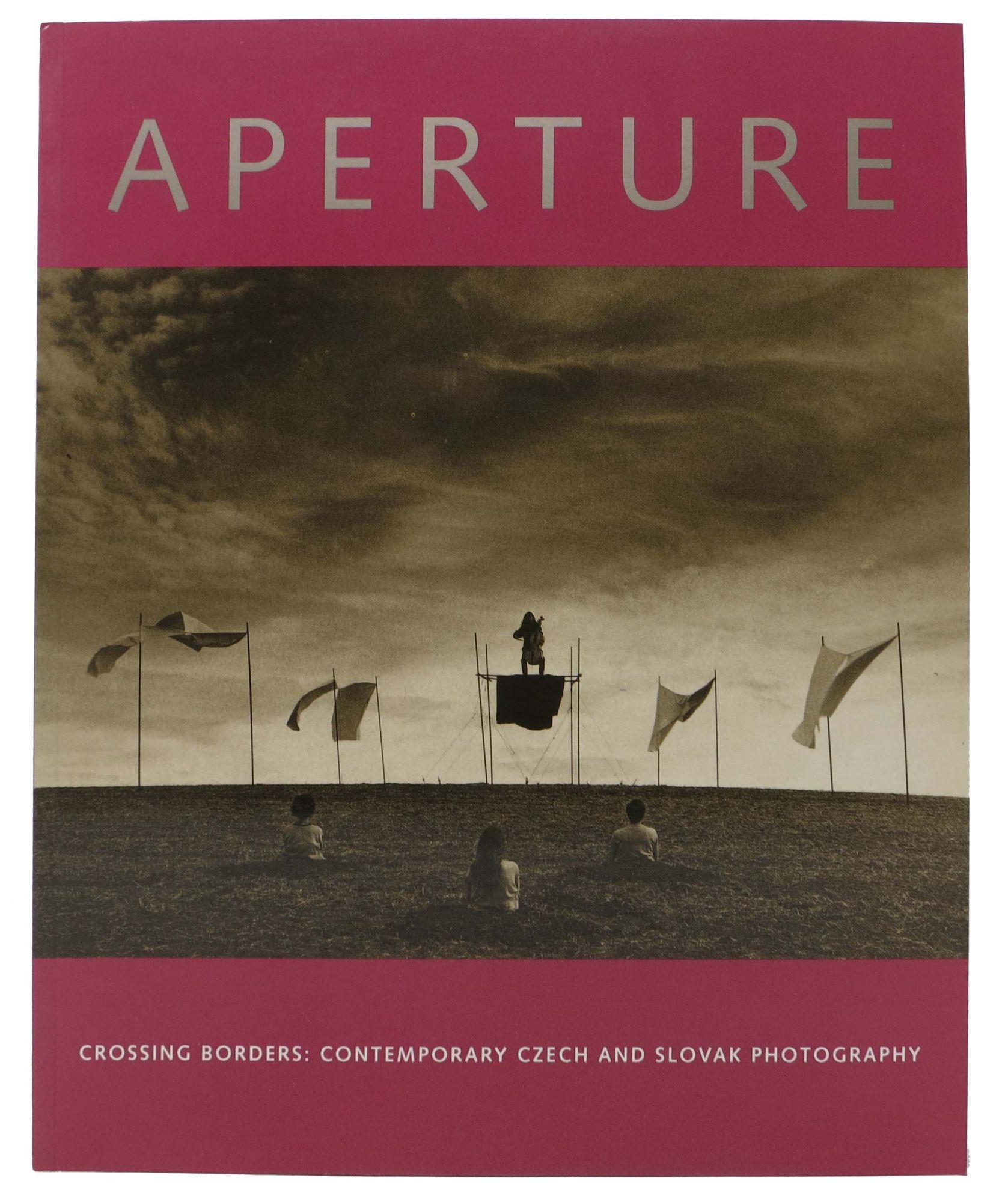




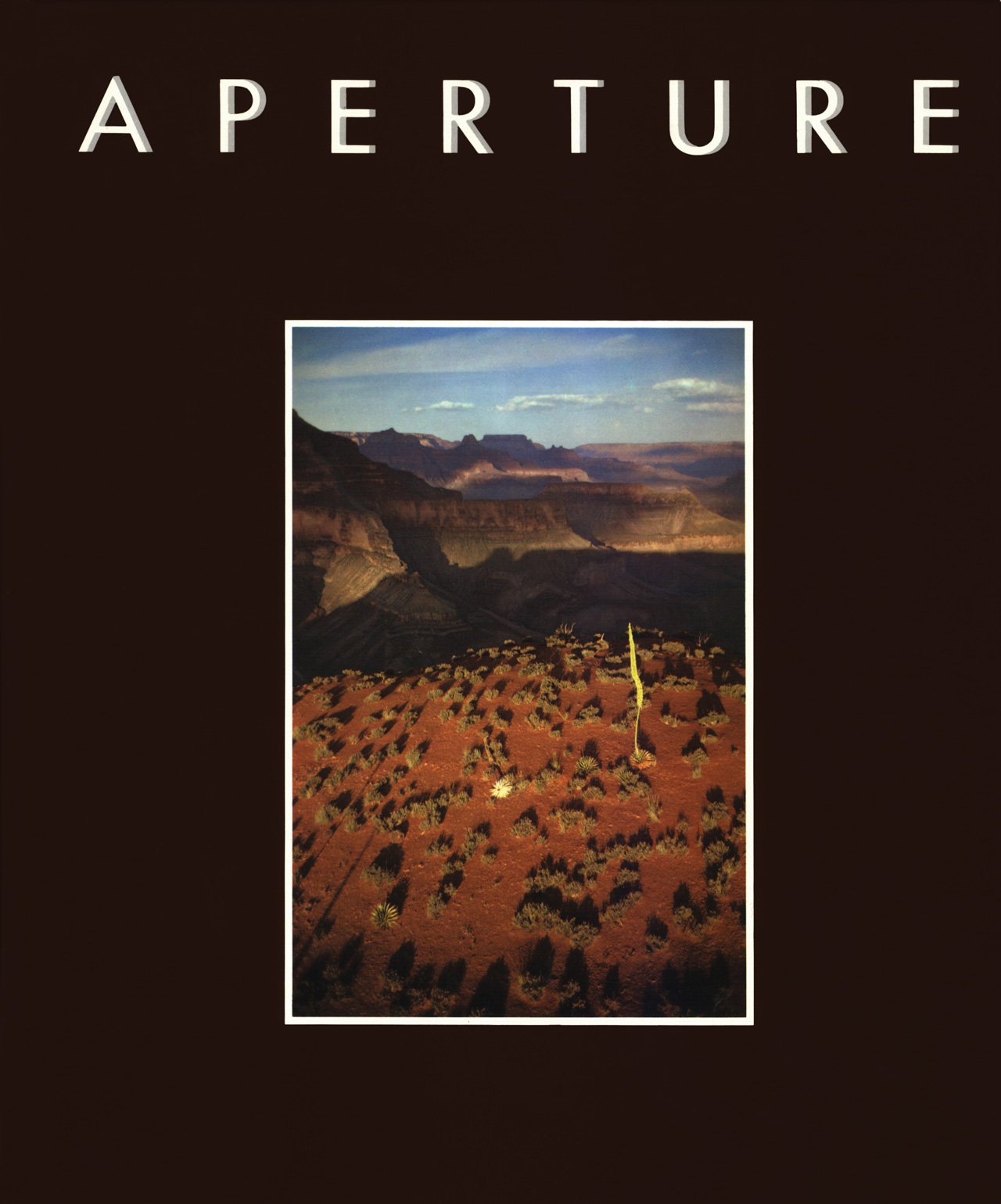





For many years, the Polaroid Corporation provided important financial support by purchasing Aperture’s back cover, often using the space to showcase a recent Polaroid photograph by Ansel himself. The founders were at first pleased with Aperture; each soon grew disillusioned. Minor White used the journal to promote his personal agenda, allowing no room for the discussions the others had envisioned. After only two issues, they gave up, withdrawing from active participation, though Ansel and the Newhalls continued to contribute financial support.[290]
Minor White persevered, and Aperture survived. Donated funds underwrote Aperture for many years, and Minor stayed on as editor, with total control of all aspects of each issue, until 1971. Since then, Aperture has branched out to become one of the largest nonprofit photographic organizations. They publish photographic books and have an important New York City gallery and bookstore promoting photography. Today, Aperture is a finely reproduced quarterly publication and continues to be deeply valued by those who are serious about photography.[291]
The 60s
In 1960, Ansel made “Moon and Half Dome, Yosemite National Park.” In 1961, Ansel received an honorary Doctor of Fine Arts degree from the University of California at Berkeley; Subsequently, he received honorary degrees from Yale, Harvard, and several other Universities. Ansel was always proud when he was recognized by “higher academia.” In 1962, Ansel and Virginia moved from San Francisco to Big Sur, near Carmel. In 1963, Ansel’s largest exhibition, The Eloquent Light was curated by Nancy Newhall. A biography by the same name, also by Newhall, is published by the Sierra Club. It is considered the best biography of Ansel ever written.[292] In 1966, Ansel was made a fellow of the American Academy of Arts and Sciences. In 1967, Ansel, Beaumont and Nancy Newhall, and others founded the Friends of Photography, continuing the battle for recognition of photography as fine art. In 1968, Ansel with Nancy Newhall, published Fiat Lux to celebrate the centennial of the University of California. Ansel spent three years on the project, making over 6,000 photographs for the campuses. It was the largest journalistic project of Ansel’s long career. In 1969, Ansel led the fight to oust Sierra Club executive director David Brower. The battle became vicious and personal.[293]
The Friends of Photography
Ansel, Nancy, and Beaumont never lost their desire to establish an independent photographic center. Their center had to be headquartered in the West, where there were still too few patrons to be found in support of creative photography.[294] On January 1, 1967, Ansel, Beaumont, Nancy, and a few friends meet at Ansel’s house. Nancy Newhall wrote about the meeting:
… on New Years’ Day 1967, a dozen or so of us met at Ansel Adams’ house. We decided to found a society, national and even international in scope, whose purpose should serve as the long-dreamed-of center, bringing in outstanding talent from everywhere, initiating exhibitions, holding workshops and programs of lectures and films, and publishing, in various forms, monographs on individual photographers and works of interpretation, enlightened criticism, and history. The membership should include not only practicing photographers but musicians, poets, painters, sculptors, critics, collectors, art historians, museum directors, and others who are deeply interested. And so, we called ourselves The Friends of Photography.[295]
Nervous about publishing after their Aperture experience, The Friends established exhibitions and workshops as their priorities. During the first year alone, The Friends mounted exhibitions by Paul Strand, W. Eugene Smith, Bruce Davidson, Eugene Atget, Wynn Bullock, Imogen Cunningham, Dorothea Lange, Brett Weston, Edward Weston, Minor White, and Ansel Adams.[296] The organization held about 10 exhibitions annually in Carmel until 1988. In addition to the exhibitions, The Friends regularly held educational workshops, seminars, photographic technique classes, and scholarly conferences. By 1975, they were holding about 8-10 per year. Among those who taught at these events over the years were Ansel, James Alinder, Ruth Bernhard, Imogen Cunningham, Lee Friedlander, Michael Kenna, Annie Leibovitz, Sally Mann, Arnold Newman, John Sexton, and many others. As the organization grew, they hired a series of photography and fundraising professionals to run the organization.[297] Each director brought a personal style to the organization, but through it all, there remained the guiding vision of its founder Ansel Adams. Ansel remained a very active and passionate member of the organization’s board, and almost nothing happened without his approval.[298]
Following Ansel’s death in 1984, The Friends suffered from growing pains.[299] Director Andy Grundberg[300] thought the organization could attract new members by broadening the kinds of photography it exhibited. Grundberg initiated a series of exhibitions by photographers whose artistic vision was very different from Adams and his circle. The traditional members of the organization hated this new direction and reduced or ended their support. By the time Grundberg left the organization, it was $500,000 in debt. The Trustees decided to move to a new location in San Francisco. Construction delays at the new site caused the organization to be without a home for more than a year, during which time The Friends lost more than half of its membership. During the closure, the organization tried to raise funds and cut costs. Despite these efforts, the organization continued to lose money.[301]
Mary Street Alinder in her biography of Ansel wrote:
In early 2001 the debts incurred by the organization totaled 1.2 million dollars. Efforts were made to raise the needed money, but the amount of the debt was too large to overcome. The Trustees voted to close the doors. They decided to sell their collection of Adams prints given to the organization by the photographer in the 1970s and used the proceeds to pay off all debts. The entire collection of 140 prints was bought by Tom and Lynn Meredith of Austin, Texas. After their debts were paid The Friends of Photography formally closed its doors in October 2001.[302]
The 70s
In 1970, Ansel received the Chubb Fellowship from Yale University, where he met Bill Turnage. The Tetons and the Yellowstone is published. It will be his last project with Nancy Newhall. In 1971 Ansel received the Fine Arts Medal of the American Institute of Architects. Ansel retired as director of the Sierra Club after thirty-seven very active years. During his tenure as director, Ansel expanded his environmental activism. In 1973, Ansel began his association with Little, Brown, and Company, which became his exclusive publisher. Through his relationship with Little, Brown and Company, Ansel became the most successful single artist in publishing history. 1974 brought an important retrospective of Ansel’s life’s work at the New York Metropolitan Museum of Art. Later that year, Ansel made his first trip to Europe, where he was the honored guest at The Arles Photography Festival in France. In 1975, Ansel co-founded the Center for Creative Photography at the University of Arizona and bequeathed his massive archive of photographs, negatives, and papers to the university. Later that year, Ansel met with President Gerald Ford at the White House, becoming the first environmentalist in several decades to seriously speak with a sitting president about the national park system.
In 1976, Ansel made his second trip to Europe, visiting London, Paris, Scotland, and the alps of France and Switzerland. Ansel attended the opening of a major exhibition of his photographs at London’s Victoria and Albert Museum. Ansel met with many famous European photographers such as Bill Brandt, Brassai, and Man Ray. Ansel declared his love for California and vowed never again to go overseas. In 1977, Ansel and Virginia endowed the Beaumont and Nancy Newhall fellowship at MoMA.[303] In 1978, Ansel entirely rewrote his famous series of books on photographic technique. To this day, The Camera, The Print, and The Negative are the most important how-to books on photography techniques in history. The decade ended with Ansel opening a major exhibition, Ansel Adams and the West at MoMA. The stunning exhibit results in Ansel’s Magnum Opus, Yosemite, and the Range of Light. The exhibition and the book land Ansel on the cover of Time Magazine.[304]
William A. Turnage (Bill)
In 1970, Ansel was appointed a Chubb Fellow at Yale University. In late November, he spent a week on campus, meeting with students and presenting a formal lecture to the School of Forestry. Ansel was immediately struck by one brilliant young man, William (Bill) Turnage, from the Forestry Department. Bill had a degree from Yale, had studied at Oxford, and had worked for the U.S. State Department.[305] During the week, Turnage was responsible for Ansel’s needs. Throughout the week, their discussions kept returning to Ansel’s circumstances. A frustrated Ansel confided that though he was working as fast as he could, financial security still eluded him. Bill listened raptly to the sixty-eight-year-old Ansel, finding in him a real-life hero as devoted to environmental concerns as himself.[306] Bill began brainstorming and came up with several business plans. Bill had the combination of high energy and organizational skills that Ansel lacked.[307]
Returning home to California, Ansel suggested to Virginia that Bill would be perfect for managing Best’s Studio, a task she had magnificently performed for too many years. Bill left Yale and moved to Carmel. A close working relationship developed between Bill and Ansel.[308] Within days of his arrival in Carmel, Turnage had relieved Ansel of the day-to-day business, permitting him to concentrate on just his work.[309]
Ansel soon applied the “Turnage treatment” to every part of his life. In 1972, Bill was appointed the first executive director of The Friends of Photography, a position he held just long enough to set up administrative procedures and employ a successor before leaving Carmel for Yosemite.[310] In Yosemite, Bill became resident manager, charged with the challenge of moving Best’s Studio successfully into the future.6 After analyzing the situation, Bill convinced Ansel that Virginia should relinquish ownership to their son, Michael, and daughter-in-law, Jeanne,[311] and change the name to the Ansel Adams Gallery, operated by Best’s Studio, Inc., to take advantage of Ansel’s burgeoning fame.[312] Virginia Adams felt pushed out. She had spent her childhood at her father’s studio in Yosemite. It had been her business since her father’s death, and she had raised her children there, almost by herself.[313]
As the decade of the seventies progressed, interest in fine photography skyrocketed. This newfound popularity, combined with a booming economy, drove prices through the roof. Photography collecting rapidly gained momentum, and Ansel was perfectly positioned to benefit. Immediately, his photographs led the market, with sixteen-by-twenty-inch prints selling for $150 each. There was a big downside to the new demand for Ansel’s prints— Ansel had to print them.[314]
The more prints Ansel had to make, the more depressed he got, chained to his darkroom trying to keep up with orders. Even when Bill raised print prices to five hundred dollars on September 1, 1974, sales still soared. In the spring of 1975, Bill issued a press release announcing that as of December 31, Ansel would accept no more print orders. Until that time, all sixteen-by-twenty-inch prints would be priced at eight hundred dollars, except “Moonrise”, which would cost twelve hundred. The idea was to give individuals and dealers one last opportunity to buy Ansel’s work and then free him to move on to other projects. By the deadline, Ansel and Bill were stunned when orders for thirty-four hundred prints had been received. Ansel knew that to fill the orders, he would have to devote all his time and energy for the next several years to making prints. He hired a second photographic assistant,[315] allowing his darkroom to be in operation seven days a week and set a daily production goal of forty 16 X 20-inch prints or sixty 11 X 14-inch prints.[316]
In 1974, Bill presented the idea of an exclusive publishing agreement to Little, Brown, and Company of New York. Bill devised a favorable contract for Ansel, assuring his boss a fair royalty, giving him the power to select the designer, printer, paper, and binding to be used, and allowing him to actively supervise the printing.[317]
After a quick five years, Bill had restructured Ansel’s entire life. By 1976, Ansel was a millionaire, thanks to Bill Turnage. Ansel Adams had become the golden goose.[318]
Ansel’s old friend and sometimes harshest critic, Dorothea Lange said: “Ansel… has always been able to attract, to magnetize, money and people with money… I’m sure, I swear, that Ansel doesn’t know that he goes where the money is. Just like a homing pigeon.” Imogene Cunningham, with her usual caustic humor, labeled Ansel a sellout putting money before Art. And there was Bill, devising project after moneymaking project for him. The rewards were so high that it proved nearly impossible for Ansel to admit that the demands on him were just too great.[319]
Feeling he had accomplished all that he could, Bill left Carmel at the end of 1977 to embrace the solitude of Wyoming. After a few short months, Ansel learned that The Wilderness Society was considering Bill for its executive director position. Ansel thought Bill would be a perfect choice and was very proud when Bill was selected. Ansel had been a supporter of the Wilderness Society for many years, but Bill now drew him into its inner circle. His photographs were used promotionally to increase membership and as gifts for major donors. Ansel and his images brought added prestige to an already respected organization, including joint meetings with Presidents Carter, Ford, and Reagan. Turnage was appointed by Ansel as a trustee of the trust that oversaw all facets of the use of his photographs.[320]
The Center for Creative Photography
As Bill and Ansel tied up the details of Ansel’s long and complex life, the question of what should happen to his negatives was paramount. Ansel offered his archive (comprising negatives, prints, collections of books and photographs, correspondence, awards, and memorabilia) to the University of California; the administration and trustees refused it due to lack of funds.[321]
Word soon reached John Schaefer, president of the University of Arizona, where Ansel had enjoyed a large solo exhibition in 1973. Schaefer caught the next plane to Carmel and eagerly offered to acquire the archive. Ansel agreed, provided that the university establish an archive and research center for creative photography, using his collection as its cornerstone. His conditions were met, and the Center for Creative Photography at the University of Arizona was born. The Center is now home to more than two hundred archival collections and ninety thousand works made by two thousand photographers.[322]
It was important to Ansel to know that after his death, his negatives would be used to teach young photographers. The university setting was perfect. Although the Center now cares for Ansel’s negatives, and selected students under careful supervision may study them, no one is allowed to sell prints made from them, ensuring that no more “original’’ Ansel Adams photographs will show up.[323]
The 1980s
In 1980, Ansel met President Jimmy Carter at the White House. Carter presented Ansel with the Presidential Medal of Freedom. Later that year, President Carter signed the Alaska Lands Act, the single most important act of environmental protection in history and the last major cause Ansel was involved in. In 1981, Ansel, in collaboration with The Wilderness Society, fought against the policies of President Ronald Reagan. Ansel felt Reagan’s policies against environmentalism were the most dangerous and extreme of the twentieth century. Also, that year the one-hour documentary, Ansel Adams Photographer aired nationally on PBS. In 1983, Ansel was invited to meet with President Raegan. Reagan had read in an interview Ansel gave,[324] that declared Reagan’s environmental policies were devastating. In 1984, on Easter Sunday, Ansel died in Monterey, California, at age 82. Ansel’s death was front-page news across the country. Later that year, Congress established the Ansel Adams Wilderness: two hundred twenty-five thousand acres of Ansel’s favorite part of the Sierras. In 1985, one year after Ansel’s death, Mount Ansel Adams was named. Ansel’s son Michael scattered his father’s ashes nearby.
President Gerald Ford
Besides money, Ansel and Bill also shared another passion: the conservation of the natural environment. In 1974, the important art dealer Harry Lunn, who had supported and promoted Ansel’s work for many years, presented a copy of Ansel’s new book. Images 1923-1974, to President and Mrs. Gerald Ford. The Fords loved the book and requested a print of their favorite photograph, “Clearing Winter Storm,” for display in the White House. Bill Turnage and Ansel visited President Ford early in 1975 to present him with a print of this image. President Ford was most cordial and attentive, and he exuded a sense of trust and responsibility. Ansel was deeply concerned with the deterioration of the national parks under the Nixon administration and presented the president with a memorandum. The memorandum contained eight suggestions about how the national parks could be improved. It asked for, in part: a Redefinition of the meaning of parks and the basic purposes of the system; a presidential commission to thoroughly study and modernize the organization, personnel, and attitudes of the National Park System; reduction of man’s physical impact on prime areas such as Yosemite Valley and replacement of automobiles by alternative transportation systems in most parks and monuments; new emphasis on preservation and environmental responsibilities; and presidential-level review of all areas of the future park or reserve potential. This generation may have the last chance to save essential lands for future generations.[325]
In an article appearing in The New York Times, Ansel’s meeting with the Fords was described:
After meeting with the President, Mr. Adams joined Mrs. Ford for a full tour of the White House, including the family’s living quarters. It was the kind of tour that few visitors get – and the kind of frankness that few guides display. In a tiny sitting room adjoining the Lincoln bedroom, Mrs. Ford observed that this was the room where President Nixon often secluded himself to listen to music. Opening a closet door, she said, “And here’s where he played his tapes.” Then, laughing, she corrected herself: “I mean his records.”[326]
In June 1977, President Ford called Ansel and asked if he had a place for his daughter, Susan, in his Ansel Adams Workshop, which was then still held in Yosemite. A photographer with a promising eye, she easily fit into the group, Secret Service and all.[327]
President Jimmy Carter
In 1980, Ansel was surprised and delighted to learn that President Carter wished to present him with the Presidential Medal of Freedom. Ansel, in his autobiography, described the event:
It was a gala ceremony, conducted with superior taste and quality throughout. Practically all of the first floor of the White House was occupied with beautifully set circular tables, and the lunch and service were as fine as one could find anywhere. Earlier, the ceremony itself had been held outdoors before an audience of relatives and friends. Each recipient was escorted to the platform by a member of the armed forces, glistening in full-dress splendor. Seated on the platform, we awaited the President, who arrived, full of charm and vigor, made a few remarks, and then proceeded to bestow each medal. I was in interesting company, including Admiral Kickover, Tennessee Williams, Eudora Welty, and Beverly Sills. Like the others before me, at the President’s reque,st I rose and walked to the podium to listen as the citation was read; then the President placed the medal about my neck and ended with a cordial handshake. It was all very exciting and euphoric.[328]
The citation read:
At one with the power of the American landscape and renowned for the patient skill and timeless beauty of his work, photographer Ansel Adams has been visionary in his efforts to preserve this country’s wild and scenic areas, both on film and on Earth. Drawn to the beauty of nature’s monuments, he is regarded by environmentalists as a monument himself, and by photographers as a national institution. It is through his foresight and fortitude that so much of America has been saved for future Americans.[329]
Ansel felt President Carter represented the presidency well, “Carter was an honorable man, but proved no match for the Reagan machine at re-election time.”
President Ronald Reagan
Unlike Presidents Ford and Carter, Ansel’s experience with President Ronald Reagan was difficult from the beginning. Ansel was blunt in his opposition to Reagan and what he stood for. Ansel believed the president had little or no personal interest in the environment or its protection. In an interview Ansel gave to Playboy magazine,[330] Ansel pulled no punches. Ansel considered very carefully Playboy’s request for an interview. He believed the magazine to be very sexist; however, he believed their interviews touched contemporary American life and reached an audience he seldom encountered.[331] Over two weeks, interviewers David and Vicki Sheff conducted nineteen hours of taped dialogue with Ansel, touching on a variety of subjects. At one point, they asked:
Playboy: You were instrumental in getting photography accepted as art at museums and universities. Almost half a century later, do you think it is accepted as legitimate art?
Adams: For the most part, but there are still people who can’t be convinced, I’m afraid. There is a peculiar animosity between painters and photographers. University budgets are being cut, so painters in an art department will argue that they deserve more than the photography department, because photography is a lesser art. It’s crazy. Well, that’s a typical result of all the budget cuts. (Lifts his martini) Thank you, Mr. Reagan. (Under his breath)
I’d like to drown him in here! (Laughs) Oh, my! That went on tape. To the FBI, if you’re listening: That was only a figure of speech, he wouldn’t fit into my martini.[332]
Comments such as these stirred the White House into action. In early June 1983, Ansel received a telephone call from President Reagan’s assistant, Mike Deaver, who said, “The President would like to meet with you and discuss why you dislike him.”[333] After verifying the call was valid, Ansel questioned whether it would be worth his time to meet with the President; he doubted he would listen. Nevertheless, Ansel accepted the offer, and the meeting was set for 1:15 PM on June 30, 1983, at the president’s suite in the Beverly-Wilshire Hotel in Los Angeles.[334]
On the day of the meeting,[335] the President was very cordial and made warm comments about Ansel’s work;[336] then he said, “Mr. Adams, I feel we have a lot in common. I consider myself an environmentalist!” He talked at considerable length about his accomplishments in conservation while governor of California.
Throughout the meeting, Ansel and the president agreed only about one thing: the value of nuclear power. As might be expected, they agreed for different reasons. Ansel reminded the President that the burning of fossil fuels pollutes water and air, reducing the ozone layer of the atmosphere and bringing acid rain. His curt reply was, “There is considerable scientific disagreement about the causes of acid rain.” Ansel was not impressed with Reagan’s failure to discuss or challenge his opinions. When I attacked the environmental policies of Secretary James Watt, the President replied, “James Watt is a remarkable person; he is doing exactly what I want him to do.”[337]
A day after the meeting, Ansel gave an exclusive interview to the Washington Post, calling Reagan and his administration environmentally hopeless. The interview was reproduced worldwide.
The Death of Ansel Adams
For Ansel, quitting time was five o’clock. As the hands of the grandfather clock announced the hour, Virginia would begin setting up the bar. She laid soft drinks, Scotch, bourbon, gin, vodka, and a selection of California chardonnays and cabernets. The entire staff was welcome and usually expected to stay for a drink. Guests would soon begin arriving at the door to join the daily cocktail celebration. Ansel was always listed in the telephone book, but to avoid disturbing the workday, callers were asked to drop by at five.[338]
Often, the first visitor would be some young photographer, portfolio in hand, come to seek Ansel’s blessing. Ansel would look at each print with sensitivity and offer praise. He usually made only one point of constructive criticism, knowing that any more than that would be too much.[339] Mary Street Alinder wrote:
Sometimes, however, Ansel’s humor would get the better of him, and pity the poor photographic supplicant who had to experience that. When Ted Orland was Ansel’s full-time photographic assistant, from 1972 to 1974, a wink from the boss during a print review was his clue to go into the workroom and return with an unmounted print of Moonrise. Following Ansel’s unwritten script, Ted would turn to the young photographer and exclaim, “Why your photograph is much better than Moonrise and with that he would tear the Moonrise in half, stupefying the photographer. This trick never failed to elicit a huge belly laugh from Ansel if usually just a nervous chuckle from his audience; of course, the ripped-up Moonrise had been a hopelessly damaged print.[340]
Ansel’s personal needs were simple. He always doused himself with Vitalis, believing that all women within his scent were now susceptible to his charms. He had one wool suit and a handful of sports coats. He owned four pairs of shoes.[341] When he was photographing, he wore a photographer’s vest, fitted with pockets of every size and shape to hold his light meter, miscellaneous filters, and a few horehound drops or wintergreen Lifesavers. Of course, a white Stetson hat and bolo tie were his signature finishing touch for any occasion. Ansel proudly wore a $29.95 digital wristwatch that kept time better than any fancy ones.[342]
Ansel was never one for holidays. Christmas and birthdays as a child were unhappy occasions, and he especially hated New Year’s Eve. He and Virginia had a long-standing tradition of holding an annual blowout on New Year’s Day. A gigantic open house began at four-thirty in the afternoon. There were never invitations; people just knew, and hundreds showed up each year.[343]
In 1983, mayor Dianne Feinstein requested that a large exhibition of Ansel’s photographs be sent to San Francisco’s sister city, Shanghai, China. Jim and Mary Alinder and Robert Baker, were chosen to accompany the show. The Chinese hosts installed the nearly two hundred prints with great sensitivity, hanging them on brightly lighted and freshly painted white walls above polished floors with welcome pots of greenery in the corners of each of the many galleries. Ansel’s show proved extraordinarily popular; tickets were sold out by eight o’clock each morning. Thousands of people moved in silent reverence through the exhibition, staring raptly for long periods at image after image. The show, Ansel Adams: Photographer, was then invited to move to the National Museum of Art in Beijing, where it became the first exhibition by an American artist to be so honored since the Chinese revolution.[344]
Some friendships combined work and pleasure. In the early 1980s, Ansel began once more to hear the call of photography, which for him meant the call of the outdoors. He had always enjoyed having companions along while he photographed in the Sierra. Ansel would call Jim Alinder to ask if he would like to go photographing. Ansel and Jim had become good friends, seeing themselves as photographic comrades. Together, they drove over most of the roads of Monterey County, stopping when either one saw something he liked.[345]
Another reason that Ansel and Jim had such a good time together was that they were both always ready to eat, and neither was fussy about what or where. Ansel’s preference was a delicious hamburger.
Ansel and Jim continued to photograph together all through 1983, perhaps a day every other month, Ansel’s health permitting. Mary Alinder said:
One Saturday morning in February 1984, just as I was opening my eyes, I heard a sharp knock on our front door. Wrapping a robe about myself I answered it to find Ansel on the other side. Almost bashfully, he asked, “Can Jim come out and photograph?” though I knew he meant “play.”[346]
The Final Act
Ansel always intended to live a long and productive life; however, throughout his life, he suffered from a long list of ailments, both physical and mental.[347]
As Ansel’s abilities, success, and fame grew, his emotional life was continuously on a roller-coaster ride. Following a great achievement, such as his 1936 solo exhibition at Stieglitz’s An American Place, Ansel would plunge into despair driven by the deepest exhaustion. Ansel worked so frenetically that each episode ended in depression. It proved a lifelong pattern.[348]
His physical health also suffered. While he was still in his twenties, his teeth hurt him so much that he had them all pulled. He was afflicted with arthritis and gout. His prostate had been removed, a hernia had been repaired, and his heart had a new valve and a triple coronary bypass. He also suffered from vertigo and cancer in his leg, which spread to a lymph node and lungs.[349]
Each year he seemed to spend more time in the hospital, but work always continued. In September 1981, Ansel had an angiogram, one of the many tests he readily submitted himself to each year. This time it showed partial blockage in the arteries, although it was not yet serious enough to require them to be either replaced or reamed out.[350]
One Sunday afternoon in September 1982, Ansel’s chief assistant, Mary Street Alinder arrived at the house and discovered Ansel still in bed. In her biography of Ansel, she wrote:
“He was not feeling well. I measured his blood pressure, checked his pulse and lungs, and monitored his heart with my stethoscope. I thought I could detect an irregularity; certainly, I was hearing something other than what I usually heard. I called his doctor, who agreed to meet us at the hospital. In the ER, it was determined that Ansel had a life-threatening arrhythmia. He was wheeled into surgery and almost as quickly wheeled back out with a pacemaker stitched into his chest. Crisis solved. Ansel described the feeling when the pacemaker would fire to be as if a mouse was hitting a punching bag.[351]
Ansel was soon home and back to a normal schedule. Within ten days of this incident, he participated in a book signing in Carmel and was filmed by the BBC, interviewed by the Wall Street Journal, and given an award by the Association of International Photographic Art Dealers.[352]
By 1983, Ansel began to sense that his time was limited. Mary Street Alinder wrote:
Even though I was with him constantly, he wrote me long letters about the things he found too difficult to say out loud. He wanted assurance that there would be sufficient income for Virginia when he died. If he should die, he wanted me and his photographic assistant, Chris Rainier, to supervise the making of prints from “important” negatives that had never been printed, placing his confidence in our perception of his life’s work.[353]
On April 20, 1983, Ansel began experiencing a feeling of pressure in his chest and shortness of breath. Mary Alinder called his doctor and was told to bring him into the hospital. This time, though, Ansel did not get dressed but instead stayed in his pajamas and robe; that was very unusual for him. Virginia packed him a small bag. Mary Street Alinder said:
As we drove to the hospital for what I believed would be just another few days’ stay for Ansel, I began to sense that he was looking at this very familiar countryside as if for the last time. This man, who had always checked into hospitals with great cheer as though checking into a fine resort, was subdued. There was an old dead tree on a hillside south of the Carmel River that he remarked on almost every time we passed it over the years, admiring the physical endurance it displayed even though, at least outwardly, it was no longer alive. Now he just looked at the tree bleakly.[354]
He was admitted for observation and tests. The first tests to come back on Saturday indicated that Ansel was experiencing congestive heart failure.[355]
New X-rays revealed lentil-size densities scattered across both lungs. Later that afternoon, Ansel suffered a minor heart attack. He was moved into the intensive-care unit so he could be constantly monitored. In a long, emotional quote, Mary Street Alinder tells the rest of the story:
That night, Saturday, April 21, Ansel’s doctor, Tom Kehl, pulled me aside and informed me that there had been a change in the reading of the X-rays. Ansel’s lungs were not full of blood clots or dust; they were riddled with cancer. I felt as if I had been dropped over the side of the Golden Gate Bridge. I knew what this meant: Ansel was almost dead. I ran to the sink and kept splashing cold water on my face until I could stop myself from crying.
It was decided that he would not be told of his condition until they knew more. I could not let Ansel see that I had been crying. I went to a phone and called Michael Adams and asked him to tell his sister, Anne. Dr. Kehl called Virginia.
I stayed late with Ansel that night and returned early the next morning. He seemed to be doing quite well: his appetite was better, and he was looking forward to seeing his friends and family.
At about nine-thirty that night, as I was preparing to go back to the hospital, Dr. Morrison called and said that Ansel was having some problems. I was out the door in a flash, and ten minutes later I ran into the ICU. Ansel’s room was full of doctors and nurses, his bed barricaded behind a battery of machines. Without thinking, I quickly squirmed through the complex paraphernalia, under tubes, and between wires, and climbed up on Ansel’s bed. I hugged him as best I could and placed my cheek next to his, my lips at his ear.
A clear plastic oxygen mask covered his mouth and nose, and lines seemed to be attached all about his body. I started softly talking to Ansel, explaining to him what was going on. I told him that he was going to be fine, that he had been through many things in his life and would get through this, too.
Dr. Morrison asked if he was conscious and responsive. As I whispered in his ear, Ansel briefly squeezed my hand. He tried to talk but couldn’t, I put my face right in front of him, nose to nose, and kept eye contact with him. He looked at me with resignation.
Dr. Morrison now asked me if Ansel still wanted to live. If he did, he would have to be intubated, with a breathing tube inserted down his throat so he could be placed on artificial respiration. There was no way that Ansel could tell me himself, but I knew he was not a quitter and would want to fight for his life, so I said yes.
It was just at this time that I looked up at Dr. Morrison and asked, “Where’s Virginia?” I realized it was she who should be making this decision, but during the crisis, no one had thought to call her. She was immediately telephoned.
After I said yes to the intubation, Dr. Morrison insisted that I leave the room while the procedure was performed. He said it would be difficult, and the staff would need to be all around Ansel’s head. I hugged Ansel to me and told him I would be just outside. He looked at me, his eyes now seeming to plead that he needed to die.
I stood in the hallway, somehow holding on to a wall, and broke down. Virginia arrived just as Dr. Morrison came out to tell us that Ansel had died during the intubation. Virginia went in to be alone with him for a short while; when she emerged again, she was ready to go home.
By this time, Anne’s daughter Ginny, who had driven her grandmother to the hospital, was waiting with me outside the room, as were Jim and a few other friends of Ansel’s, including Maggi Weston.[356] While most chose not to go in for the last visit, Maggi and I both wanted to. I got back up on the bed on one side and Maggi got up on the other. We both put our arms around him, just as I had done a few minutes before. He was still warm. Knowing that hearing is often the last sense left intact, I placed my cheek next to his once more and whispered that it was time for him to go. I thanked him for fighting so hard to stay with us and told him that I loved him and that he would always be with me. Maggi stroked Ansel’s hand and murmured in his other ear. I had a strange feeling, and turning around, I saw Ansel up in the comer of the room looking down at us. Maggi saw him, too. It may be that our need to detain this courageous and magnificent man was so great that from the depths of our beings we envisioned him as still with us, or perhaps the evidence provided by our eyes was for real, and we saw AA as he left his body.
Ansel’s death certificate states that he died at 10:18 p.m. on April 22, 1984. An autopsy revealed that the immediate cause of death was respiratory arrest due to cardiogenic shock and congestive heart failure caused by acute myocardial infarction, or heart attack. Under the circumstances, it was a great comfort to know he had died quickly.[357]
One of Ansel’s last wishes was that after he died, tissue samples should be taken to determine what effects the years of photographic chemistry had had on his body; he was sure that some of the more toxic chemicals, such as selenium, had pre-embalmed him. Dr. Morrison complied with his request, but months later, it was learned that nothing of significance had been found.[358]
Ansel’s body was taken the next day to the Little Chapel by the Sea in neighboring Pacific Grove, and that afternoon, his family, his staff, and a few friends gathered for the cremation. A few beautiful words were said, and then Virginia was presented with her husband’s ashes in a cardboard box, tied with a string and still radiating heat. Virginia was taken to the Alinder home; Mary Street Alinder put Virginia in a recliner with her feet up as they all watched the national and local news. Ansel’s death was the lead story on every channel.[359]
Legacy
History will remember Ansel Adams for three significant contributions: his art; his role in the recognition of photography as fine art; and his work as an environmental activist. Ansel affirmed what it means to live life fully.[360]
Not all of Ansel’s images were epic, however, his best images were larger-than-life. “Monolith”; “Frozen Lake and Cliffs”; “Clearing Winter Storm”; “Surf Sequence”; “Moonrise”; “Winter Sunrise”; “Mount Williamson from Manzanar”; “Sand Dunes, Sunrise”; “Mount McKinley and Wonder Lake”; “Aspens” (both horizontal and vertical versions); and “El Capitan, Winter Sunrise,” and many more speak clearly and strongly in the voice of one artist: Ansel Adams. They are masterpieces of photography that cannot be denied. Photography needed a messenger whose photographs were so clearly art that there could be no doubt left in the public mind as to its value.[361]
Ansel Adams had his fingerprints all over every significant photographic organization in the history of photography. Groups from f/64 to the Photo League to The Friends of Photography to The Photography Department at MoMA, to The Center for Creative Photography helped develop photography into what it is today.Ansel had a greater impact on creative photography than any other person in the twentieth century.
Ansel was the greatest teacher of photography in history. His workshops, classes, and books were legendary. His control of the camera and darkroom processes was unrivaled because he created most of the processes himself. His three-part series, The Camera, The Negative, and The Print, has influenced generations of young photographers. The Zone System[362] alone changed photography for millions of young photographers, me included.
What made Ansel unique was his images were interpretations of the subject through his deeply felt emotions. They are, in effect, products of his imagination. His artistic inspiration came from passion, pure and simple.[363] His pictures demonstrated the astonishing expertise one would expect from the greatest photographic technician of this century and probably history.[364]
Ansel was also one of the most important environmentalists in history. He took his citizenship very seriously and became the model for sustained responsible activism. Over his thirty-seven years of service as a Sierra Club director, he was always concerned with preserving the natural world for future generations. He forced the environmental movement in America to remain aware of the bigger picture and the effects of action and inaction.[365]
Through his books, posters, and calendars, Ansel brought visually powerful evidence of our American wilderness into hundreds of thousands of homes and offices.[366]
Following Ansel’s death, Virginia traveled and continued their established daily routine for most of the next sixteen years. People still arrived at five for cocktails to be greeted by Virginia at the opaque, sliding-glass front door. Virginia Rose Best Adams died on January 29, 2000, at the age of ninety-six. She died at home surrounded by her family.[367]
Family

Mary Street Alinder wrote:
What of Ansel’s own family, his wife, children, and their children? Virginia was a perfect mate for him in many ways. She was made to order for Ansel: an intelligent, well-read, and gifted woman. Ansel expected her to run the house. She worked during most of their marriage, giving birth to their two children without the benefit of his presence and often raising them under similar conditions. She and the children lived in Yosemite, where they enjoyed an ideal life provided mostly by a mother whose small, steady income could be counted on while their unpredictable, absent father flitted from coast to coast, assignment to assignment, and check to check. Ansel continued to base himself in San Francisco, a four-hour drive from his wife and children. Virginia was always there for him. She was his enabler; allowing him his tightrope walk, she the safety net. Ansel underestimated Virginia’s importance, for she was critical to his success.[368]
Ansel and Virginia could not have had finer children and grandchildren.
Dr. Michael Adams retired from the Air National Guard in 1993 with the rank of major general. He practiced internal medicine in Fresno, California, for twenty-five years, until 2000 and then volunteered his services to the University of California, San Francisco-Fresno campus. Ansel and Virginia’s Carmel house is now the home base for Michael and his wife, Jeanne; Michael, a consummate outdoorsman, who especially enjoys skiing and hiking,[369] said:
We had fun, but it wasn’t the typical childhood. My father was very different from my friend’s fathers. We never played ball. He wasn’t a fisherman, he wasn’t a hunter, and he didn’t do a lot of physical activities other than hiking. Sometimes I was embarrassed about what he wanted to do—he was rather outspoken about the environment, and he didn’t mind telling the National Park Service what he thought about how they were taking care of Yosemite.[370]
Michael’s son, Matthew Adams, is a great outdoorsman, like his father and grandfather. He graduated from Pomona College and received his MBA from Washington University, St Louis. He is the president and the family’s leader at the Ansel Adams Gallery in Yosemite (the former Best’s Studio). The gallery continues to offer weeklong photography workshops in the valley; the tradition Ansel began in 1940.[371]
Daughter, Anne Adams Helms, directed the other Adams family business, 5 Associates, to its position as the most important publisher of postcards and notecards of Ansel’s photographs.[372]
Anne’s second daughter, Alison Mayhew Jaques, has run what is now called Ansel Adams Museum Graphics since 1986. Alison has maintained her grandfather’s high reproduction standards in their fine-quality products.[373]
Anne’s eldest daughter, Virginia Mayhew, often stayed at her grandparents’ Carmel home during the early 1980s. Young Virginia has fulfilled Ansel and Virginia’s early dreams of becoming a professional musician. She has made it big in New York City as a leading jazz musician. Like her mother, Virginia is a breast cancer survivor.[374]
Final thoughts
In 1984, very soon after Ansel’s death, California senators Alan Cranston and Pete Wilson—a Democrat and a Republican, respectively—joined together to sponsor legislation to designate the Ansel Adams Wilderness, a vast 229,334 acres adjoining the John Muir Wilderness and Yosemite National Park. The Ansel Adams Wilderness is the world of High Sierra granite that Ansel so loved.[375]
Mary Street Alinder wrote:
There were, I think, two holes in Ansel’s soul: he never found emotional happiness, and some small part of him continued to equate success with a secure bank balance. Other than that, to me, Ansel seemed nearly perfect. But humans have no business trying to be saints, nor do I think Ansel wanted to be canonized, though he is often painted that way. I prefer to remember him in a Stetson rather than a halo. Perhaps his flaws were necessary to ensure that he was earthbound like the rest of us, but I wish his life could have been more full of love. Surely, through his extraordinary contributions, he earned that right.[376]
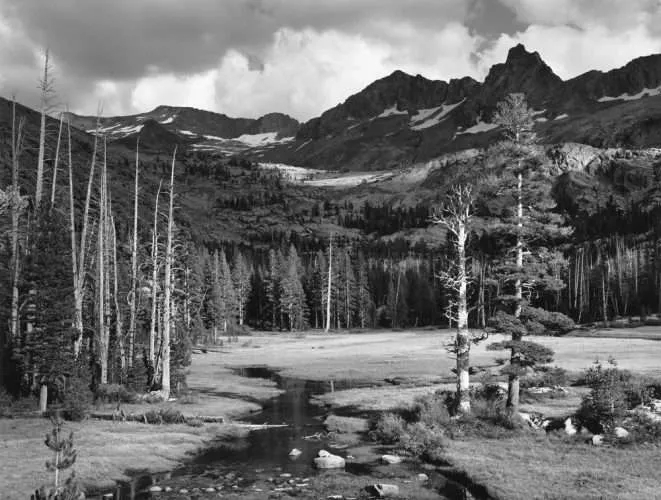
A year and a day after Ansel died, a nameless mountain overlooking his favorite place in the Sierra, the Lyell Fork of the Merced River, officially became Mount Ansel Adams. Mt. Ansel Adams tops out at a substantial 11,760 feet. Two full days of hiking from either Yosemite Valley or Tuolumne Meadows are required to reach its base. For most, it is best to enjoy the mountain from a camping spot near the banks of the Lyell Fork, as the scaling of Mt. Ansel Adams is not easily accomplished. The mountain is composed of flaking shale. Its crumbling texture becomes dangerous underfoot as one approaches its summit. Only experienced mountaineers can attain its peak, an area no bigger than eight by ten feet, dropping off on all sides, two thousand feet straight down. It is here that Ansel’s son Michael placed his father’s ashes.[377]
Ansel was not perfect; he had a long list of faults, as do we all. He was not always a good father or husband. He was hard to live with, insensitive, distant, absent, demanding, immature, and unfaithful. But he was also a hard worker with a brilliant mind and a fun sense of humor. He was a good friend, teacher, mentor, and student. He had a passion for life which was manifested in his vision, music, love of the outdoors, teaching, and love of beauty. He had these qualities, all with one arm tied behind his back.

Mary Street Alinder, in her biography about Ansel, wrote: In today’s world, Ansel would have been diagnosed with learning difficulties and probably ADHD.[378] I believe Ansel had Asperger’s Syndrome, which is considered a form of autism. I know several people that have Asperger’s, and they all demonstrate several common qualities. They have brilliant minds (almost too brilliant sometimes) but are socially awkward and have difficulties focusing and learning. Whether Ansel was autistic or not doesn’t matter because through hard work and perseverance, he overcame and lived a magnificent life.
Links
The Ansel Adams Gallery – https://www.anseladams.com
Aperture – https://aperture.org
Manzanar – https://www.nps.gov/manz/index.htm
National Parks Foundation – https://www.nationalparks.org/explore/parks/manzanar-national-historic-site
Yosemite – https://www.nps.gov/yose/index.htm
The Sierra Club – https://www.sierraclub.org
National Parks Service – https://www.nps.gov/index.htm
The Center for Creative Photography – https://ccp.arizona.edu
MoMA – https://www.moma.org
Edward Weston – Weston Gallery – https://www.westongallery.com/original-works-by/edward-weston
Imogene Cunningham Trust – https://www.imogencunningham.com
Mabel Dodge Luhan House – https://www.mabeldodgeluhan.com
[1] Nancy Newhall. Ansel Adams The Eloquent Light Vol. 1: Sierra Club, San Francisco, 1963.
[2] Newhall. 23.
[3] Ansel Adams. Ansel Adams An Autobiography with Mary Street Alinder: Little Brown and Company, Boston, 1985.
[4] Adams. 6.
[5] Mary Street Alinder. Ansel Adams, a Biography: Bloomsbury, New York, London, New Deli, Sydney. 2014.1.
[6] Adams. 7.
[7] Alinder. 3.
[8] Adams. 9.
[9] Newhall. 27.
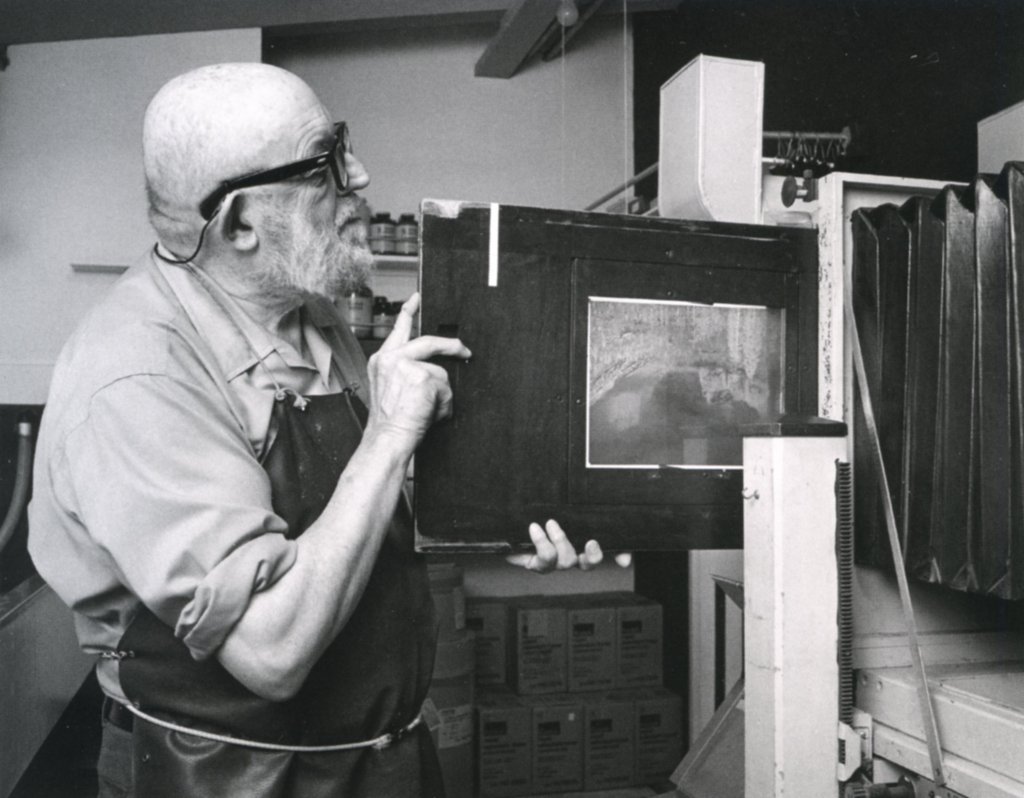
[10] Adams 10.
[11] Alinder. 10.
[12] Newhall. 27.
[13] Newhall. 27.
[14] Newhall. 28.
[15] Newhall. 28.
[16] Alinder. 5.
[17] Alinder. 5.
[18] Adams. 14.
[19] Alinder. 6.
[20] Adams. 17.
[21] Newhall. 28.
21 This tutor was Dr. Herriot. Ansel gained a greater realization that intolerance, unreason, and exclusionism exist in society.

[23] Newhall. 29.
[24] Newhall. 30.
[25] Alinder. 13.
[26] Adams. 18.
[27] Alinder. 29.
[28] Alinder. 11.
[29] Adams. 21.
[30] Alinder. 22.
[31] Alinder. 13.
[32] Adams. 50.
[33] Andrea G. Stillman. Looking at Ansel Adams: The Photographs and the Man: Little Brown and Company, New York, Boston, London.2012.20.
[34] Stillman. 50.
[35] Alinder. 27.
[36] Alinder. 28.

[37] Alinder. 29.
[38] Stillman. 21.
[39] Alinder. 29.
[40] Newhall. 31.
[41] Newhall. 31.
[42] Adams. 51.
[43] Newhall. 31.
[44] Newhall. 32.
[45] Adams. 51.
[46] Adams. 52.
[47] Dassonville was well known for producing high-quality photographic papers and was sought out by the major photographers of the day.
[48] Adams. 52.

[49] Alinder. 32.
[50] Alinder. 31.
[51] Alinder. 32.
[52] Alinder. 33.
[53] Alinder. 33.
[54] Alinder. 33.
[55] Alinder. 33.
[56] Alinder. 34.
[57] Alinder. 32.
[58] Alinder. 20.
[59] Adams. 56.
[60] Adams. 57.
[61] Adams. 57.
[62] Known as ‘mother curry”. Along with her husband ran camp curry in Yosemite.
[63] Newhall. 34.
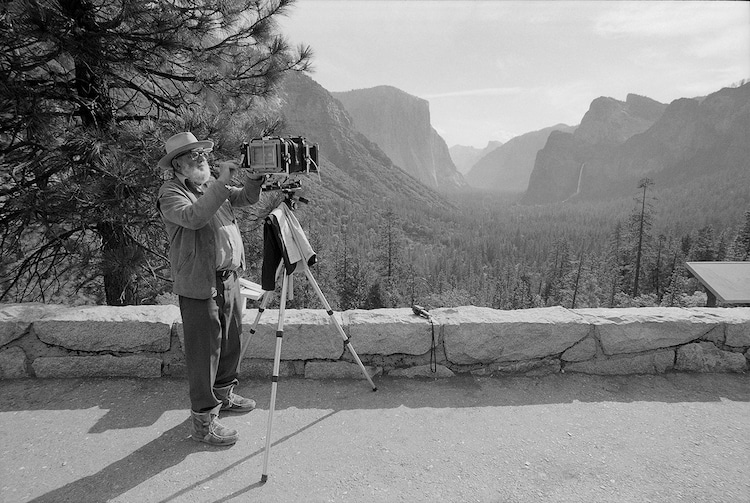
[64] Newhall. 34.
[65] William E Colby was a brilliant lawyer and fierce in the cause of the environment. He was inspired by John Muir and Joseph Leconte.
[66] Joseph N. LeConte was the son of famed environmentalist Joseph LeConte whom the lodge was name after.
[67] There were only two pianos in all the Yosemite Valley.
[68] Newhall. 37.
[69] Newhall. 37.
[70] Newhall. 37.
[71] Adams. 59.
[72] Alinder. 22.
[73] Alinder. 51.
[74] Letter from Ansel to Virginia Best dated September 5, 1921.
[75] Adams. 100.
[76] Alinder. 23.
[77] Alinder. 25.
[78] Alinder. 35.
[79] The trio included Ansel on Piano, A violinist, and a dancer.
[80] Alinder. 35.
[81] Adams. 105.

[82] Ansel was so impressed by Cedric’s home he vowed to one day have a Maybeck designed home.
[83] Alinder. 40.
[84] Adams. 106.
[85] Edward Carpenter was a hugely influential socialist, writer, poet, thinker, vegetarian, and mystic. He was an early supporter of many progressive causes, including women’s rights and sexual reform.
[86] Alinder. 46.
[87] Specifically, Ansel’s Aunt Mary, and his father.
[88] Alinder. 46.
[89] Alinder. 47.
[90] Alinder. 54.
[91] Chambers decided not to publish the portfolio if it had the term, “photographs” in the title. At the time Photography was not yet considered a fine art. Chambers insisted Ansel use the term, “Parmelian Prints” instead. Ansel objected, but Chambers insisted on the change. His whole life, Ansel regretted using the term. He felt it was a breach of faith to his medium.
[92] Adams. 81.
[93] Adams. 82.
[94] Stillman. 47.
[95] Adams. 144.
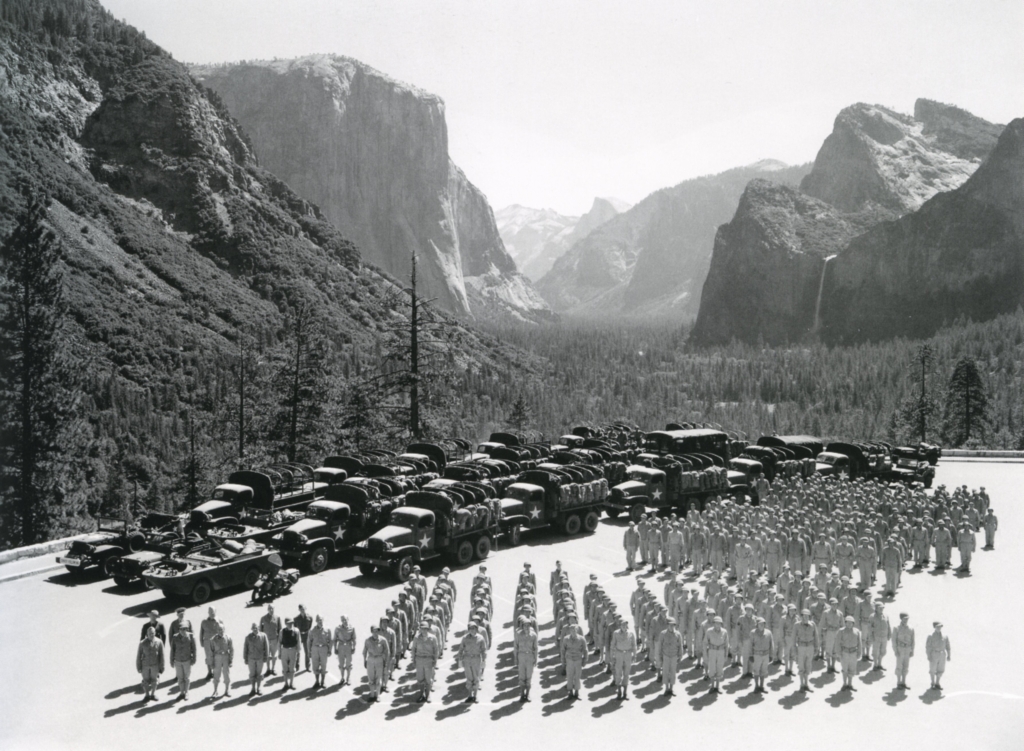
[96] Adams. 146.
[97] Alinder. 55.
[98] Alinder. 57.
[99] Adams. 147.
[100] Alinder. 55.
[101] Stillman. 232.
[102] In Mary Street Alinder’s biography of Ansel she has the date as, April 10, 1927.
[103] The Korona was an early twentieth-century view camera that required glass-plate negatives rather than sheet film.
[104] Ansel Adams. Examples of Making 40 Photographs. Little, Brown and Company Bulfinch Press, Boston, Toronto, and London.1983.3.
[105] Alinder. 51.
[106] Alinder. 52.
[107] Adams, 40 Photographs, 5.
[108] Alinder. 55.
[109] Alinder. 55.
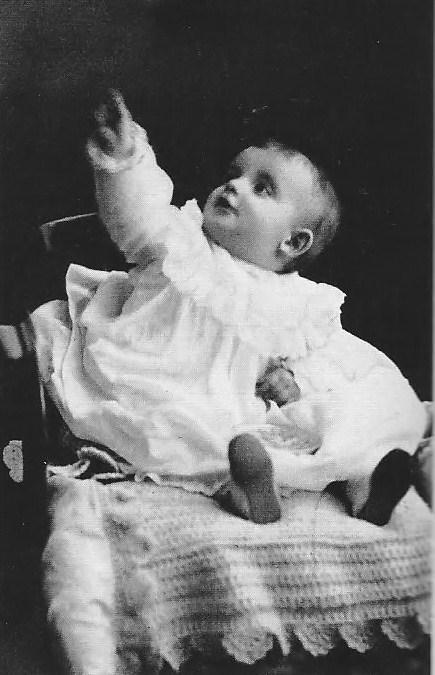
[110] Alinder. 54.
[111] Alinder. 54.
[112] Alinder. 55.
[113] Virginia later said, “it wasn’t so bad.” She had waited seven long years already. Her commitment to the marriage was complete.
[114] Alinder. 55.
[115] Alinder. 56.
[116] Alinder. 56.
[117] Alinder. 60.
[118] Alinder. 60.
[119] The Mabel Dodge Luhan House. [Online] Available. https://www.mabeldodgeluhan.com.
[120] One of the most notable was writer, D.H. Lawrence.
[121] Alinder. 61.
[122] Newhall. 47.
[123] Alinder. 62.
[124] Alinder. 62.
[125] Mabel chose to spell her name different from her husband, she thought her friends would be able to pronounce it easier.
[126] Alinder. 62.

[127] Alinder. 63.
[128] Alinder. 63.
[129] Stillman. 53.
[130] Adams. 155.
[131] Alinder. 65.
[132] Ashkenazy would not accept any money for playing at the party, all he wanted was some Russian Caviar. Ansel took Ashkenazy into his studio and let him pick two photographs as payment.
[133] I could find no evidence that Ansel ever met these photographers.
[134] Alinder. 67.
[135] Alinder. 67.
[136] Alinder. 69.
[137] Alinder. 69.
[138] Willard Van Dyke was a photography student at The University of California.
[139] Jonathan Blaustein, An In-Depth History of Group f.64: The New York Times [Online] Available December 11, 2014. < https://lens.blogs.nytimes.com/2014/12/11/an-in-depth-history-of-group-f-64>.
[140] Adams. 109.
[141] Adams. 110.
[142] Group f/64 – Manifesto: [Online] Available 2022. < https://www.liquisearch.com/group_f64/manifesto>.
[143] Alinder. 70.
[144] Alinder. 71.
[145] After viewing Lange’s work, Members of the group hailed her as “a Humanitarian and Artist.
[146] While Ansel photographed, Virginia and a few girlfriends went skinny-dipping in the frigid waters of the lake.
[147] Stillman.72.
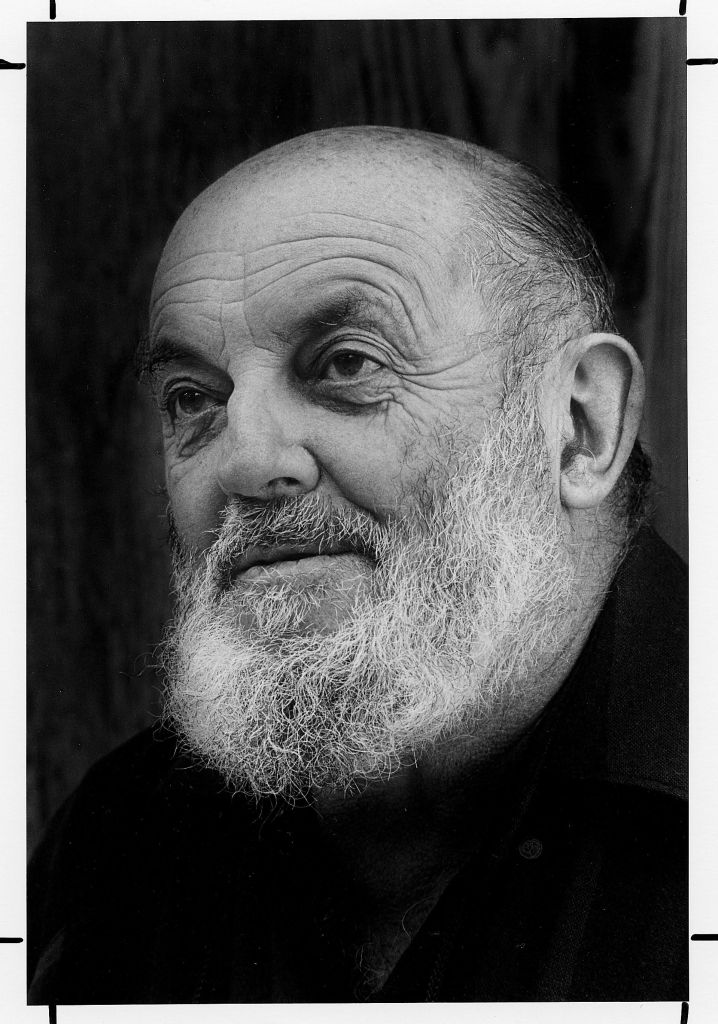
[148] Stillman. 139.
[149] Alinder. 93.
[150] Alinder. 93.
[151] Stillman. 140.
[152] Alinder. 95.
[153] Alinder. 95.
[154] Alinder. 96.
[155] Adams, 40 photographs, 7.
[156] Stillman. 141.
[157] Stillman. 142.
[158] Adams. 115.
[159] Edward Steichen wanted to keep all the images consistent. Ansel had the exact requirement on his, This is the American Earth project.

[160] Alinder. 242.
[161] Alinder. 163.
[162] Alinder. 163.
[163] Alinder. 128.
[164] The jobs were for the Yosemite Park and Curry Company and the Southern Pacific Railroad.
[165] Alinder. 129.
[166] Stillman. 90.
[167] Alinder.130.
[168] Andrea Stillman was married to Bill Turnage and worked as an administrative assistant for Ansel from 1974 to 1979. She was followed by Mary Street Alinder.
[169] Stillman. 91.
[170] Harry Cassie Best carried his seventeen-month-old granddaughter, Anne, upstairs, placed her in her crib, and then keeled over, dead of a heart attack.

[171] Alinder. 131.
[172] The Chicago exhibit was held at the Katharine Kuh Gallery. The New York show was held at Alfred Stieglitz’s gallery, An American Place. Ansel visited them both that November.
[173] Alinder. 131.
[174] Stillman.93.
[175] Alinder. 132.
[176] Stillman. 93.
[177] Stillman. 93.
[178] Alinder. 133.
[179] For many years Ansel claimed the image had been shot in 1944. After an exhaustive study by Dr. Thomas W. Olson determined Clearing Winter Storm had been photographed on December 12, 1935..
[180] Stillman. 132.
[181] Adams. 242.
[182] Alinder. 260.
[183] Alinder. 261.
[184] Alinder. 261.
[185] Stillman. 167.
[186] Stillman. 167.
[187] Adams. 40 Photographs. 145.
[188] Adams. 40 Photographs. 145.
[189] Stillman. 169.
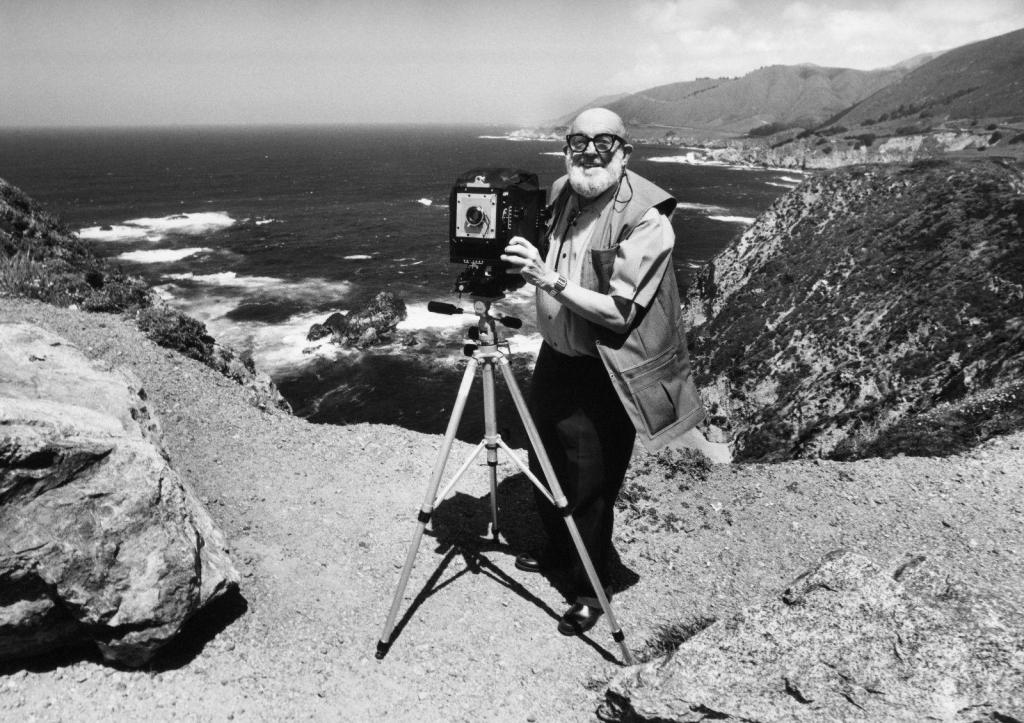
[190] Stillman. 173.
[191] Stillman. 173.
[192] Stillman. 174.
[193] Stillman. 176.
[194] Stillman. 177.
[195] Stillman. 177.
[196] Adams. 193.
[197] Adams. 193.
[198] Adams. 194.
[199] Adams. 195.
[200] Adams. 196.
[201] Adams. 196.
[202] Adams. 197.
[203] David McAlpin was a great supporter of the Arts. Without McAlpin, the Department of Photography at MoMA might not have been achieved for decades.
[204] Adams. 200.

[205] Adams. 207.
[206] Adams. 202.
[207] Adams. 208.
[208] Adams. 210.
[209] Adams. 218.
[210] The area of the accident was pictured in Ansel’s famous image of the Snake Rover and Tetons.
[211] Adams. 219.
[212] Adams. 219.
[213] Alinder. 142.
[214] Artsy Net, The Photo League: Remembering the radical New York Collective that Brought a Social Conscience to Street Photos: [Online] Available August 6, 2013. < https://www.artsy.net/article/dazeddigital-the-photo-league-remembering-the-radical-ny>
[215] Artsy Net, “The Photo League: Remembering the radical New York Collective that Brought a Social Conscience to Street Photos.”
[216] Artsy Net, “The Photo League: Remembering the radical New York Collective that Brought a Social Conscience to Street Photos.”
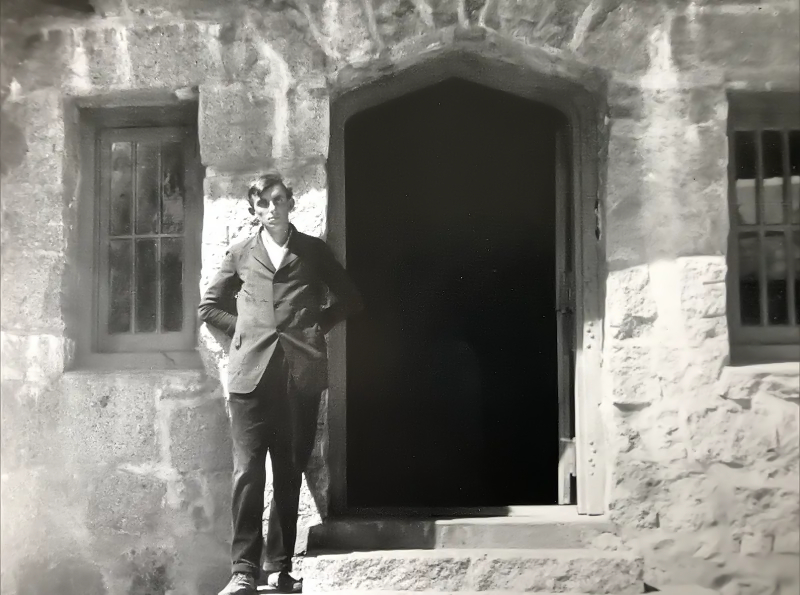
[217] Alinder. 142.
[218] Artsy Net, “The Photo League: Remembering the radical New York Collective that Brought a Social Conscience to Street Photos.”
[219] Alinder, 143.
[220] Ansel sent a formal letter of resignation to the League and the FBI.
[221] Archer was a portrait photographer, specializing early in his career in portraits of Hollywood movie stars. He was associated with pictorialism. He later became a photography teacher and ran his own photography school for many years.
[222] Alinder.
[223] I had a Bronica ETRS 120mm medium format camera. With all cameras, the shutters aren’t completely accurate and need a little testing. I used Kodak T-Max film to conduct the tests.
[224] Stillman. 115.
[225] Stillman. 115.
[226] Adams. 273.
[227] Adams. 40 Photographs. 42.
[228] The photo assistant was Ted Orland. Orland worked with Ansel Adams from 1971 to 1974.
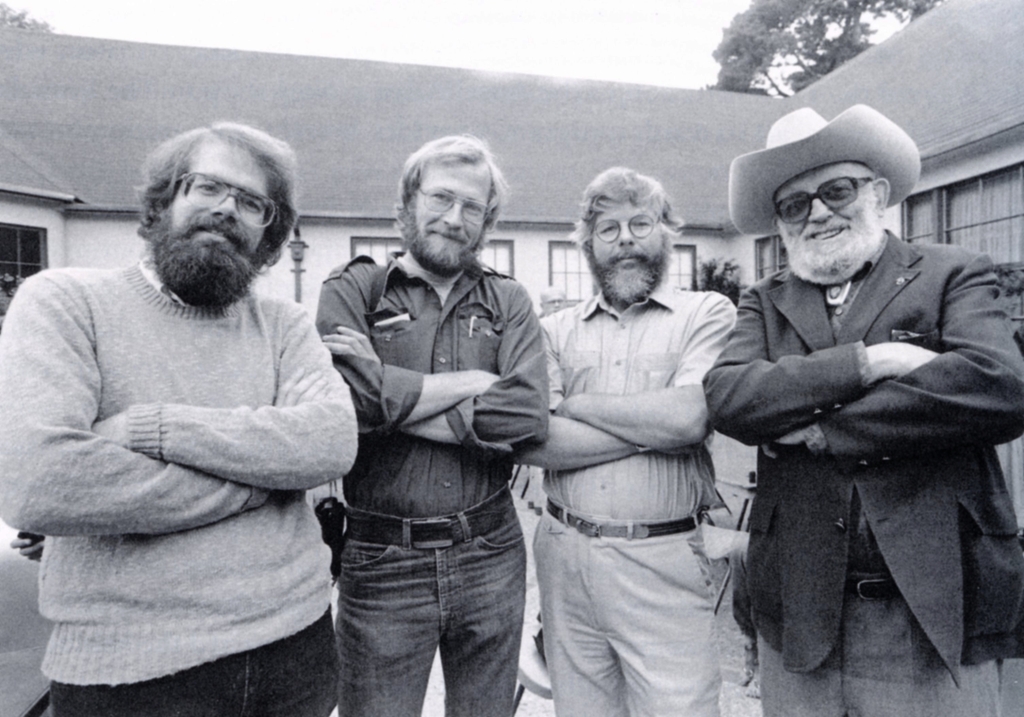
[229] Stillman. 118.
[230] Stillman. 120.
[231] Stillman. 121.
[232] Stillman. 116.
[233] Stillman. 116.
[234] Stillman. 118.
[235] Alinder. 194.
[236] Adams. 258.
[237] John Armor and Peter Wright. Manzanar. Vintage Books, Toronto. 1989. xi.
[238] Armor and Wright. The Nisei. 69.
[239] Armor and Wright. The Nisei 69.
[240] Armor and Wright. Welcome to Manzanar. xii.
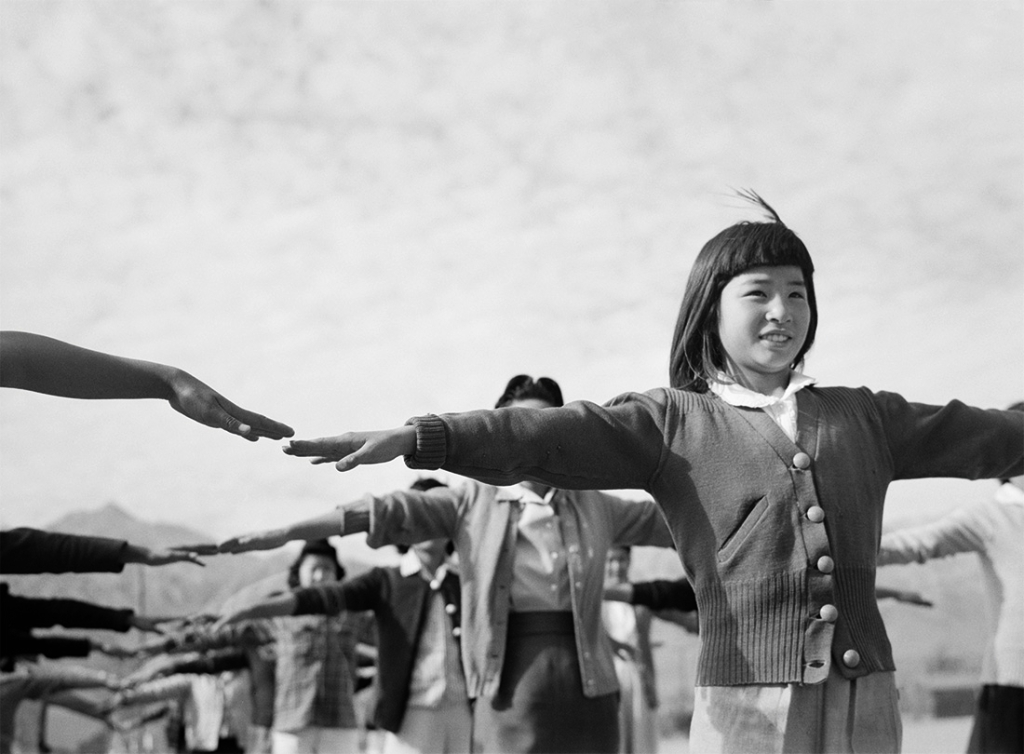
[241] After Pearl Harbor, paranoia and panic were rampant in the Government and the Nation. False reports of enemy aircraft over California and spies in our neighborhoods only fueled the hysteria.
[242] Armor and Wright. Welcome to Manzanar. xiii.
[243] Ralph Merritt was Manzanar’s second director.
[244] Adams. 259.
[245] Alinder. 196.
[246] The living quarters were 20-foot by 100-foot tarpaper barracks, with a family (up to eight people) living in a single 20-foot by 25-foot apartment in the barracks. These apartments consisted of partitions with no ceilings, eliminating any chance of privacy.
[247] Alinder. 197.
[248] Alinder. 198.
[249] Adams. 260.
[250] Mount Williamson appeared in Edward Steichen’s Family of Man exhibit. It also appeared on the cover of The New York Times next to the announcement announcing Ansel’s death in 1984.
[251] Alinder. 199.
[252] Armor and Wright. The Photographers. xvii.
[253] Alinder 201.
[254] Alinder. 201.
[255] Adams 261.
[256] Adams. 260.
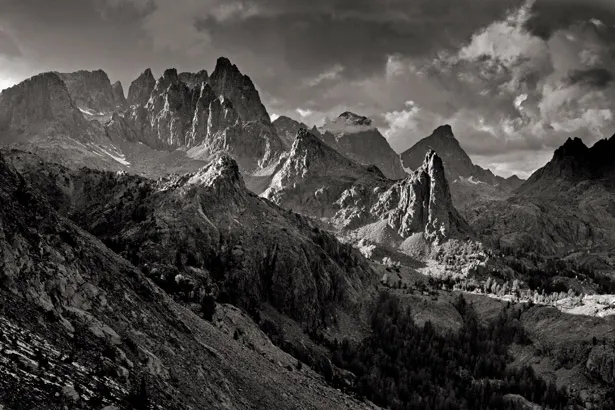
[257] Armor and Wright. The Photographers. xviii.
[258] Armor and Wright. The Photographers. xviii.
[259] Armor and Wright. The Photographers. xviii.
[260] Merritt could have had Miyataki arrested for the “crime” of being Japanese and taking pictures, but he chose to be humane.
[261] Armor and Wright. The Photographers. xx.
[262] Alinder. 200.
[263] Alinder. 199.
[264] Alinder. 200.
[265] Alinder. 200.
[266] Stillman. 233.
[267] Alinder. 223.
[268] The filter was quickly picked up by Kodak.
[269] The achievement made the front page of the next day’s New York Times.
[270] Alinder. 222.
[271] Alinder. 223.

[272] Alinder. 226.
[273] Alinder. 227.
[274] Alinder. 227.
[275] Alinder. 227.
[276] Alinder. 228.
[277] Alinder. 228.
[278] Stillman. 234.
[279] Stillman. 234.
[280] The book was published in 1960 and inspired the modern age of environmental activism.
[281] Alinder. 228.
[282] Stillman. 234.
[283] At its demise, in 1917, Camera Work claimed only thirty-seven subscribers. Up until the 1960s Life was viewed by fifty- five million people.
[284] Adams. 217.

[285] Adams. 217.
[286] Alinder. 215.
[287] Adams. 218.
[288] Alinder. 216.
[289] Alinder. 216.
[290] Alinder. 217.
[291] Alinder 217.
[292] In my opinion Mary Street Alinder’s biography of Ansel is the best.
[293] Stillman. 234.
[294] Alinder. 324.
295 James G. Alinder. Light Years: The Friends of Photography 1967–1987. Friends of Photography, Carmel, CA, 1978.
[296] Alinder. 325.
[297] Two of the directors brought in were William Turnage, and James Alinder.
[298] Alinder. 325.

[299] The Friends lost the lease on their headquarters after their landlord raised the yearly rent by 400%.
[300] Grundberg was formerly the photography critic for the New York Times.
[301] Alinder. 325.
[302] Alinder. 326.
[303] The endowment was 300,000 dollars.
[304] Alinder 326.
[305] Adams. 156.
[306] Alinder. 253.
[307] Alinder 254.
[308] Adams. 157.
[309] Alinder. 254.
[310] Alinder. 255.

[311] Jeanne took over the newly renamed Ansel Adams Gallery and proved to be a dedicated and savvy manager.
[312] Alinder. 256.
[313] Alinder. 256.
[314] Alinder. 256.
[315] The darkroom assistant was Alan Ross. Ross with Ted Orland helped Ansel during this difficult time.
[316] Alinder. 256.
[317] Alinder. 258.
[318] Alinder. 258.
[319] Alinder. 258.
[320] Adams. 158.
[321] Alinder. 257.
[322] Alinder. 257.
[323] Alinder. 257.
[324] The interview was published in Playboy Magazine.
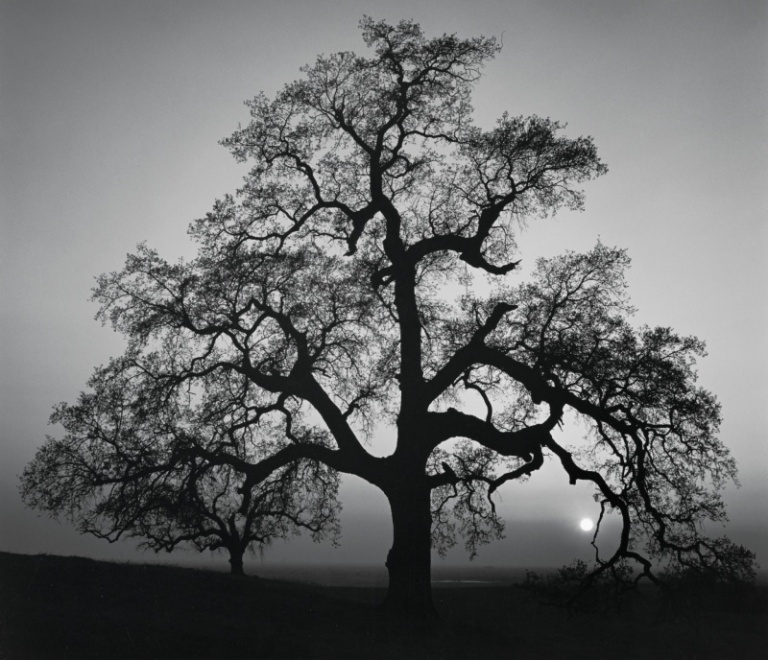
[325] Adams. 346.
[326] Adams. 346.
[327] Adams. 347.
[328] Adams. 348.
[329] Adams. 348.
[330] The interview appeared in the May 1983 edition of Playboy.
[331] Adams. 348.
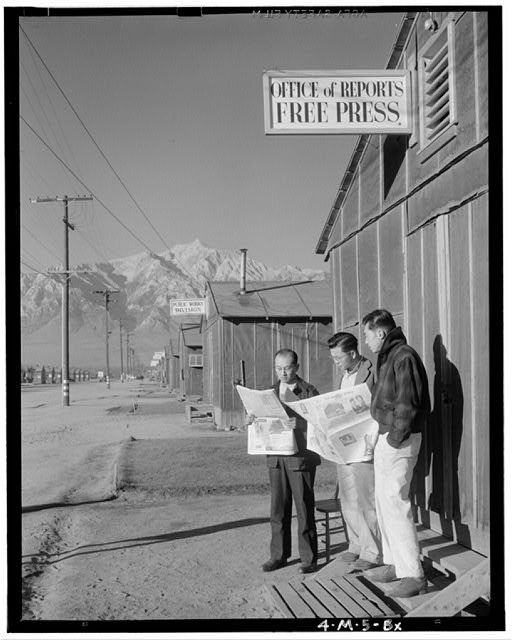
[332] Adams. 348.
[333] Ansel very much appreciated Reagan’s comments on his work.
[334] Adams. 349.
[335] The meeting was set for fifteen minutes but lasted for over fifty-five minutes.
[336] Ansel appreciated Reagan’s kind words for his work.
[337] Adams. 349.
[338] Alinder. 292.
[339] Alinder. 292.
[340] Alinder. 293.
[341] The four pairs of shoes consisted of desert boots, lace-up canvas-and-rubber hiking boots, black dress shoes, and house slippers.
[342] Alinder. 293.
[343] Alinder. 295.
[344] Alinder. 299.
[345] Alinder. 300.

[346] Alinder. 301.
[347] Alinder. 304.
[348] Alinder. 305.
[349] Alinder. 304.
[350] Alinder. 304.
[351] Alinder. 304.
[352] Alinder. 305.
[353] Alinder. 308.
[354] Alinder. 308.
[355] CHF is when the heart is too weak to pump effectively, blood backs up and fluids begin to drown the lungs.
[356] Maggi Weston was the wife of Cole Weston, son of photographer Edward Weston.
[357] Alinder. 310-12.

[358] Alinder. 312.
[359] Alinder. 312.
[360] Alinder. 327.
[361] Alinder. 328.
[362] Ansel always gave credit for creating the Zone System to Professor Fred Archer. They both had a hand in creating the Zone System.
[363] Alinder. 327.
[364] Alinder. 328.
[365] Alinder. 328.
[366] Alinder. 329.

[367] Alinder. 329.
[368] Alinder. 313.
[369] Alinder. 330.
[370] Alinder. 330.
[371] Alinder. 331.
[372] Alinder. 331.
[373] Alinder. 331.
[374] Alinder. 331.
[375] Alinder 332.
[376] Alinder. 332.
[377] Alinder. 332-333.
[378] Alinder. 333.

